
by Chris Limantour | May 26, 2024 | Audi Repair
Driving an Audi can be a delightful experience, however, this fun can turn into fright in a split second. One of the most alarming sights for any driver is the check engine light flashing on the dashboard. It is your car’s way of telling you that something has gone wrong within the vehicle. Before we look at ways you can diagnose a check engine light and some simple fixes you can use to clear its illumination, let’s quickly find out what the check engine light is.
The check engine light (CEL) is a part of your car’s onboard diagnostics system (OBD). When it lights up, it means the car’s computer has detected a problem with the engine or in the emissions system. A check engine light may not point to a specific problem when it comes on, therefore, it is important that you figure out what is going on yourself, with the help of a mechanic.
Common Reasons for Check Engine Light Illumination
The check engine light in your Audi can be turned on for many reasons and it all usually points to a problem that needs to be dealt with. Some of the reasons are the malfunctioning oxygen sensor that is very important for regulating the fuel mixture, the problems with the catalytic converter that reduces the harmful emissions, the faulty spark plugs or wires that cause misfires and poor performance, and the issues with the mass airflow sensor that affects the delivery of fuel. These problems that you may be facing can be solved immediately with effective diagnosis and repair to prevent the occurrence of more serious damage to your Audi.
Steps to Diagnose the Problem
- Check the Gas Cap: The first thing you should do is check the gas cap. Most times, a loose or damaged gas cap can be the cause of the check engine light. Check that it is tight and in good condition. If it is loose, tighten it and check if the light goes off after a few drives. If the cap is broken, change it to a new one. A broken gas cap can lead to the fuel vapors leaking out, which in turn can affect the car’s emissions system.
- Use an OBD-II Scanner: An OBD-II scanner can retrieve the diagnostic trouble codes (DTCs) that are stored on your car’s computer. These codes can assist in the detection of the issue. You can buy a scanner or go to a mechanic who can do the scan for you. The scanner connects to a port under the dashboard and gets the codes that identify the problem. This is a very important step since it provides you with the particular details of what might be the problem with your car.
- Perform a Visual Inspection: Open the hood and look at the engine parts. Look for any obvious signs of damage, such as broken or corroded parts, loose wires, or leaks. The oxygen sensor, spark plugs, and wiring should not be forgotten. These are the common causes of the check engine light being on. Be on the lookout for anything that seems or feels odd or broken.
- Consult a Professional: If you are not able to figure out or solve the problem by yourself, then it is time to ask a professional. A skilled technician will have the tools and knowledge to find and fix the problem in a precise way. They can analyze the DTCs and do more tests if required. They will also be able to use the detailed repair manuals and technical service bulletins which can give them the necessary information about the problems of your car model.

Contact The Professional Audi Repair Shop In Hellertown
At JCL Automotive, our technicians are known as the most dependable experts in the Hellertown area when it comes to serving the most popular European cars and we offer 100% quality maintenance that makes sure you are always on the road with an Audi that you can trust. We have been doing a good job for Audi drivers in the area since 2005 and our service quality has not gone down till now.
If you have seen the annoying CEL on your Audi dashboard and you want to know why it has come on, you are in the right place. Our authorized mechanics will make sure that the problem is not only found but also repaired correctly. If you stay in Hellertown, PA, or the nearby cities, just call us on 484-851-3390 to reserve an appointment with our Audi experts.

by Chris Limantour | May 9, 2024 | BMW Repair
Engine ticking is a sound that you get from the BMW engine, particularly when the car is at idle or when you are accelerating. This sound can range from a minor clicking sound to a louder ticking sound. It is usually described to be similar to the sound that is produced by a sewing machine.
This ticking noise can be somewhat alarming, but knowing why it occurs and when you should be concerned is crucial. Below is a guide to how you can handle BMW engine ticking issues.
What Causes Engine Ticking in BMWs?
- Faulty Lifters: Valves are used in the engine and lifters assist in opening and closing of the valves. If they get damaged or become old they can produce a ticking sound. Lifters depend on the oil pressure to function effectively and when there is a slight variation, then you will hear this irritating noise.
- Fuel Injectors: Your BMW fuel injectors can also cause a ticking sound. The injector usually gives a sound when it is running as it strives to inject fuel into the engine’s cylinders. However, if the ticking noise increases beyond the normal levels, it may be an indication of a problem such as the build-up of dirt or a faulty mechanism influencing the injectors.
- Exhaust Leaks: An exhaust leak can cause a ticking sound especially when the engine is cold. This noise is usually because of a crack or hole in the exhaust manifold or because of a leak at the manifold gasket. The sound could decrease as the metal part warms up but that is not a solution to the problem because the leak has to be fixed.
- Timing Chain Issues: Timing chain ensures that the valves and pistons of the engine are always moving in harmony. The chain might become loose or worn and cause a ticking sound.
Tips for Repairing Engine Ticking Problems
- Top Off or Change the Oil: If the ticking noise is because of low oil then pouring oil to the right level can help to solve the problem. You should also make sure that the oil is changed if needed. Selecting the appropriate oil for your BMW is significant in the proper working of the engine and its durability. The type of oil to use and the time to change it depends on the vehicle owner’s manual.
- Replace Hydraulic Lifters: In a case where worn or clogged lifters are the cause of the ticking noise, then the hydraulic lifters will have to be replaced. Hydraulic lifters are very important in ensuring that there is adequate clearance between the valves and the camshaft. If they fail, a noticeable ticking sound is produced by the vehicle’s engine. Replacing hydraulic lifters is often a complicated procedure that requires the dismantling of some of the engine components; so, it is always advisable to consult a professional mechanic to have the work done.
- Repair or Replace the Timing Chain: If the timing chain is slippery or slack, then it may need to be adjusted or replaced. This is a major repair job that usually needs an auto mechanic.
- Fix Exhaust Leaks: If you have diagnosed your BMW with an exhaust leak, then you can fix the exhaust manifold gasket or the manifold to eliminate the ticking sound. It has the potential to enhance the performance and efficiency of the engine as well as the overall performance of the vehicle.
- Clean or Replace Fuel Injectors: If the sound being produced is from the fuel injectors, then it means it might be dirty and will require a cleaning or a replacement. Deposits in injectors can be removed with special injector cleaning fluids or by taking them to a reputable service provider.

Find Out Why BMW Drivers Trust Us In Hellertown
If you are looking for an automotive shop that you can trust for your BMW, Audi, Mercedes, and Tesla repair in Hellertown, PA, then you should come to JCL Automotive. We are equipped with all the necessary tools to perform all services to the highest standard required in the automobile industry.
It is recommended that you take your BMW to a mechanic as soon as you hear any strange or loud sound. Prevention is better than cure, therefore early detection and repair will help avoid more severe problems later on. Give us a call today at 484-851-3390 for BMW inspection and repair.
* Man Driving BMW 7 Series Car image credit goes to: Alexandr Baranov.

by Chris Limantour | Apr 22, 2024 | Mercedes Repair
If you are experiencing a strange oil leak under your Mercedes or your transmission fluid is running short, you might be dealing with an oil seal leak. Let’s talk about a few simple ways to detect a leak in your Mercedes transmission oil seal and how to preserve your vehicle with proper maintenance. However, before going ahead with the details, let us cover the fundamentals.
What Purpose Do Transmission Oil Seals Serve?
Transmission oil seals are rubber or metal seals that stop transmission fluid from leaking out of the transmission casing. Their role is to keep the level of fluids intact and to facilitate the smooth working of the transmission parts. Once the seals get broken, the transmission fluid leaks out which consequently can damage the transmission. Before you can fix this problem, you must first identify the cause of the leak.
How To Identify Oil Seal Leaks In The Transmission System
- Fluid Leaks: The most visible symptom of transmission oil seal leakage is fluid leaking under your car. Transmission fluid is usually red or brown in color and possesses a distinct odor. If you come across a puddle near the transmission zone under your car, then it’s most likely a leak in your transmission oil seal. Note that transmission fluid leaks may also come from other areas of the transmission, so to prevent any further damage it is necessary to locate the source of the leak before taking any action.
- Low Fluid Levels: If the Mercedes transmission oil seal is leaking, you might see a drop in the level of transmission oil. Make sure you check your transmission oil regularly and supplement the fluid if the need arises. Low levels of transmission fluids may cause the transmission to be harder when shifting or lead to transmission component damage. If your transmission fluid reservoir needs to be filled up all the time, then you have a leak and it should be inspected.
- Burning Smell: A third sign of a transmission oil seal leak is a burning smell that may emanate from either your car’s engine or the transmission area. The smell of burning comes from the transmission fluid that has leaked onto burning-hot engine parts or exhaust systems. In the event of a burning smell in your Mercedes, you should find out the source and fix the leaks as soon as possible.
- Transmission Performance Issues: Pay special attention to your transmission’s performance. Watch out for sounds that you have never heard before such as whining, grinding, or clunking. They are mostly loud when shifting gears. A squeaking or grinding noise could possibly mean a broken transmission oil seal, which results in leakage of oil and consequently, creates rough gear shifting. Similarly, if your transmission feels laggy, unresponsive, or rough shifting, you should get a good mechanic. They can detect the cause of the problem and suggest the proper repairs so your Mercedes can function perfectly.
How To Address Oil Seal Problems In Your Transmission System
If you think the oil seal in your Mercedes transmission has been compromised, the best thing to do is to take the car to a repair shop. Your mechanic will then find the place where the leak is coming from and fix it by placing a new seal. Before the seal replacement, it is a good idea to flush the old transmission fluid from the system so as to remove dirt that may have entered due to the leak. After that, you can then add new fluid to the required level. Make sure the task is carried out by a certified mechanic.

Call JCL Automotive For Your Mercedes Repairs
At JCL Automotive, we are proud to be number one in the repair of Mercedes and other European cars. We have a workshop that is well-stocked to handle any Mercedes problem you may have.
Whether you suspect an oil leak or encounter any other transmission problems we have skilled technicians who are ready to assist. As a local company serving drivers in the Hellertown, PA area, we are dedicated to providing first-class customer service and getting you back on the road safely. No need for second thoughts, just call us today and you’ll see how efficient our services are.

by Chris Limantour | Apr 5, 2024 | Mercedes Repair
Are you feeling hot in your Mercedes despite cranking up the AC? It could be a sign that something is wrong with your car’s evaporator temperature sensor. This sensor works like a small thermometer to keep an eye on how cold the air is as it passes through your car’s air conditioning system. It tells your Mercedes computer if it needs to cool things down more or ease up to keep the temperature inside your car just right. So, it’s basically helping to make sure you stay comfortable by not letting it get too cold or too warm inside your Mercedes. If this component fails, you’re going to feel the difference.
Factors That Make Evaporator Sensors Fail
- Contamination: Since the evaporator sensor is located inside the air conditioning system, it is exposed to all kinds of dust and tiny bits of contaminants floating around. When this sensor becomes very dirty, it will not be able to tell the correct temperature and this might make your AC not work as you want it to.
- Leaks: Your AC system has a special kind of fluid called refrigerant that helps it cool down the air. If there’s a leak and the fluid becomes too low, the part of the AC that is near the sensor can turn into a block of ice. This freezing can mess up the sensor or even damage it. Also, if the leaky fluid gets on the sensor, it can make it corroded and rusty over time.
- Wiring Problems: Just like your lights at home need good wiring to work, the sensor needs to be well-connected to do its job. If the wires are bad or there’s some corrosion, the sensor might get or send the wrong messages, giving you terrible temperature readings or it might even stop working altogether.
How To Deal With Evaporator Sensor Failure
- Identify the Problem: The first sign of an evaporator temperature sensor failure might be your car’s air conditioning (AC) not cooling properly or fluctuating temperatures. You might also notice that the AC turns off unexpectedly. These symptoms suggest it’s time to check the sensor.
- Diagnosis: If you think something is wrong with the part of your Mercedes that tells the air conditioning how cold to get (that’s the evaporator temperature sensor), then a mechanic may need to do a diagnostic test. They will connect your Mercedes to a computer that can read the condition of the electronic systems in your car and tell (using an error code) if there are any messages that confirms there’s something wrong with the A/C or sensor.
- Inspection: After the computer checks to determine what the problem is, the next step is for your trained mechanic to take a peek inside your car to find the sensor. The evaporator temperature sensor is usually found near the evaporator core inside the dashboard of your Mercedes. During this inspection, your mechanic is looking to see if they’ll find damaged, unplugged, or old looking parts.
- Replacement: If they find out that the sensor is not working as it should, then it’s time to take out the old sensor and replace it with a new one. This task can be a bit of a puzzle because the sensor is in a hard-to-reach spot. That’s why it’s a good idea to let someone who knows Mercedes cars well do this part.
- Testing: With the new sensor in, the mechanic will turn on the AC to check if it’s keeping your Mercedes cool as it should and not acting up anymore.
- Maintenance: To avoid this kind of trouble in the future, it’s important to take good care of your Mercedes’s air conditioning. This means doing things like cleaning out the filters and getting them checked regularly according to the intervals recommended by your mechanic or your car’s manual. This helps to catch any problems early so your car’s AC keeps you cool without any surprises.

Let JCL Automotive Be Your Go-To Mercedes Repair Shop
At JCL Automotive, we’re good at fixing and taking care of Mercedes cars. Our team works hard to make sure your car is well looked after. We have our garage located to serve Mercedes owners in Hellertown, PA, and the surrounding areas with any air conditioning problems, including those tricky evaporator sensor failures. Don’t let AC issues keep you from enjoying your drive. Book an appointment with us now.
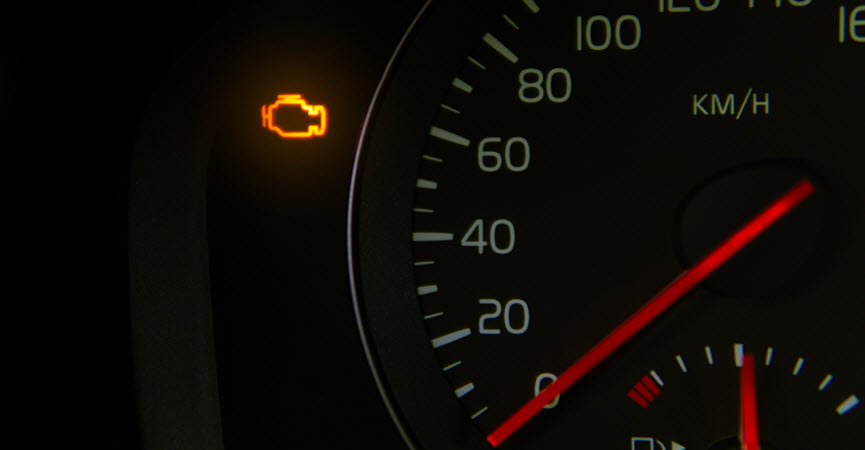
by Chris Limantour | Mar 19, 2024 | Audi Repair
The best part of owning a high-end luxury vehicle like an Audi is that you’ll get noticed. Your status in society will be elevated to such a point that people in your neighborhood will respect and admire you. But, there is a catch… as with any other vehicle, your Audi is susceptible to different problems- the most notable being the flashing of the check engine light.
So, what can prompt your Audi’s check engine light to start flashing and what could you do to diagnose the issue before it turns into an expensive repair??? Let’s discuss…
Common Reasons Your Check Engine Light May Be On
Being a part of your Audi’s onboard diagnostic system, the check engine light essentially comes on when a glitch is detected by the onboard computer in one of the crucial parts of the powertrain system or in the emissions control system. What kind of glitch, you asked? Well, let’s find out…
#1- Oxygen sensor failure
Mounted on the exhaust pipe, the oxygen sensor measures the concentration of oxygen gas in the exhaust emission. This real-time measurement of oxygen concentration, in turn, helps the engine control unit or ECU in keeping the air-to-fuel ratio inside the cylinder balanced. Should a sensor of such significance fail, the engine will perform poorly. This can lead to the illumination of check engine light.
#2- Catalytic converter issue
The catalytic converter is entrusted with a very simple task- which is to treat the exhaust emission before releasing it to the environment. This after-treatment device is the reason why your Audi meet emission regulations. If it fails, you will have to deal with all sorts of drivability issues. And, yes… you may even end up with a flashing check engine light.
#3- Defective MAF sensor
Just like there are sensors in place to monitor exhaust emissions, there is a set up to track and regulate air flow into the engine. Placed between the throttle body and air filter, the Mass Air Flow sensor is an important part of that arrangement. The data provided by this sensor helps the ECU in keeping the air-to-fuel proportion inside the combustion chamber close to ideal. A glitch in a sensor of such significance may set off your Audi’s check engine light.
#4- Loose gas cap
Another notable explanation as to why your Audi’s check engine light may start flashing is a loose gas cap. For those who don’t know, the gas cap is an important part of a vehicle’s evaporative emissions control system. And, the onboard diagnostic system of your Audi is programmed to warn you by setting off the check engine light- should something unusual happen to the gas cap.
Illuminated Check Engine Light: Resetting Tips
You may end up with expensive repairs if you decide to ignore such a warning indicator. So, you better try to figure out what went wrong with your Audi that set off the check engine light and have it fixed ASAP. Listed below are a few steps that you can follow to reset your Audi’s check engine light.
#1- Retrieve trouble codes
Use an OBD-II scanner to retrieve the trouble code stored in the fault memory of your Audi. The code will reveal a lot about the nature of the issue you are dealing with and may even help you reset the light. In addition to the use of OBD-II scanner, there are many different methods that you can make use of to reset the light.
#2- Contact a professional
If you are not handy with tools, you should take your Audi to a reliable service center in your locality to get the issue diagnosed. Professionals working in the service center are well equipped to deal with such issues. After thorough inspection, they will able to tell you the exact reason that prompted the onboard diagnostic system to activate the check engine light.
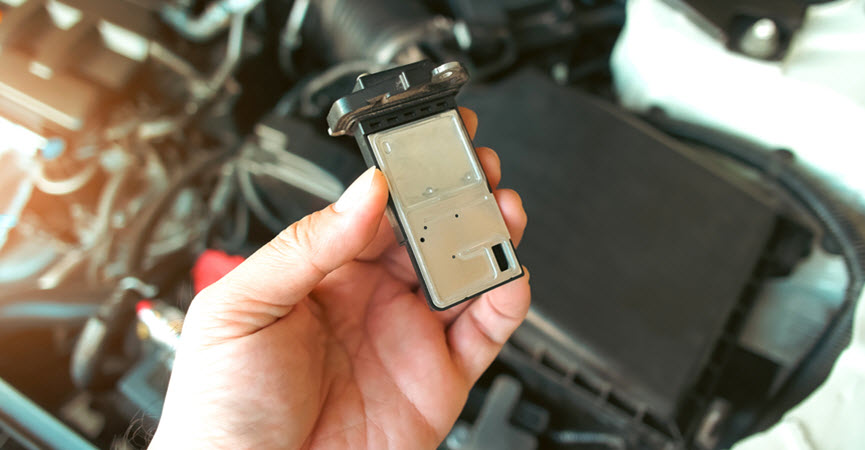
Our Audi Mechanics At JCL Automotive Can Help
More often than not, a blinking check engine light suggests a minor glitch such as a loose gas cap, a bad oxygen sensor, etc… But on occasion, the appearance of such a light signifies a serious engine issue that requires the attention of a professional.
JCL Automotive is your go to service center in Hellertown, PA– when it comes to addressing Audi check engine light issues. Professionals working in our facility have years of experience in automotive sector and specialized in dealing with complex issues in European cars especially Audi, BMW, and Mercedes. Feel free to contact us and let us reset your Audi’s check engine light.

by Chris Limantour | Mar 2, 2024 | BMW Repair
Of late, have you been battling a stalling issue when driving your BMW??? From a carbon fouled spark plug to a clogged fuel injector; there are all sorts of reasons why your engine may behave this way. High pressure fuel pump (HPFP) failure is one possibility. Yup, you read that right… a glitch in your BMW’s HPFP may contribute to repeated stalling. Some of the other common complications that you might have to deal with if your vehicle’s HPFP gives up have been discussed below.
BMW High Pressure Fuel Pump Malfunction: Discussing Complications
Being a key component of your BMW’s fuel system, HPFP is entrusted with a very simple task… which is to deliver pressurized fuel (2,200 to 3,000 PSI) to the injectors. It is because of this part that your BMW engine operates with such a high efficiency. Should this device give up, you will encounter all sorts of drivability problems.
#1- No-start issue
Reviving your BMW engine won’t be an easy task if there is something off with its HPFP. Fuel, air, and electric sparks: these are three ingredients that an internal combustion engine need to start the combustion process so that mechanical torque can be produced. If the HPFP is defective, the engine won’t get enough fuel to initiate the ignition process.
#2- Engine misfire
This is yet another major issue that you might have to deal with because of a defective HPFP. Engine misfire can be defined as a condition when one of the cylinders doesn’t fire the way it is supposed to. Some of the hurdles that may contribute to engine misfire in a BMW include a worn spark plug, a damaged fuel injector, a malfunction in the air-intake system, and yes… a defective HPFP.
#3- Sudden power loss while driving
Off late, has your BMW been struggling to run at a steady speed??? If so, there is a good chance that its HPFP has given up. HPFP is the reason why your car engine gets all the fuel it need to provide you with the requisite torque. If the engine doesn’t receive the necessary amount of fuel because of a defective HPFP or any other reason, your BMW will have a hard time operating at a steady speed.
#4- Increased fuel consumption
Are you getting poor gas mileage? As strange as it may seem, a defective HPFP may prompt your BMW to burn fuel at an alarming rate. The issue will only get worse over time. So, if you don’t want this unexpected drop in your BMW’s gas mileage, ensure the upkeep of its fuel pump.
Leading Causes Of High Pressure Fuel Pump Failure In BMW Cars
#1- Mechanical damage
The HPFP your BMW comes fitted with is a very complicated device made up of many different parts including a pressure spring, pressure control valve, coil body, oil seal, mounting flange, roller tappet, etc… If for some reason the pressure control valve acts up or the pressure spring gets damaged, the HPFP’s ability to provide pressurized fuel to the injectors will drastically reduce.
#2- Contaminants
This is yet another leading reason behind HPFP failure in BMW cars. Being a mechanical device made of numerous metallic parts of different shapes and sizes, HPFP can malfunction if gets exposed to contaminants. Fortunately, there are many different things that you can do to safeguard your vehicle’s HPFP against foreign elements.
#3- Lack of lubrication
Not using the right type of lubricant, as recommended by the manufacturer, can also result in premature HPFP failure in a BMW car. It is therefore important that you check on your vehicle’s lubricants from time to time and make sure that the engine and other important parts of your BMW never run low on lubricant.
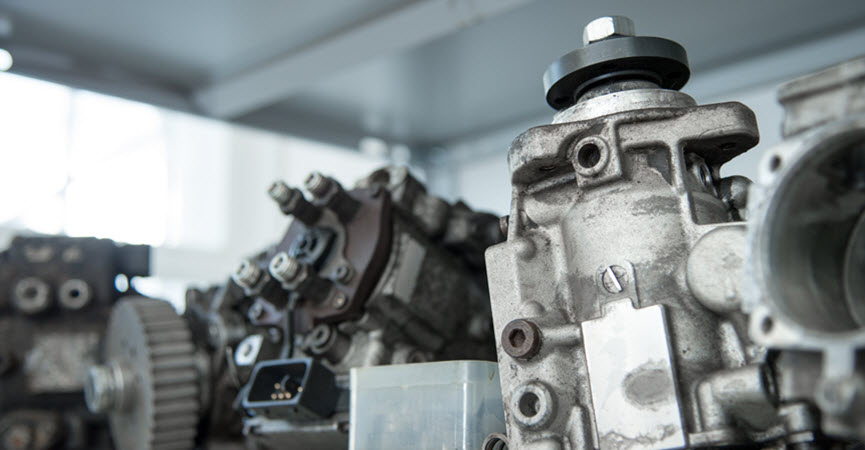
Fix Your BMW’s High Pressure Fuel Pump Issues At JCL Automotive
You will battle all sorts of drivability problems if your BMW’s high pressure fuel pump malfunctions. Located in Hellertown, PA, JCL Automotive is your go-to destination when it comes to addressing high-pressure fuel pump related issues. Professionals employed in our service center have years of experience in repairing European vehicles- especially Audi, BMW, and Mercedes.
Contact us today and book an appointment to have your BMW’s high pressure fuel pump checked by our certified professionals. You won’t be disappointed.

by Chris Limantour | Feb 14, 2024 | Mercedes Repair
Do you suspect a breach in the electrical system of your Mercedes? Maybe it’s time to check your car’s fuses. Aluminum fuses in a Mercedes electrical system are like the safety valves in your home’s electrical outlets. Just as those safety mechanisms prevent too much electricity from flowing into your appliances and causing damage, aluminum fuses protect your car’s electrical components. They’re made from aluminum because it’s an excellent conductor of electricity, which means it allows electrical current to flow through easily and efficiently, but blocks off excess of it.
What Makes Aluminum Fuse Fail?
Corrosion
Aluminum fuses are kind of like tiny knights guarding the castle of your car’s electrical system. They’ve got this cool armor – a protective layer – that usually keeps them safe from all the harms out there like moisture, road salt, and even some of those harsh chemicals floating around in your car.
When that protective layer gets damaged, corrosion sneaks in like a thief in the night, starting to mess with the fuse and its ability to keep the electricity flowing smoothly. This whole corrosion incident doesn’t happen overnight; it’s more like a slow process. But even at that pace, it can lead to some seriously annoying electrical problems or even leave you in the lurch with a full-on system ghosting.
Overloading
Every fuse is built to handle only so much and when you exceed that capacity, expect a break. Overloading your car’s aluminum fuse is like giving one tiny thread the job of lifting a bowling ball. When your Mercedes’ electrical demands increase, the poor little fuse gets overwhelmed. The inside of the fuse starts getting hot, really hot, because it’s trying to fight off all that extra electricity coming its way.
Environmental Factors
Extreme temperatures, be it the scorching heat of summer or the biting cold of winter, can push your fuses beyond their limits, leading to failures. This sensitivity to temperature changes makes fuses somewhat like the divas of the car component world; they perform best under just the right conditions.
In the heat, materials expand, including the metal in fuses, potentially altering their electrical resistance or even causing physical distortions that lead to breaks in the circuit. Conversely, extreme cold can make materials brittle and more susceptible to damage from vibrations or sudden impacts. Just as we might layer up or strip down with the changing seasons to stay comfortable, fuses too are affected by their environment, albeit with less ability to adapt. Instead of changing their “clothes,” they rely on us to monitor their condition and protect them from these environmental stresses.
You Might Need a Hand with Those Fussy Fuses
Fuses might be small, but their issues can lead to big headaches. If the thought of diving into your car’s electrical system feels like trying to solve a Rubik’s cube blindfolded, it might be time to tag in the pros.
Finding a mechanic who really gets Mercedes vehicles can make all the difference. They’ve got the skills to spot what’s off and fix it without breaking a sweat. Going pro means getting a thorough check-up, fixing what’s wrong, and keeping your ride running smoothly and safely. It’s also a great way to make sure your beloved car stays in good shape for the long haul. So, if fuses are causing you fuss, let a qualified mechanic take the wheel!
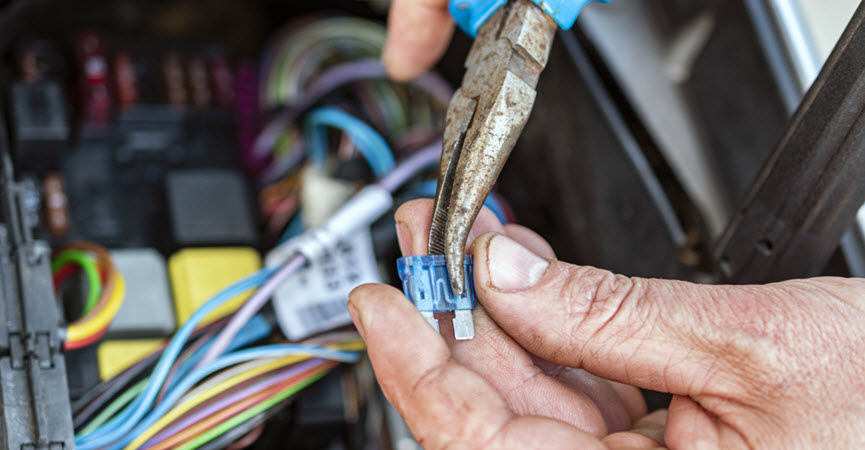
Call Our Mechanics For Quality Mercedes Repairs
If you’re a Mercedes owner looking for a place that knows your car inside and out, JCL Automotive is your go-to spot. We’ve been the top choice since 2005, and it’s all thanks to the one-of-a-kind service we provide. Our shop in Hellertown, PA, is decked out with all the latest Mercedes gear to handle whatever your ride needs.
Do you have an issue with your Mercedes aluminum fuse? Don’t sweat it. We’ve got the expertise to get it sorted in no time. We’re just a call away, dial our service line, and let’s set up a time to get your Mercedes feeling like itself again. Book your appointment now!

by Chris Limantour | Jan 28, 2024 | BMW Repair
When it comes to maintaining the optimal performance of your BMW, understanding the health of various components is crucial. One such component is the front tension strut bushing, often overlooked but vital for vehicle stability and handling.
Understanding Front Tension Strut Bushings
Before diving into the symptoms of failure, it’s important to understand what front tension strut bushings are and their role. These bushings, made of rubber or polyurethane, are integral parts of your BMW’s suspension system. They cushion and reduce friction between the metal parts of the suspension, aiding in absorbing shocks from road irregularities and contributing to a smoother ride.
Common Signs of Failure
- Unusual Noises: One of the first signs you might notice is unusual noises coming from the front of the vehicle, especially when driving over bumps or during turning. These can be clunks, creaks, or banging sounds. These noises occur because the bushing, which usually acts as a buffer, is worn out, causing metal-on-metal contact.
- Vibrations and Steering Wheel Shuddering: As the bushings wear out, you may feel vibrations through the steering wheel, particularly at higher speeds or when accelerating. This happens because the bushings are no longer effectively damping the vibrations from the road.
- Imprecise Steering: Worn bushings can lead to a lack of steering precision. You might find that your BMW doesn’t handle corners as well as it used to, or there’s a noticeable delay in steering response. This is because the bushings, which help maintain proper alignment of suspension components, are no longer performing effectively.
- Uneven Tire Wear: Another symptom of failed bushings can be uneven tire wear. Since the bushings help keep the wheels aligned, their failure can lead to misalignment, resulting in uneven wear on your tires.
- Visual Inspection: Sometimes, the bushing wear can be evident upon visual inspection. If you see cracking, tearing, or fluid leakage around the bushing, it’s a clear sign that they need to be replaced.
Why It Matters
Ignoring these signs can lead to more significant issues. Worn bushings affect the handling and stability of your BMW, which can compromise your safety. Additionally, the longer these problems are left unaddressed, the more likely they are to cause damage to other suspension components, leading to more expensive repairs.
Diagnosis and Repair
If you suspect your BMW has front tension strut bushing failure, the best course of action is to have it inspected by a qualified mechanic or a BMW specialist. They will be able to confirm the diagnosis and replace the bushings if necessary. It’s worth noting that the complexity of BMW’s suspension system often requires specialized knowledge and tools.
Preventive Measures
Preventive maintenance can help extend the life of your front tension strut bushings. This includes regular inspections, proper wheel alignments, and avoiding harsh driving conditions when possible. Additionally, being aware of the type of bushings your BMW uses can also be beneficial. For example, polyurethane bushings may offer longer life and better performance but may also come with a firmer ride compared to rubber bushings.
Maintain Your BMW’s Performance And Safety
Keeping an eye out for the signs of front tension strut bushing failure in your BMW is crucial for maintaining its performance and safety. Unusual noises, vibrations, steering issues, and uneven tire wear are key indicators.
Regular inspections and timely repairs are essential in preventing more significant issues down the road. By staying attentive to these signs, you can ensure your BMW continues to deliver the exceptional driving experience it’s known for.
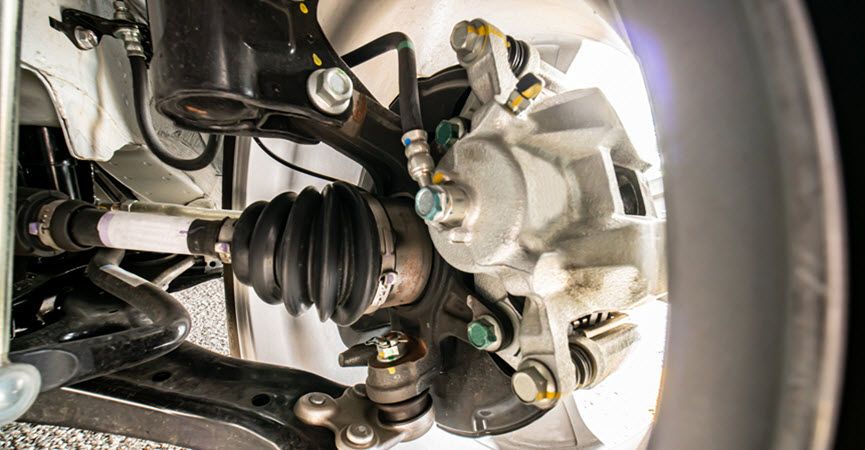
Contact JCL Automotive Today
Contact us at JCL Automotive, situated in the heart of Hellertown, PA, for expert solutions to your BMW’s front tension strut bushing failure. Our team of specialized technicians is adept in handling this specific issue, ensuring that your BMW regains its optimal performance and smooth handling. The front tension strut bushing is crucial for maintaining the stability and alignment of your vehicle, and its failure can lead to uneven tire wear, poor handling, and an uncomfortable ride.
At JCL Automotive, we use state-of-the-art tools and genuine BMW parts to guarantee a high-quality repair. Don’t let a faulty front tension strut bushing compromise your driving experience. Reach out to us for professional, reliable service that restores your BMW to its pristine condition.

by Chris Limantour | Jan 11, 2024 | Mercedes Repair
Mercedes-Benz is renowned for its commitment to quality, innovation, and luxury in the automotive industry. While the German automaker consistently produces vehicles of exceptional craftsmanship, even the finest automobiles may experience issues over time.
One common problem that Mercedes owners may encounter is plastic guiderail failure. These guiderails play a vital role in the smooth operation of various vehicle components, and their failure can lead to a host of problems.
Signs Of Mercedes Plastic Guiderail Failure
1. Unusual Engine Noises
One of the initial signs of plastic guiderail failure in your Mercedes-Benz is the presence of unusual engine noises. These noises may manifest as clicking, rattling, or tapping sounds when you start the engine or accelerate. Plastic guiderails are typically found in the timing chain system, which is responsible for synchronizing the engine’s various components. When these guiderails begin to wear or break, they can cause the timing chain to lose tension, resulting in the aforementioned noises. Ignoring these sounds can lead to more severe engine problems, so it’s essential to investigate the issue promptly.
2. Reduced Engine Performance
A noticeable reduction in your Mercedes’ engine performance is another indication of plastic guiderail failure. As the guiderails deteriorate, they can negatively affect the engine’s timing and lead to a decrease in power and efficiency. You may experience a loss of acceleration, reduced fuel economy, and overall sluggish performance. This decline in engine performance not only affects your driving experience but can also lead to costly repairs if left unaddressed.
3. Check Engine Light
Modern Mercedes-Benz vehicles are equipped with sophisticated onboard diagnostic systems that can detect a wide range of issues, including plastic guiderail failure. When the system detects a problem related to the timing chain or guiderails, it will trigger the check engine light on your dashboard. Ignoring this warning sign can be detrimental, as it may indicate more extensive damage if the problem persists. It’s crucial to have the vehicle inspected and diagnosed by a qualified technician as soon as the check engine light illuminates.
4. Engine Misfires
Engine misfires can occur when plastic guiderail failure affects the timing chain’s operation. Misfires typically manifest as a noticeable vibration, hesitation, or loss of power while driving. If you experience any of these symptoms, it is essential to have your Mercedes-Benz inspected immediately. Ignoring engine misfires can lead to further damage and result in costly repairs.
5. Oil Leaks
Plastic guiderail failure can also lead to oil leaks in your Mercedes-Benz. The timing chain system relies on proper lubrication to function smoothly. When the guiderails fail, they can disrupt the oil flow to critical engine components, leading to leaks. Oil leaks are not only messy but can also be a fire hazard if the oil comes into contact with hot engine parts. Regularly check your vehicle’s oil level and look for any signs of oil leaks beneath the engine.
6. Rough Idling
If you notice that your Mercedes-Benz idles roughly or inconsistently, it may be a sign of plastic guiderail failure. The timing chain’s irregular operation can cause the engine to idle poorly, leading to a rough or unstable idle speed. This symptom can be particularly noticeable when the vehicle is stationary or at a standstill. Addressing rough idling promptly can prevent further damage and ensure smoother engine operation.
7. Reduced Fuel Efficiency
Plastic guiderail failure can impact your Mercedes-Benz’s fuel efficiency. When the timing chain system is compromised, it can lead to poor combustion and inefficient fuel consumption. If you notice a significant drop in your vehicle’s miles per gallon (MPG), it may be due to this issue. Lower fuel efficiency not only costs you more at the pump but also contributes to increased emissions and environmental impact.
Maintain The Performance And Longevity Of Your Mercedes
Recognizing the signs of plastic guiderail failure in your Mercedes-Benz is essential for maintaining the performance and longevity of your vehicle. Addressing these symptoms promptly can prevent further damage and costly repairs.
If you encounter any of these warning signs, it is crucial to schedule a diagnostic evaluation with a qualified Mercedes-Benz technician. Regular maintenance and timely repairs will ensure that your Mercedes-Benz continues to deliver the exceptional driving experience and reliability that it is known for.

Contact JCL Automotive Today
Contact us at JCL Automotive, conveniently located in Hellertown, PA, and entrust your Mercedes plastic guiderail repair to our skilled professionals. With our commitment to quality and expertise in Mercedes-Benz repairs, we are dedicated to ensuring the safety and longevity of your vehicle.
Don’t hesitate to reach out today, and let us provide you with exceptional service that exceeds your expectations. Your Mercedes deserves nothing less than the best, and at JCL Automotive, we deliver just that.
* Mercedes AMG Car image credit goes to: teddyleung.

by Chris Limantour | Dec 25, 2023 | Audi Repair
Have you ever noticed damp odors or unanticipated leaks inside your Audi, especially during rainy days? If so, the culprit might be hiding above – in the sunroof drains. While sunroofs are a cherished feature among Audi enthusiasts, they demand attentive care, particularly when it comes to their drainage system. Issues with sunroof drains can manifest as unexpected leaks or peculiar smells, requiring a closer look and proactive maintenance to ensure your driving experience remains enjoyable and hassle-free.
Common Causes of Clogged Sunroof Drains in Audis
- Debris Accumulation: Over time, dust, dirt, and other residues can accumulate within the sunroof’s drainage system. These sediments, combined with moisture, can form a sludgy buildup. This buildup gradually impedes the smooth flow of water through the drainage system, obstructing the drainage channels.
- Harsh Weather Conditions: Environmental factors like heavy rainfall or snowfall can exacerbate the blockages in the sunroof drainage. During severe weather, larger particles, such as debris carried by rainwater or snowmelt, can find their way into the drainage channels. These particles, coupled with existing debris, can contribute to blockages, further obstructing the free flow of water.
- Aging Components: With prolonged use and exposure to various elements, the materials comprising the sunroof’s drainage system, such as rubber seals or tubing, can deteriorate over time. As these components age, they may lose their elasticity, become brittle, or develop cracks, which can lead to blockages or leakages within the drainage tubes, reducing their efficiency in expelling water.
- Improper Maintenance: Neglecting routine cleaning of the sunroof’s drainage system when washing your Audi can significantly contribute to blockages. When debris, dust, and other residues are not regularly cleared, they can accumulate and solidify, forming stubborn blockages within the drainage channels. Proper and periodic cleaning of these drainage channels is crucial to prevent blockages and ensure efficient water drainage.
3 Warning Signs of Clogged Sunroof Drains in Audis
Identifying these signs is pivotal to addressing clogged sunroof drains promptly:
- Water Inside the Vehicle: A prominent indication of clogged sunroof drains is the accumulation of water inside the vehicle. Particularly noticeable on the floor or around the interior sunroof area, this pooling is a direct consequence of impaired drainage.
- Damp or Musty Odors: A persistent musty or damp smell within the car signals moisture buildup due to inadequate drainage. This odor often accompanies the accumulation of water, indicating potential drainage issues.
- Visible Leakage: A visible leak through the sunroof during rainfall or after washing the vehicle suggests drainage problems. Water seeping into the interior indicates a compromised drainage system.
Resolving Clogged Sunroof Drain Issues
To effectively address clogged sunroof drains in your Audi, follow these steps:
- Clearing Debris: The first step involves clearing debris from the drain channels. This can be accomplished using various methods such as compressed air to blow out debris, specialized cleaning tools designed for this purpose, or carefully threading a flexible cleaning device through the drainage tubes to dislodge and remove obstructions.
- Flushing the System: After clearing visible debris, flushing the drainage system with water or a mild cleaning solution helps further dislodge any remaining particles and ensures a clean, unobstructed passage for water drainage.
Preventive Measures
To minimize the risk of clogged sunroof drains in your Audi:
- Regular Maintenance: Regularly inspecting and cleaning the sunroof’s drainage system during routine vehicle maintenance is essential for preventing future clogs. A proactive approach helps identify potential blockages early and prevents water accumulation and related damage.
- Avoid Parking Under Trees: When parking your Audi, avoid areas with overhanging trees or locations where debris accumulation is prevalent. Parking away from such areas reduces the risk of debris entering the drainage system.
Resolving Audi’s Sunroof Drain Issues with JCL Automotive
At JCL Automotive, we can help keep your Audi’s sunroof drainage system in the best shape to ensure an uninterrupted and enjoyable driving experience. With over 15 years dedicated to serving European car owners in Hellertown, PA, our technicians have the expertise needed to efficiently tackle any sunroof drain concerns. Whether you’re located in Hellertown or the neighboring areas, you can count on us to provide comprehensive solutions. Reach out to us via phone call or drop by our shop to schedule an appointment with our seasoned experts. Your Audi deserves top-notch care, and we’re here to deliver just that.
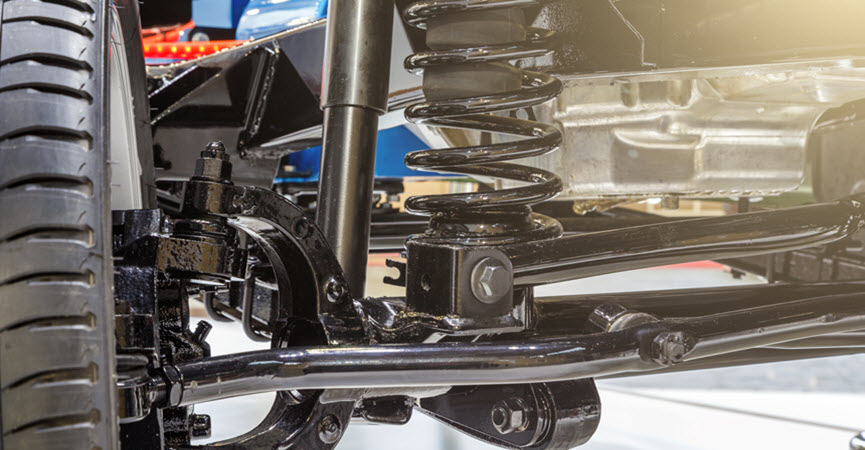
by Chris Limantour | Dec 8, 2023 | Mercedes Repair
Are you a proud owner of a Mercedes-Benz, and you’ve noticed an unsettling rattling sound coming from the rear suspension? You’re not alone. Mercedes rear suspension rattling is a common issue that can be caused by various factors. We’ll explore the key reasons behind this annoying noise and provide insights into how you can address it.
Understanding Mercedes Rear Suspension Rattling
Your Mercedes-Benz is known for its luxury and performance, but even the most well-crafted vehicles can develop issues over time. One such issue is the rattling sound that emanates from the rear suspension, leaving you wondering what’s causing it.
Worn Out Shocks and Struts
One of the primary culprits behind Mercedes rear suspension rattling is worn-out shocks and struts. Shocks and struts play a critical role in maintaining ride comfort and vehicle stability. Over time, they can degrade due to normal wear and tear, causing rattling or clunking noises when driving over bumps or rough roads.
The suspension system is designed to absorb shocks and vibrations, providing a smooth and comfortable ride. However, when the shocks and struts lose their effectiveness, the rear suspension can become less stable, leading to rattling sounds. This issue is often more noticeable when you’re driving at lower speeds or encountering uneven terrain.
Loose or Damaged Suspension Components
Another common cause of rear suspension rattling in Mercedes-Benz vehicles is loose or damaged suspension components. These components, including control arms, bushings, and sway bar links, play a crucial role in maintaining the suspension’s integrity.
When these components become loose or damaged, they can produce irritating rattling or clunking sounds when the vehicle is in motion. Factors such as exposure to harsh weather conditions, road debris, or general wear and tear can contribute to the degradation of these vital components.
To remedy this issue, it’s important to have your suspension system thoroughly inspected by a qualified technician. Loose or damaged components should be replaced promptly to ensure the smooth and safe operation of your vehicle.
Exhaust System Contact
In some cases, Mercedes rear suspension rattling may be attributed to contact between the exhaust system and the suspension components. The exhaust system is a complex network of pipes and components that can sometimes come into contact with the rear suspension due to various factors like misaligned exhaust hangers, loose mounts, or corrosion.
When the exhaust system rubs against the suspension components, it can create an unmistakable rattling sound. This issue often becomes more noticeable during acceleration, deceleration, or when driving over uneven terrain.
A professional inspection of your vehicle by experts like JCL Automotive can help identify the source of the contact and provide a suitable solution, which may involve adjusting the exhaust system or replacing damaged hangers and mounts.
Uneven Tire Wear
Believe it or not, uneven tire wear can also contribute to rear suspension rattling in your Mercedes. When tires wear unevenly, it can affect the balance and alignment of your vehicle, resulting in vibrations and rattling sounds.
To prevent or address this issue, regular tire maintenance and rotations are crucial. Ensuring your tires are properly balanced and aligned can go a long way toward reducing rear suspension noise and enhancing your driving experience.
JCL Automotive – Your Solution to Mercedes Rear Suspension Rattling
When it comes to solving the mysteries of your Mercedes-Benz’s rear suspension rattling, you need a team of experts who understand these iconic vehicles inside and out. That’s where JCL Automotive comes in.
Located in Hellertown, PA, JCL Automotive is a trusted name in the automotive industry, known for our expertise in servicing and repairing luxury vehicles like Mercedes-Benz. With our team of experienced technicians, state-of-the-art equipment, and a commitment to excellence, JCL Automotive is the go-to destination for addressing your Mercedes rear suspension issues.

Whether it’s worn-out shocks and struts, loose suspension components, exhaust system contact, or uneven tire wear, we have the knowledge and tools to diagnose and repair the root causes of the rattling noise. With our meticulous attention to detail, you can trust us to restore your Mercedes-Benz to its optimal condition, ensuring a smooth and quiet ride.
Don’t let rear suspension rattling spoil your Mercedes-Benz driving experience. Contact us today to schedule an appointment and let our experts take care of your vehicle. Say goodbye to that pesky rattling sound and hello to a rejuvenated Mercedes-Benz. Your luxury ride deserves nothing less!

by Chris Limantour | Nov 21, 2023 | BMW Repair
A leak in your BMW’s vacuum hoses can lead to various automotive troubles. The vacuum hose plays a significant role in the operation of numerous systems in your BMW, including power brakes, emission control, and more.
Vacuum hose leaks occur when the rubber hoses in your BMW’s vacuum system degrade, crack, or develop holes over time. Detecting and addressing these leaks is essential, as they can lead to various issues, such as decreased engine power, poor fuel efficiency, and a variety of other operational problems.
How Does the Vacuum Hose System Work?
The vacuum hose system operates on a simple yet fundamental principle: the movement of air and the creation of a vacuum. It’s a network of rubber or plastic hoses that connect to various components throughout the vehicle, particularly the engine. These hoses transport air or vacuum pressure, which is essential for the proper functioning of several systems.
Here’s an overview: The vacuum hose system relies on the engine’s intake manifold to create a vacuum. When the engine runs, it generates a partial vacuum in the intake manifold by drawing in air. The vacuum hoses connected to the intake manifold distribute the vacuum pressure to different components, each with its unique purpose. Some of the main systems that depend on the vacuum system include power brakes, power windows, emission control, HVAC (Heating, Ventilation, and Air Conditioning), and more.
When vacuum pressure is applied, it activates specific components. For instance, in power brakes, the vacuum assists in applying force to the brake pedal, making it easier for the driver to apply brakes effectively.
How To Know If There’s a Vacuum Hose Leak
Identifying a vacuum hose leak can indeed be challenging, as the symptoms can manifest differently depending on which hoses are affected and the extent of the leak. Here are some common signs to watch for:
- Engine Stalling: When there’s a significant vacuum hose leak, the engine might stall or shut off unexpectedly. This occurs because the vacuum system is compromised. The vacuum hose is responsible for providing a controlled vacuum to engine components like the fuel pressure regulator. When there’s a leak in the vacuum hose, it disrupts the balance and can cause the engine to stall due to improper air-to-fuel mixture.
- Difficulty Starting the Engine: The vacuum system helps in maintaining the correct air-to-fuel ratio required for ignition. A leak can lead to an incorrect mixture, causing the engine to crank longer before starting or requiring multiple attempts to fire up.
- Rough Idling: The vacuum hose also maintains engine stability and smooth idling. When there is a vacuum leak, the engine may run unevenly with noticeable vibrations and fluctuations in RPM. The engine struggles to maintain a consistent idle speed, leading to rough idling.
- Hissing Noises: A hissing or whistling sound originating from the engine compartment is a clear indicator of a vacuum hose leak. This sound is the result of air escaping from the damaged or disconnected vacuum hose, and it’s often the first auditory clue that something is amiss with the vacuum system.
- Hard Brake Pedal: In many vehicles, the vacuum hose is connected to the power brake booster, which assists in applying the brakes. If this vacuum hose leaks, you may experience a stiff brake pedal. The power brake booster relies on vacuum pressure to provide added braking assistance.
Fixing Vacuum Hose Leak In BMW
The most straightforward and cost-effective solution for rectifying a vacuum hose leak is to replace the entire hose. Initially, this may appear to be a simple task, and indeed, it is for seasoned mechanics. Nevertheless, if you have limited experience in engine repairs, it is strongly advised against attempting the repair independently, as this could potentially result in harm. Instead, it is recommended to seek the services of a reputable mechanic who can expertly handle the hose replacement procedure on your behalf.
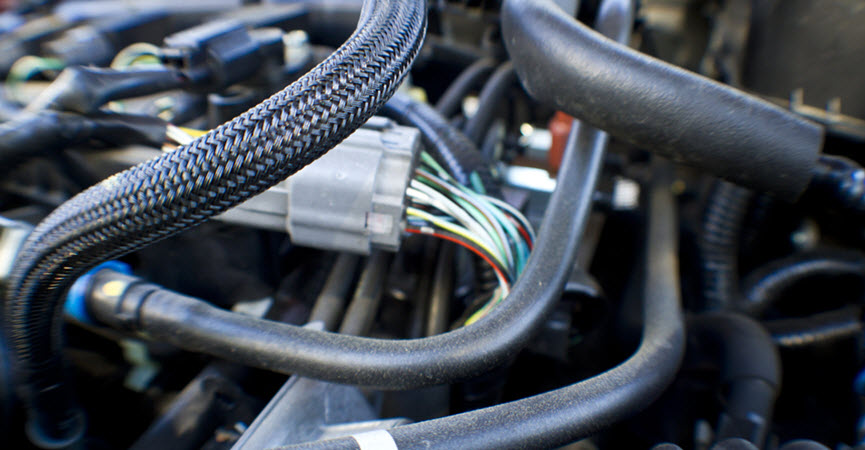
Call On Our Experts at JCL Automotive
At JCL Automotive, we are dedicated to providing expert care for your BMW, especially when it comes to addressing vacuum hose leaks. With a team of skilled professionals and a commitment to serving drivers in Hellertown, PA, and the surrounding areas, we are here to ensure your vehicle continues to run at its best. Call us now to schedule your BMW service.
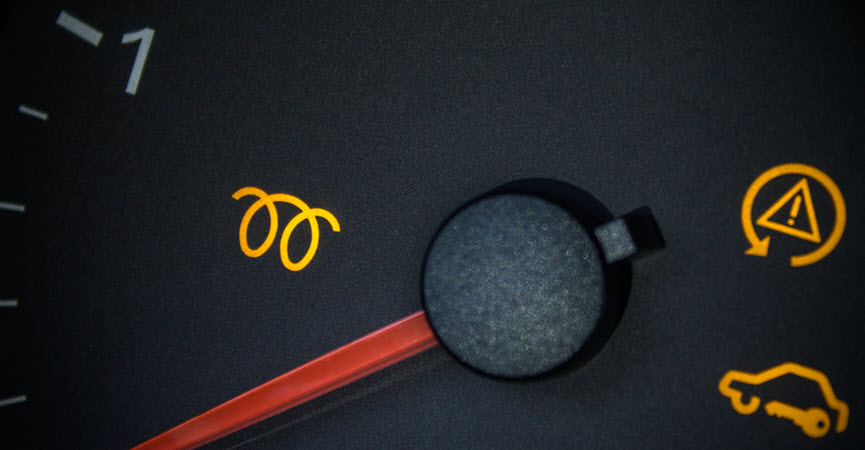
by Chris Limantour | Nov 4, 2023 | Mercedes Repair
As a Mercedes driver, it’s challenging to be well-versed in every component of your diesel engine, but having knowledge of common part failures specific to your make and model is invaluable. One such critical element is the glow plug timer relay, a component that, when functioning correctly, helps to start your engine.
The glow plug timer relay is a small and important component in your Mercedes. Its primary function is to control the duration and timing of the glow plugs’ operation. Glow plugs are vital in diesel engines, especially during cold starts. When you insert the key into the ignition and turn it, the relay springs into action, sending power to the glow plugs. These plugs, in turn, heat up the air in the engine cylinders for a specified duration. This preheating process is essential for facilitating combustion, particularly in colder temperatures.
Once the engine reaches an optimal temperature, the glow plug timer relay performs another crucial task—it shuts off power to the glow plugs. This intelligent operation ensures that the plugs don’t continue drawing power unnecessarily, optimizing energy efficiency and preventing potential issues.
Watch for These Signs of Glow Plug Relay Failure
Difficulty Starting the Engine
One of the primary indicators of a malfunctioning glow plug relay is difficulty starting the engine, especially in colder weather. If your Mercedes takes longer than usual to start or requires multiple attempts, it could be a sign that the timer relay is failing. This struggle to start is often a result of inadequate preheating, which is the relay’s responsibility.
Dashboard Warning Lights
Most Mercedes models come equipped with advanced diagnostics that constantly monitor various systems in the car. Keep an eye on the dashboard for warning lights, such as the malfunction indicator light (MIL) or a dedicated glow plug indicator. The illumination of these lights could be a signal that the glow plug system, including the timer relay, requires attention.
Rough Engine Idle
A failing relay can lead to a rough or inconsistent engine idle. If you notice vibrations or unusual noises while your Mercedes is idling, it might be indicative of a malfunctioning timer relay. The irregular operation can disrupt the engine’s smooth idle, signaling a need for inspection and potential replacement.
The Steps to Identify Glow Plug Relay Failure
Diagnostic Scanning
Employing a diagnostic scanner compatible with your Mercedes model is a proactive step in uncovering potential issues. This scanner accesses the vehicle’s computer system, retrieving stored error codes that could indicate problems within the glow plug system. Specific fault codes related to the glow plug relay can offer precise insights into the issue.
Visual Inspection
A hands-on approach involves visually inspecting the physical condition of the glow plug timer. This inspection entails looking for visible signs of wear, corrosion, damaged wires, or loose connections. Often, a quick visual assessment can reveal evident issues that demand immediate attention, allowing for early intervention.
Testing the Relay
For those comfortable with technical procedures, testing the relay can provide confirmation of its functionality. Using a multimeter, one can measure continuity and ensure proper voltage flow through the relay. Mercedes service manuals often furnish detailed instructions for testing specific components, offering guidance for accurate assessment.
Professional Assessment
When uncertainty looms, or technical expertise is lacking, seeking assistance from a certified Mercedes mechanic or technician is the wisest approach. These professionals possess specialized tools and extensive knowledge to diagnose complex issues accurately. Their expertise ensures a thorough assessment, facilitating precise identification of the problem. The glow plug relay is a sensitive component, so we do not recommend any DIY attempts to diagnose or fix the issue.
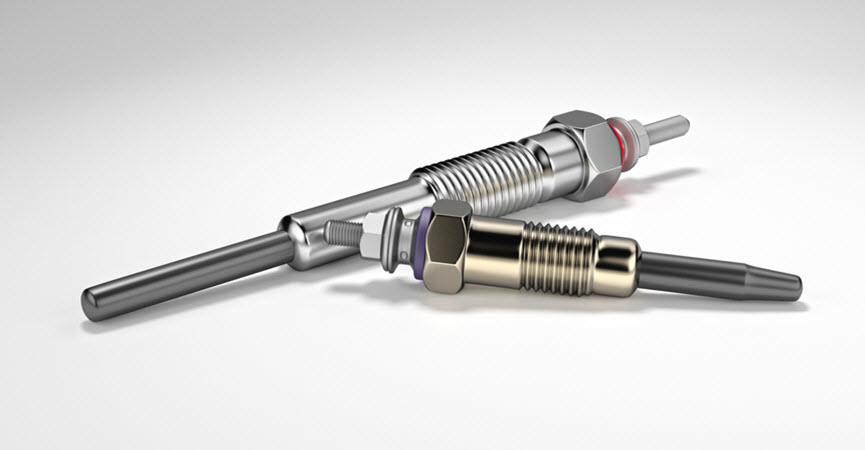
JCL Automotive: Your Gateway to Seamless Mercedes Performance
At JCL Automotive, we’ve been the trusted haven for Mercedes drivers in and around Hellertown, PA, since 2005. Our commitment to excellence is matched only by our passion for delivering top-notch services to keep your Mercedes performing at its peak. Armed with the latest factory-grade tools and unrivaled expertise, our team is primed to tackle glow plug relay failures head-on. We understand the frustration of a hiccup in your Mercedes’ performance, which is why we guarantee swift, reliable, and same-day services whenever possible. Your time matters, and we can ensure a seamless experience so you can get back on the road swiftly and confidently. Book an appointment today.
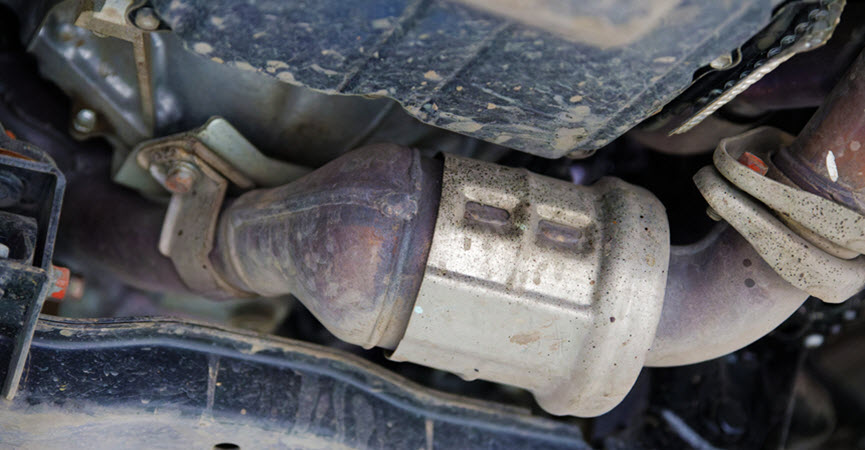
by Chris Limantour | Oct 18, 2023 | Audi Repair
At the heart of your Audi’s engine is a vital component known as the catalytic converter. The catalytic converter is an emissions control device, and it is located in your Audi’s exhaust system. It is primarily responsible for reducing harmful pollutants in the exhaust gases produced during the combustion process. Here’s how it works:
Conversion of Harmful Gases
As your Audi’s engine burns fuel, it generates exhaust gases that contain harmful pollutants, such as carbon monoxide (CO), nitrogen oxides (NOx), and unburned hydrocarbons (HC). The catalytic converter contains a honeycomb-like structure coated with precious metals, such as platinum, palladium, and rhodium. These metals act as catalysts to facilitate chemical reactions.
Oxidation and Reduction Reactions
In a typical three-way catalytic converter, there are two main reactions: oxidation and reduction. In the oxidation reaction, carbon monoxide and unburned hydrocarbons are oxidized into carbon dioxide (CO2) and water (H2O). In the reduction reaction, nitrogen oxides are reduced to nitrogen and oxygen gases.
Monitoring Sensors
Your Audi’s engine control unit (ECU) constantly monitors the performance of the catalytic converter using oxygen sensors. If the catalytic converter is not effectively reducing emissions, the ECU may trigger a warning light on your dashboard.
Emission Control
The catalytic converter ensures that the exhaust gases leaving your Audi are much cleaner and less harmful to the environment. It plays a critical role in helping your vehicle meet emission standards and regulations.
Signs of Catalytic Converter Failure
Catalytic converters are designed to be durable, but they can fail over time due to various factors. Here are some common signs of catalytic converter failure in your Audi:
- Illuminated Check Engine Light: A malfunctioning catalytic converter can trigger your Audi’s check engine light. The ECU may detect abnormal readings from the oxygen sensors, indicating that the catalytic converter is not working as intended.
- Reduced Performance: A clogged or failing catalytic converter can restrict exhaust flow, leading to a noticeable decrease in engine performance. Your Audi may feel sluggish and have reduced power.
- Unusual Odors: If the catalytic converter is overheating or failing, it can produce a distinctive sulfur-like odor. This smell can be quite unpleasant and is a clear indicator of a problem.
- Increased Fuel Consumption: A malfunctioning catalytic converter can also affect your Audi’s fuel efficiency. You may notice a significant drop in miles per gallon (MPG).
- Rattling Noise: Inside the catalytic converter’s honeycomb structure, the ceramic substrate can become damaged or break down. This can lead to a rattling noise when you tap the converter, which is a clear sign of internal damage.
Reasons for Catalytic Converter Failure
Understanding why catalytic converters fail is essential for preventing issues and addressing them promptly. Common reasons for catalytic converter failure include:
- Clogging: Over time, the catalytic converter can become clogged with carbon deposits and contaminants, reducing its efficiency. Clogging can result from engine misfires, excessive oil consumption, or using the wrong type of fuel.
- Physical Damage: The ceramic substrate inside the catalytic converter can be physically damaged by impacts, potholes, or other road hazards. This can lead to internal damage and poor performance.
- Excessive Heat: Running your Audi’s engine too hot, such as due to cooling system issues, can overheat the catalytic converter and cause it to break down.
- Oil or Coolant Contamination: If your Audi has a malfunctioning internal component, like a faulty valve stem seal or head gasket, it can allow oil or coolant to enter the exhaust system and contaminate the catalytic converter.
- Age along with Wear and Tear: Like any component, catalytic converters have a finite lifespan. Over time, the precious metal coatings may degrade, reducing the converter’s efficiency.
How Our Mechanic Will Fix It
We will start by performing diagnostic tests to determine if the catalytic converter is indeed the source of the problem. This may involve scanning the vehicle’s computer for error codes and using specialized equipment to monitor the converter’s performance. Our trained mechanic may inspect the catalytic converter and the surrounding exhaust components for physical damage, such as dents or leaks.
- Exhaust System Repairs: If the issue is related to exhaust system components like oxygen sensors or exhaust leaks, the mechanic will repair or replace these parts first, as these issues can often mimic catalytic converter problems.
- Catalytic Converter Replacement: If the catalytic converter is confirmed to be faulty, it will need to be replaced. Your mechanic will choose a compatible and quality replacement converter. Audi owners may opt for an OEM (Original Equipment Manufacturer) or aftermarket converter, depending on their preferences and budget.
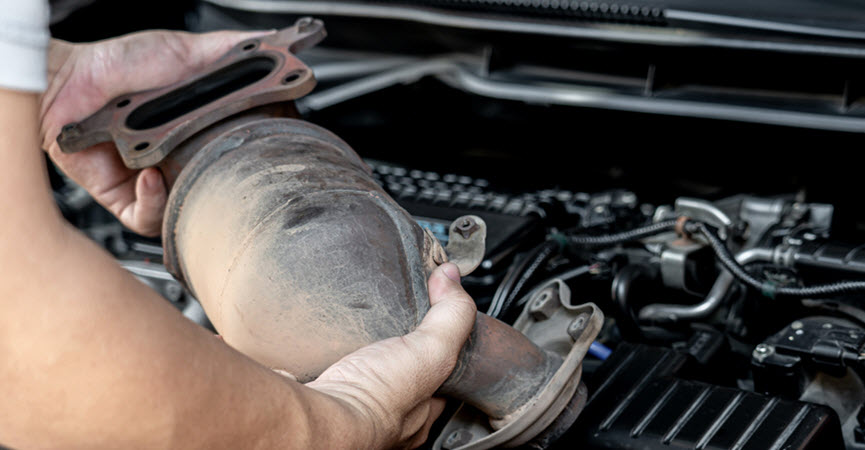
JCL Automotive: The Only Mechanic Your Audi Needs
Your Audi’s catalytic converter is an essential component that plays a pivotal role in reducing harmful emissions and ensuring your vehicle runs efficiently. When signs of catalytic converter failure appear, prompt action is essential to maintain the performance and compliance of your Audi. Visit us in Hellertown, PA, as we are conveniently located for our surrounding neighbors.
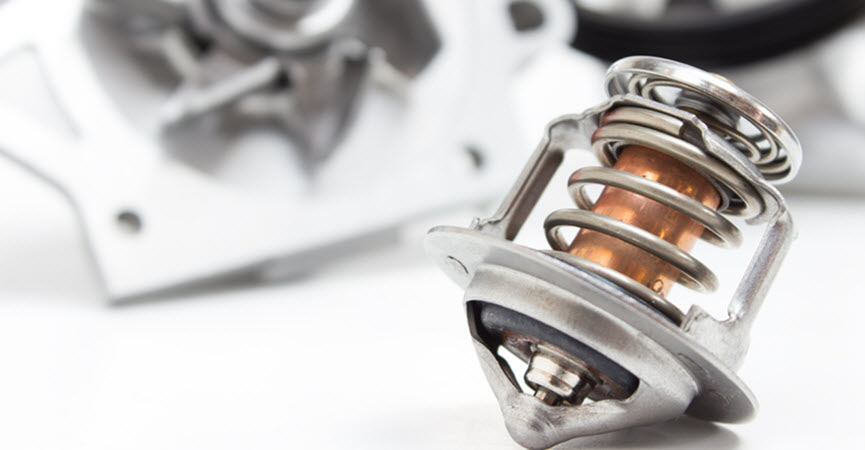
by Chris Limantour | Oct 1, 2023 | Audi Repair
Your Audi’s thermostat may seem like a small and inconspicuous component, but it plays a critical role in maintaining the operating temperature of your engine. As a gatekeeper for the coolant flow, the thermostat regulates the engine’s temperature, ensuring it stays within the designed range for efficient and reliable performance. However, if your Audi’s thermostat fails, it can have significant repercussions on the engine’s health and overall vehicle operation.
It is essential to understand why driving an Audi with a failed thermostat is not recommended and the potential risks it poses. Let’s take a closer look at some of the reasons for thermostat failure in Audi, discuss the implications of driving your Audi with a failed thermostat, and provide useful insights on what to do when you recognize this issue.
There can be several reasons why an Audi thermostat may fail. Here are some of them:
Stuck In One Position: Open or Closed
The thermostat can get stuck in either the open or closed position. If it remains open, coolant continuously flows through the engine, preventing it from reaching the optimal operating temperature. On the other hand, if it remains closed, coolant circulation is restricted, resulting in overheating.
Electrical or Sensor Issues
Some modern Audi models feature electronically controlled thermostats that rely on sensors and actuators. If there is a malfunction in the electrical components or sensor readings, it can lead to thermostat failure.
Coolant System Problems
Issues within the Audi’s coolant system, such as low coolant levels, air pockets, or a malfunctioning water pump, can also contribute to thermostat failure. These problems can disrupt the proper flow and circulation of coolant, leading to the thermostat not functioning as intended.
Wear and Tear
Over time, the internal components of the thermostat, such as the spring or valve, can wear out or become damaged. This wear can be a result of continuous exposure to high temperatures.
Road Debris and Dirt
The cooling system of an Audi can accumulate contaminants over time. These contaminants can affect the thermostat’s functionality, causing it to get stuck or operate improperly.
Implications of Thermostat Failure
Engine Overheating
One of the risks of driving an Audi with a failed thermostat is the potential for engine overheating. When the thermostat fails, it can get stuck in either the closed or open position, disrupting the coolant flow. This can result in excessive heat buildup and cause severe engine damage.
Reduced Fuel Efficiency
A malfunctioning thermostat can negatively impact your Audi’s fuel efficiency. When the thermostat fails to regulate the engine temperature properly, the engine may run colder than optimal. This can cause the engine to run rich, leading to increased fuel consumption. Driving with a failed thermostat can result in decreased mileage, requiring more frequent trips to the gas station.
Poor Performance
A failed thermostat can also affect the overall performance of your Audi. When the engine runs too hot or too cold, it can lead to sluggish acceleration, reduced power, and overall poor performance. Additionally, the engine’s electronic control unit (ECU) relies on accurate temperature readings to adjust the fuel and air mixture for optimal combustion. A malfunctioning thermostat can disrupt these readings, negatively impacting engine performance and responsiveness.
Don’t Risk It
If you do not want your Audi’s engine to overheat, have poor fuel efficiency, or reduced performance, then you should not drive it when there is a suspected thermostat failure. It is advisable to have your Audi model inspected by our qualified Audi technician. We will diagnose the problem accurately and recommend the necessary repairs or replacement of the thermostat to restore the proper functioning of your Audi’s cooling system. Remember that driving your cherished Audi with a failed thermostat is not a risk worth taking. The consequences can be detrimental to your engine’s health and overall performance.
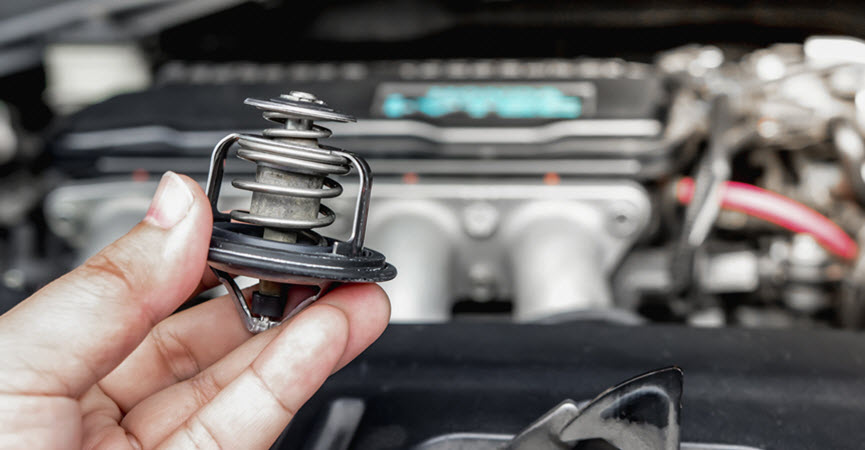
Visit Our Professional Audi Mechanics at JCL Automotive
At JCL Automotive, our team of skilled technicians is ready to take care of your thermostat needs. Located in Hellertown, PA, our automotive service and repair center is dedicated to providing top-notch care for your Audi. So, don’t hesitate to visit us and let us ensure that your Audi’s thermostat is in optimal condition. Book an appointment now.

by Chris Limantour | Sep 14, 2023 | Audi Repair
The catalytic converter is an essential component of your Audi’s exhaust system. Designed to reduce harmful emissions, this device converts toxic pollutants into less harmful byproducts before they exit the tailpipe. However, like other parts of your vehicle, the catalytic converter can become clogged over time, affecting performance, fuel efficiency, and emission levels. Let’s delve into the factors that cause a clogged catalytic converter in an Audi.
Causes of Catalytic Converter Clogs
- Engine Misfires: One of the primary causes for a clogged catalytic converter is engine misfire. When the engine misfires, unburned fuel can enter the catalytic converter, causing it to overheat and melt the internal honeycomb structure, leading to blockages.
- Poor Quality Fuel: Inferior or contaminated fuel can leave residues that the converter cannot efficiently process. Over time, this can lead to deposits building up inside the converter, impeding the flow of exhaust gasses.
- Engine Oil or Antifreeze Leaks: If engine oil or coolant enters the combustion chamber, they can contaminate the catalytic converter. The burning of these fluids can leave deposits which eventually lead to clogging.
- Rich Air-Fuel Mixture: If your Audi runs a consistently rich air-fuel mixture (more fuel than air), this can result in an excessive amount of unburned fuel entering the converter. This can cause it to overheat, resulting in a meltdown of the internal components.
- Poor Maintenance: Regular servicing ensures that components like spark plugs and oxygen sensors function optimally. Failing components can lead to engine misfires or inefficient combustion, which, in turn, can contribute to a clogged converter.
- Failing Oxygen Sensors: The oxygen sensors in your Audi regulate the air-fuel mixture. If they fail or become less efficient, they can send incorrect readings to the engine management system. This might cause the engine to run a rich or lean mixture, which can harm the catalytic converter over time.
- Excessive Short Trips: Frequent short drives prevent the catalytic converter from reaching its optimal operating temperature. When the converter doesn’t get hot enough, it can’t burn off contaminants effectively, leading to buildup and clogging over time.
- Old Age: Like all automotive components, catalytic converters have a lifespan. With age, the internal materials can break down or become less efficient at converting pollutants. Older converters might be more susceptible to clogging due to natural wear and tear.
- External Damage: Physical damage, such as impact from road debris or accidents, can lead to a compromised converter structure. This can cause the internal honeycomb structure to break or collapse, resulting in blockages.
- Contaminants in Exhaust: Certain contaminants in the exhaust, such as lead or silicon-based substances, can coat the internal parts of the converter. Over time, these contaminants can accumulate and obstruct the flow of gasses.
The Implications of a Clogged Converter
A clogged catalytic converter can lead to various issues for your Audi, such as:
- Reduced Engine Performance: The blockage can increase exhaust back pressure, reducing engine efficiency and power.
- Poor Fuel Economy: Reduced engine efficiency translates to higher fuel consumption.
- Increased Emissions: A failing converter can’t efficiently treat exhaust gasses, leading to a spike in harmful emissions.
- Engine Overheating: The increased back pressure can lead to elevated engine temperatures.
- Illuminated Check Engine Light: Modern vehicles monitor the efficiency of the catalytic converter. A clog or failure can trigger the check engine light.
Maintain Your Audi’s Performance
Maintaining your Audi’s catalytic converter is crucial for optimal performance and to stay compliant with emission standards. Regularly inspecting and servicing your vehicle can preemptively identify and address issues that might lead to a clogged converter. If you suspect your converter might be failing, seek professional assistance to diagnose and address the problem promptly.
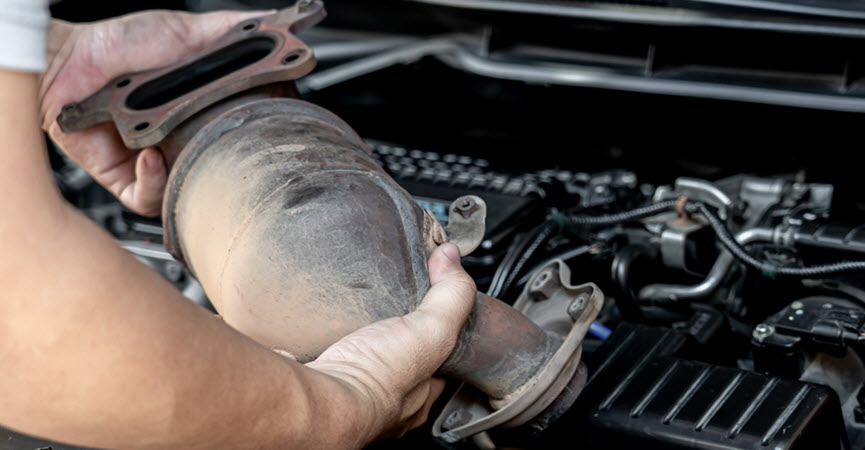
Book An Appointment With JCL Automotive Today
At JCL Automotive in Hellertown, PA, we understand the unique challenges associated with maintaining and repairing luxury vehicles like Audi. If you suspect that your Audi’s catalytic converter is clogged, it’s crucial to address the issue promptly to maintain optimal performance and prevent further complications.
Our team of seasoned technicians has vast experience in diagnosing and rectifying such problems. Don’t let a clogged catalytic converter affect your Audi’s performance or contribute to environmental pollution. Book an appointment with us today, and ensure your vehicle remains in top condition. Your Audi deserves the best, and at JCL Automotive, that’s exactly what we deliver.

by Chris Limantour | Aug 28, 2023 | Mercedes Repair
The Mercedes-Benz V12 engine is a marvel of engineering, offering unmatched smoothness and impressive power. Historically, these engines have been the heart of Mercedes’ most luxurious and performance-oriented vehicles. However, like any intricate piece of machinery, they are not without their issues. While many owners experience years of trouble-free driving, some common problems have surfaced over the years.
Common Mercedes V12 Engine Problems
Here’s a list of the most prevalent Mercedes V12 engine problems:
- Oil Leaks: One of the most common problems with Mercedes V12 engines is oil leaks. These can stem from various places such as valve cover gaskets, timing cover gaskets, and even the rear main seal. Not only can these leaks lead to costly repairs, but they can also create a fire hazard if the oil comes into contact with hot engine parts.
- Coil Pack Failures: The ignition coil packs in the V12 engines can be prone to failure. When this happens, the engine may misfire, resulting in reduced power and efficiency. The coil pack replacements can be expensive, especially since it’s advisable to replace them in pairs or as a complete set.
- Faulty Mass Air Flow Sensors (MAF): The MAF sensors can occasionally become dirty or fail. When this happens, the engine may experience rough idling, stalling, and reduced fuel efficiency. Cleaning or replacing the MAF sensor can rectify this issue.
- Malfunctioning ABC System: The Active Body Control (ABC) system is one of Mercedes-Benz’s signature features. However, it’s also one of the most problematic areas, especially for the V12 models. Leaks can develop in the system’s hydraulic struts, leading to decreased ride quality and an increased risk of damage to other components.
- Engine Overheating: Some owners have reported overheating issues, which can stem from various causes, including a malfunctioning water pump, faulty thermostat, or issues with the radiator. Overheating can lead to severe engine damage if not addressed promptly.
- Turbocharger Issues: For the bi-turbo V12 engines, there have been reports of turbocharger problems. These can range from leaks in the turbo seals to complete turbo failures, which can be an expensive repair.
- Fuel Injector Problems: Issues with the fuel injectors can lead to a range of symptoms, including rough idling, reduced power, poor fuel economy, and even engine misfires. It’s crucial to address injector problems promptly to avoid more severe engine damage.
- Weak Motor Mounts: The immense power and torque of the V12 engine can lead to wear and tear on the motor mounts. When these mounts weaken or fail, vibrations can be felt inside the vehicle, and there’s an increased risk of other parts becoming misaligned or damaged.
- Faulty Throttle Actuators: The throttle actuator is responsible for controlling the throttle body, and a malfunctioning one can lead to reduced engine responsiveness. Symptoms can include a lag in acceleration or the engine going into ‘limp mode,’ limiting the vehicle’s speed.
- Issues with the Timing Chain and Guides: While not as common as other problems, there have been reports of the timing chain and its guides wearing out prematurely. This can lead to significant engine damage, especially if the chain snaps while the engine is running.
Enjoy Your Mercedes While Minimizing Unexpected Repair Costs
Despite these problems, it’s essential to note that many Mercedes V12 owners have had years of trouble-free driving. Regular maintenance and early problem detection are key to prolonging the life of any engine. If you’re considering buying a Mercedes with a V12 engine, it would be wise to have the vehicle thoroughly inspected by one of our mechanics familiar with these engines. Additionally, always ensure that maintenance records are up-to-date and that the vehicle has been serviced at the recommended intervals.
While the Mercedes V12 engine is a masterpiece in design and performance, awareness of potential issues will ensure that owners can enjoy their vehicles while minimizing unexpected repair costs.
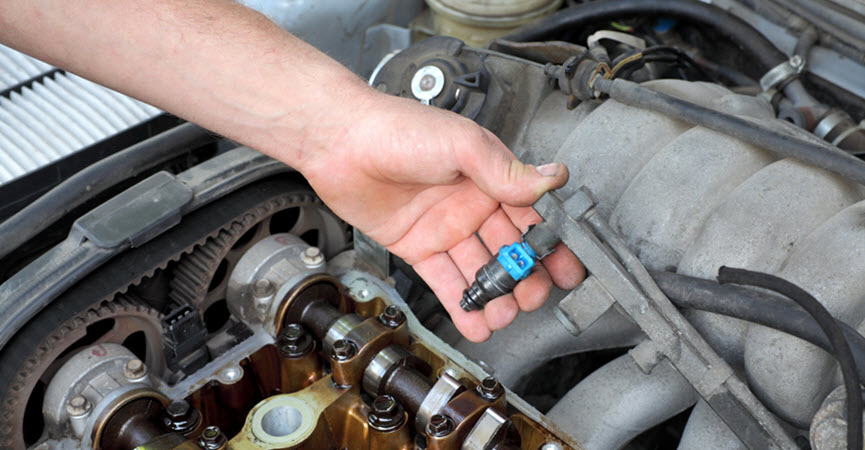
Book An Appointment With JCL Automotive Today
Booking an appointment with JCL Automotive in Hellertown, PA is a straightforward solution for anyone experiencing problems with their Mercedes V12 engine. As specialists in high-end automotive repair, our experienced technicians at JCL Automotive are equipped with the tools and knowledge to diagnose and fix any issues related to this complex engine.
Whether it’s a routine maintenance check or a more critical repair, we prioritize customer satisfaction and quality service. If you’re facing issues with your Mercedes V12 engine, don’t hesitate to contact JCL Automotive. Our state-of-the-art facility in Hellertown is ready to assist you, ensuring that your vehicle is returned to its optimal performance.
* Mercedes-Benz AMG Car image credit goes to: Artistic Operations.
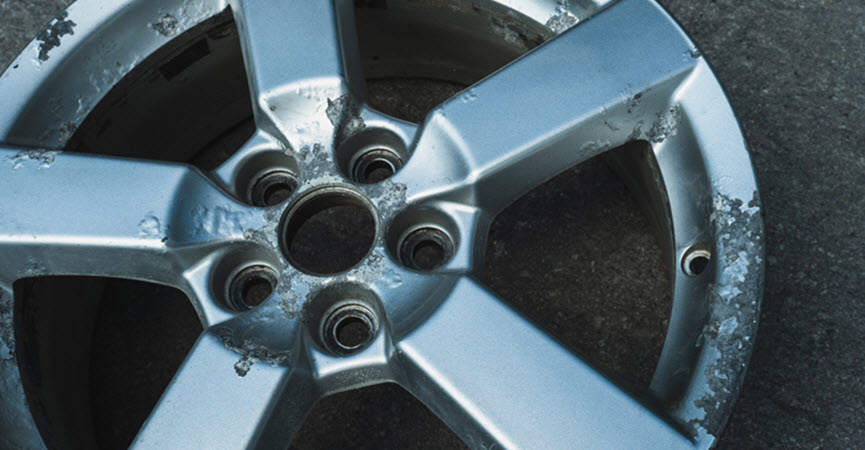
by Chris Limantour | Aug 11, 2023 | BMW Repair
When you’re cruising down the road in your BMW, the last thing you want to worry about is the health of your alloy wheels. However, these stylish and lightweight wheels are not just about looks. They play a pivotal role in the overall performance, safety, and aesthetics of your car. Cracked alloy wheels can be a BMW owner’s nightmare, affecting everything from your driving experience to your wallet.
As a BMW owner, it’s extremely important to maintain intact alloy wheels, since there are plenty of potential risks that cracked wheels pose. Knowing what to look for and addressing the issue right away when you notice it will benefit you, your car, and your pockets in the long run.
Understanding Cracked Alloy Wheels
Alloy wheels are a blend of aluminum and other metals, designed to be both strong and visually appealing. When we talk about cracked alloy wheels, we’re referring to wheels that have suffered damage resulting in visible cracks on their surface. These cracks can stem from a variety of sources, including hitting potholes, encountering road debris, and unfortunate run-ins with curbs.
The Risks Cracked Wheels Present
Driving with cracked alloy wheels poses an array of risks, the most prominent being compromised structural integrity. The initial crack can spread due to the pressures of driving, leading to further fractures or complete wheel failure.
Furthermore, the loss of air pressure due to cracks can result in underinflated tires, adversely affecting fuel efficiency, handling, and safety. Additionally, the imbalance created by a cracked wheel can cause uneven tire wear, further reducing the lifespan of both the wheels and tires.
Benefits of Swift Repairs
Taking immediate action to repair cracked alloy wheels offers a myriad of advantages. First and foremost, it prevents the cracks from expanding, nipping the problem in the bud and saving you from costly repairs down the road.
By addressing the issue promptly, you ensure the longevity of your wheels and maintain the security of your car’s occupants. Timely repairs also preserve the overall performance of your BMW, preventing issues such as vibrations, poor steering response, and compromised handling.
The Repair Process Unveiled
Fixing cracked alloy wheels is a multi-step process that demands professional expertise. Here’s an in-depth look at what goes into rectifying this issue:
- Thorough Assessment: The initial step involves a meticulous examination of the extent of the damage. This assessment helps determine whether the wheel can be repaired or if a replacement is the better route.
- Wheel Removal: The affected wheel is taken off the car, and the tire is dismounted to provide complete access to the wheel’s surface.
- Welding or Filling: Depending on the severity of the cracks, two primary repair methods are employed. Welding involves melting the alloy to seal the cracks, while filling utilizes specialized compounds to achieve a similar effect.
- Machining: After the necessary repairs, the wheel undergoes machining to ensure a smooth and even surface. This step is crucial for proper tire seating and wheel balance.
- Restoration: The repaired wheel is refinished to restore its original appearance. This includes painting or applying coatings to match the rest of the wheels.
- Balancing Act: Once the repaired wheel is back on your BMW, it’s balanced to perfection. This process ensures even weight distribution, eliminating vibrations during driving.
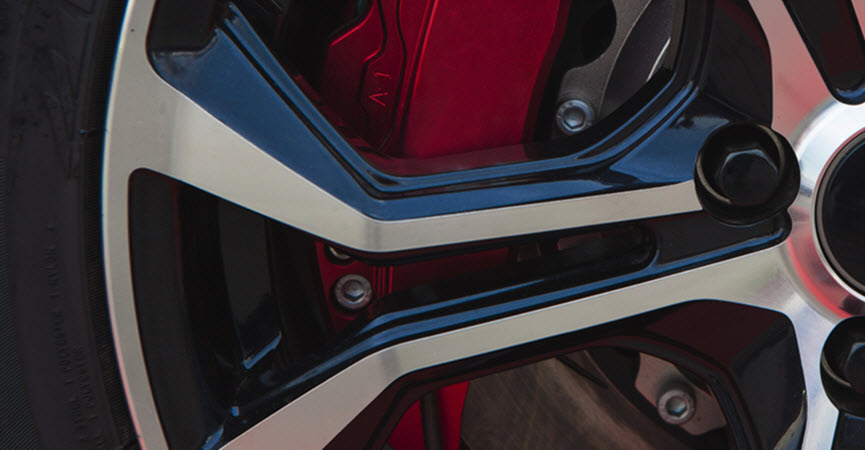
How to Resolve Cracked BMW Alloy Wheels
Cracked alloy wheels are not just an aesthetic concern; they can severely impact your BMW’s performance, safety, and overall driving experience. If you find yourself grappling with this issue in Hellertown, PA, our team of professionals at JCL Automotive stands ready to assist. We love BMWs as much as you do, and we want you to have the best parts, service, and repair from mechanics you can trust.
We will care for your cracked alloy wheel concerns promptly and completely, answering all your questions along the way. We can also help you maintain your BMW to avoid similar problems in the future. You and your car deserve the best. Reach out to us today to benefit from our professional expertise. Let us help you restore your BMW’s wheels to their optimal condition, ensuring both your safety and driving pleasure.
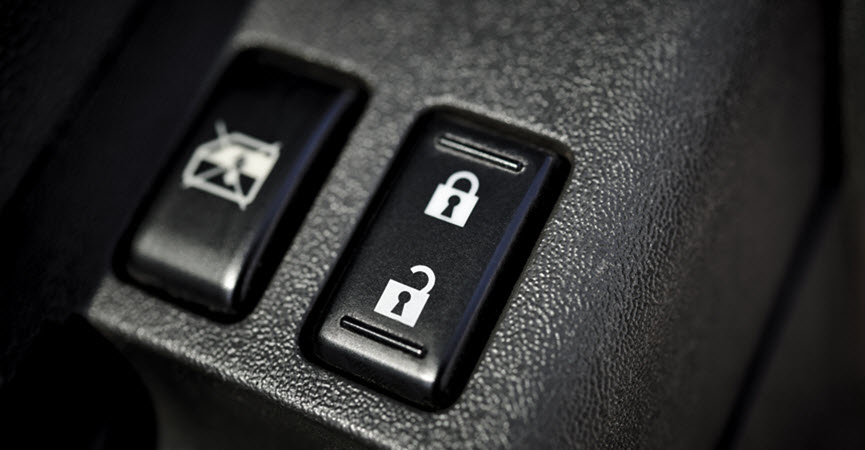
by Chris Limantour | Jul 25, 2023 | BMW Repair
Have you ever been in a situation where you could not lock your doors or struggled to unlock them when you needed to access your BMW? If you answered yes, then you’re in the right place. Door lock failure in BMW can be a very frustrating issue and even pose a risk to your belongings and personal safety.
Here are the most common causes and symptoms of BMW door lock failure and get useful insights on how to tackle the problem:
Worn Door Lock Actuator
The door lock actuator plays a crucial role in the mechanical operation of locking and unlocking the doors. With frequent use over time, the door lock actuator can become worn or fail. This can result in difficulty or an inability to lock or unlock the doors using the key fob or the interior door switch.
Electrical Malfunctions
BMW vehicles are equipped with advanced electrical systems that control various functions, including door locks. Electrical malfunctions can arise due to several factors, such as faulty wiring, blown fuses, or a malfunctioning control module. These issues can disrupt the proper functioning of the door locks and make it fail. For example, a damaged wire connection can interrupt the flow of electrical signals required to engage the door lock mechanism.
Key Fob Battery Issues
Door lock failure can sometimes be attributed to a weak or depleted battery in the key fob. The key fob sends signals to the car’s central locking system to lock or unlock the doors remotely. When the battery’s power is low, the key fob may not transmit signals effectively, leading to a communication failure with the car’s central locking system. As a result, the doors may not lock or unlock as intended, causing inconvenience and potential security concerns.
Understanding these causes of BMW door lock failure is essential for diagnosing and addressing the issue promptly. If you encounter difficulties with your door locks, it is recommended to consult with a professional technician who specializes in BMW repairs.
How to Identify Door Lock Failure
- Unresponsive Door Locks: One of the most common signs of door lock failure is unresponsive locks. You may find that the doors do not lock or unlock when you press the key fob button or use the interior switch.
- Intermittent Locking/Unlocking: Door locks can also manifest as intermittent locking or unlocking. The locks may work sporadically, making it difficult to predict when they will function properly.
- Stuck Locks: Another indication of door lock failure is when the locks become stuck or jammed. You may have difficulty turning the key in the lock cylinder or experience resistance when trying to lock or unlock the door.
Preventive Measures
- Gentle Handling: Handle the doors with care and avoid slamming them shut. Excessive force can put unnecessary strain on the door lock mechanisms and potentially lead to premature failure. Encourage passengers, especially children, to be mindful of closing the doors gently.
- Avoid Overloading: Be mindful of the weight you place on the doors, especially when parked on uneven surfaces or slopes. Overloading the doors can put excessive stress on the locking mechanisms.
- Regular Lubrication: Periodically lubricate the door lock mechanisms with a recommended lubricant. This helps maintain smooth operation and reduces friction that can contribute to lock failure.
Tackling Failed Door Lock Issue
- Verify the Issue: Confirm that it is indeed a door lock failure and not a related problem, such as a faulty key fob or a dead battery. Check if the issue persists with multiple key fobs, and try replacing the battery in your key fob if necessary.
- Check Fuses: Take your vehicle to a mechanic so they can Inspect the fuse box for any blown fuses related to the door locks. Replace any blown fuses with ones of the correct rating.
- Wiring Inspection: Your mechanic can also examine the wiring connections related to the door system. Loose or damaged wires can cause intermittent or complete failure. Ensure all connections are secure and free from corrosion.
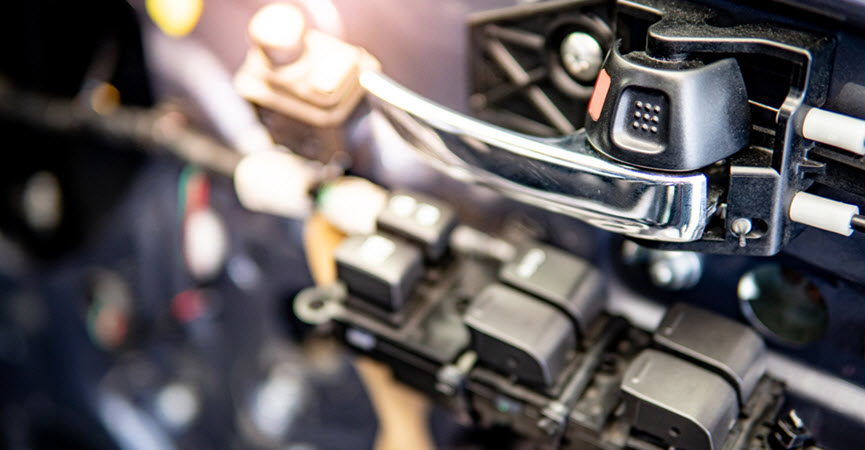
Get Help from the Technicians at JCL Automotive
BMW door lock issues can be effectively addressed if you bring your BMW car or SUV to our workshop. At JCL Automotive, we specialize in BMW repairs and have the expertise to diagnose and resolve any issues you might be experiencing. We proudly serve drivers in Hellertown, PA and the surrounding towns and neighborhoods. Book an appointment with us now, and let us help you get back on the road with properly functioning door locks.

by Chris Limantour | Jul 8, 2023 | Mercedes Repair
An essential part of a Mercedes engine, the crankshaft position sensor keeps track of the crankshaft’s location and rotational speed. The Engine Control Unit (ECU) needs this data to precisely calculate the timing of the ignition and the fuel injection. Engine failure and other performance problems can result from a crankshaft position sensor issue.
Symptoms of a Malfunctioning Crankshaft Position Sensor
- Engine Misfires: Incorrect spark plug firing brought on by a broken crankshaft position sensor might result in engine misfires. As a result, there can be a rough idle, power loss, and poor acceleration.
- Difficulty Starting the Engine: Starting the engine can be difficult if the crankshaft position sensor is malfunctioning. Before the engine eventually turns on, you might have to crank it for a while or make several efforts.
- Abrupt Stalling and Total Shutdowns: If the crankshaft position sensor malfunctions while the engine is running, it may result in a total shutdown or abrupt stalling of the engine. Being in this situation might be risky, especially if you’re driving.
- Unpredictable Tachometer Reading: When the crankshaft position sensor is malfunctioning, the tachometer, which shows the engine’s RPM (Revolutions Per Minute), may exhibit unpredictable or fluctuating readings.
- Engine Warning Light: The check engine light on the dashboard is frequently triggered by a broken crankshaft position sensor. To find the precise error codes associated with the sensor, the diagnostic system of the car must be scanned.
Understanding the Reasons Behind a Malfunctioning Crankshaft Position Sensor
- Electrical Problems: The crankshaft position sensor sends signals to the ECU via electrical connections. Corrosion, loose or damaged wiring, or bad electrical connections can all affect how well the sensor works.
- Sensor Damage: Over time, heat exposure, oil leaks, or debris may cause the crankshaft position sensor to become damaged. Inaccurate readings or complete sensor failure may result from this.
- Sensor Alignment: The crankshaft position sensor may malfunction as a result of improper installation or misalignment during repairs or maintenance.
Precautions to Prevent Crankshaft Position Sensor Problems
- Consistent Maintenance: By following the manufacturer’s suggested maintenance schedule, you can make sure that the crankshaft position sensor and other engine parts are checked and serviced at the right times.
- Fixing Oil Leaks: The crankshaft position sensor might be harmed by oil leaks. Any oil leaks must be fixed right away in order to keep oil from getting on the sensor.
- Safeguarding Electrical Connections: Maintaining clean, safe electrical connections lowers the possibility of faulty connections or corrosion. To keep the connections’ integrity, examine and clean them frequently.
The Value of Prompt Repairs
Your Mercedes may suffer serious effects from a malfunctioning crankshaft position sensor. The consequences of ignoring the issue and delaying resolution include improper fuel injection and ignition timing brought on by a defective sensor might eventually result in engine damage. This may necessitate expensive repairs or perhaps the replacement of the engine.
A damaged sensor might interfere with the engine’s combustion process, reducing fuel efficiency. This can lead to higher gasoline usage and higher gas station costs. Also, sudden engine shutdowns or stalling while driving provide serious safety dangers. To prevent such accidents, it is crucial to make sure that the crankshaft position sensor is operating correctly.
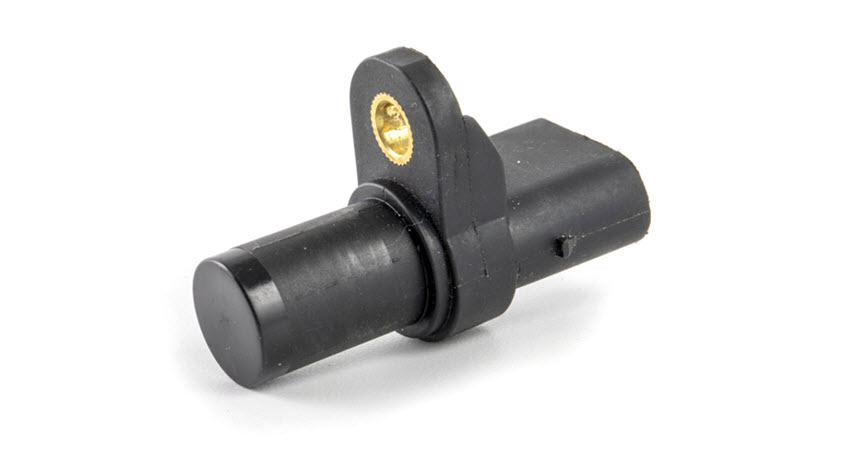
How Our Mechanics Will Resolve Your Mercedes Problems
If you believe your crankshaft position sensor may be malfunctioning, our mechanics are the right call. With years of experience working on Mercedes automobiles, our knowledgeable experts have the skills and diagnostic equipment required to correctly identify and fix crankshaft position sensor problems. To find any issues and carry out the required fixes or replacements, we will carefully examine the sensor, its electrical connections, and related components. Our mechanics will consult with you and be totally transparent on their findings, allowing you to direct the repairs and replacements within your budget.
For a Mercedes engine to run smoothly, the crankshaft position sensor is essential. You may quickly identify and fix the problem by being aware of the warning signals of a defective sensor, comprehending the typical causes, and taking preventative steps. Not only do prompt repairs and maintenance prevent future damage, but they also guarantee excellent engine reliability and performance.
Contact our qualified mechanics at JCL Automotive in Hellertown, PA to diagnose and fix any crankshaft position sensor problems you may be experiencing in your Mercedes. This will ensure both the performance of your car and your safety while driving.

by Chris Limantour | Jun 21, 2023 | Mercedes Repair
When it comes to luxury automobiles, Mercedes-Benz is a brand that stands out for its sleek design, advanced features, and superior performance. However, even the finest of vehicles can encounter mechanical problems from time to time. One common issue that Mercedes owners may face is gear selector problems.
The gear selector is responsible for engaging the appropriate gear in your vehicle, and any malfunction can be frustrating and potentially dangerous. Let’s explore some practical steps to help you deal with Mercedes gear selector issues effectively.
Understanding the Common Symptoms
Before delving into the solutions, it is crucial to identify the signs that indicate a gear selector issue in your Mercedes. Some common symptoms include:
- Gear shifting problems: You may experience difficulty shifting gears, such as the gear selector being stuck or not engaging properly. This can lead to delays in acceleration or even a complete inability to change gears.
- Incorrect gear indication: Your gear indicator may display an incorrect gear, such as showing ‘D’ when the car is in ‘P’ or ‘R’ when it is in ‘D.’ This can cause confusion and potentially result in accidents if you rely solely on the indicator.
- Gear selector lever feels loose: If the gear selector lever feels loose or wobbly, it could indicate a problem with the gear selector mechanism. This may require immediate attention to avoid any unforeseen issues.
Check for Mechanical Obstructions
One of the primary reasons for gear selector issues in Mercedes-Benz vehicles is mechanical obstruction. Over time, debris, dirt, or foreign objects can accumulate around the gear selector mechanism, interfering with its smooth operation. To address this, follow these steps:
- Park the vehicle on a flat surface and engage the parking brake.
- Carefully inspect the area around the gear selector lever for any visible obstructions. Use a flashlight if needed.
- If you notice any debris or foreign objects, gently remove them using a soft brush or compressed air. Avoid using excessive force or sharp objects that may damage the mechanism.
Check the Gear Selector Linkage
The gear selector linkage connects the gear selector lever to the transmission, enabling the transmission to shift gears. A worn or damaged linkage can lead to gear selector issues in your Mercedes. Here’s how you can inspect and address this problem:
- Locate the gear selector linkage under the vehicle. Consult your owner’s manual or online resources for specific instructions on the exact location.
- Examine the linkage for any signs of wear, such as rust, loose bolts, or broken components. If you notice any damage, it is advisable to consult a professional mechanic for repair or replacement.
- If the linkage appears intact, you can try lubricating the joints and moving parts with a suitable lubricant. This may help restore smooth operation and alleviate gear selector problems caused by friction.
Seek Professional Assistance
If you have tried the above steps and the gear selector issues persist, you should seek assistance from a certified Mercedes-Benz technician. They have the expertise and specialized diagnostic tools to identify and resolve complex gear selector problems accurately. Additionally, they can ensure that any repairs or replacements are performed using genuine Mercedes parts, maintaining the integrity and performance of your vehicle.
Dealing with gear selector issues in your Mercedes-Benz requires a systematic approach and attention to detail. By understanding the symptoms and seeking professional assistance when necessary, you can effectively address these problems and ensure a smooth driving experience in your luxury vehicle.
Remember, regular maintenance and servicing are crucial to preventing gear selector issues and maintaining the optimal performance of your Mercedes-Benz for years to come.

JCL Automotive: Your European Auto Specialists in Hellertown
At JCL Automotive, we prioritize quality above all else when it comes to your vehicle. We firmly believe in never compromising on the standards of our work, so you can trust us to provide exceptional service. Our shop is fully equipped with state-of-the-art tools and equipment, ensuring that we meet the highest industry standards.
We understand the value of convenience, which is why we offer after-hours drop-off and pick-up options for you. Additionally, whenever possible, we strive to provide same-day services to minimize any inconvenience caused by vehicle repairs or maintenance.
Please visit our shop located at 70 Main St. Hellertown, PA 18055, or simply give us a call at 484-851-3390 to schedule your appointment with our team of experts.

by Chris Limantour | Jun 4, 2023 | Audi Repair
Tail lights are a fundamental component of Audi cars, as they ensure visibility and safety on the road. However, when these lights stop functioning properly, it can create danger for drivers, passengers, and others on the road. Every Audi owner will want to know the signs that indicate failed Audi tail lights and what can happen if you decide to do nothing about it.
What are the Signs of Failed Audi Tail Lights?
- Dim or Flickering Lights: Dimming or flickering tail lights in your Audi can be one of the first indicators that something is wrong, so if yours are becoming less bright or intermittently flickering, it’s a telltale sign of trouble. This issue could be caused by anything from faulty bulbs, wiring issues, or malfunctioning control modules, but this short list is not exhaustive.
- Warning Light on Dashboard: Most modern Audi vehicles feature an advanced onboard diagnostic system to identify faults in various components, including tail lights. When a warning light relating to these lights appears on your dashboard, this indicates an issue that must be dealt with quickly to prevent further damage or safety risks.
- Total Failure: If your Audi’s tail lights aren’t visible at all, you’ll know for sure there’s a problem. Without functioning tail lights, other drivers may find it difficult to notice your vehicle at night or under adverse weather conditions. A total light failure could result from a blown fuse, damaged wiring harness, or malfunctioning switch, among many other causes.
What to Do When You Notice Failed Audi Tail Lights
- Professional Inspection: Once you notice signs of failing tail lights in your Audi, the first step should be consulting a certified automotive technician specializing in Audi vehicles. They have access to specialist tools that will allow them to accurately pinpoint any underlying problems or repairs needed, saving time and avoiding additional damage caused by misdiagnosis or incorrect DIY repairs.
- Replace Faulty Components: Based on inspection results, a technician will identify which components contribute to tail light failure and replace or repair them accordingly. This could involve replacing bulbs, fixing wiring problems, or changing out control modules as necessary. Genuine Audi parts or high-quality aftermarket alternatives must always be used for performance and compatibility reasons.
- Testing and Verification: After replacing faulty components, your technician will conduct comprehensive tests to ensure your tail lights operate efficiently. This includes checking their brightness, response time, and synchronization with other lighting systems on your Audi. In addition, they’ll verify proper alignment and aim for maximum visibility.
What if I Don’t Fix My Audi’s Broken Tail Lights?
When your Audi’s tail lights fail, other drivers become less aware of its presence, especially under low light conditions. This drastically increases the risk of rear-end collisions since other drivers cannot anticipate your next moves. You may also face legal consequences if law enforcement sees that your tail lights are out. This is cause for a ticket, since it puts you and everyone else on the road in jeopardy of an accident.
- Potential Accidents and Legal Consequences: Failing tail lights can have dire repercussions for both drivers. Limited visibility can lead to collisions, property damage, injuries, or even fatalities on the roadways. Furthermore, driving with malfunctioning tail lights has legal ramifications, such as fines or penalties, which must also be paid.
- Compromised Safety Features: Modern Audis typically incorporate advanced safety features, such as adaptive cruise control and collision warning systems. These features rely heavily on accurate detection from tail lights to respond to their environment, which means ignoring failed tail lights could compromise these vital safety measures.
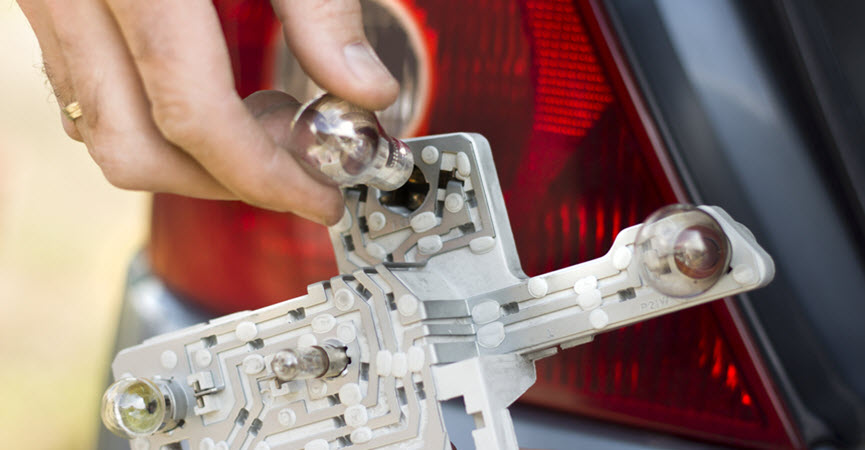
Visit the Best Repair Shop in Hellertown to Repair Failed Audi Tail Lights
Properly functioning tail lights are crucial to road safety, abiding by traffic regulations, and avoiding legal complications. If your Audi tail lights show any indications of malfunction, from dim or flickering lights to total failure, they must be repaired quickly.
Consult with the professionals at JCL Automotive in Hellertown, PA today for an efficient solution to your Audi’s tail light problems. We can help you get back on the road safely quickly and affordably. Allow us the opportunity to earn your repeat business! Call us today.

by Chris Limantour | May 18, 2023 | BMW Repair
VANOS is an acronym for VAriable NOckenwellen Steuerung, which is German for variable camshaft control. The VANOS system is a critical component of BMW engines that allows for variable valve timing, which enhances the engine’s power, efficiency, and overall performance. Unfortunately, the VANOS system can develop issues over time that can negatively affect the engine’s performance.
How Does the VANOS System Work?
The VANOS system works by using solenoid valves to control oil pressure to a hydraulic actuator, which adjusts the position of the camshaft. The system uses sensors to determine the engine’s current operating conditions and adjusts the camshaft’s position accordingly. The VANOS system can adjust the intake & exhaust valve timing separately, which allows for greater flexibility in optimizing engine performance.
Common Issues with the VANOS System
The VANOS system can develop issues that can negatively affect the engine’s performance. Some common issues with the VANOS system include the following:
VANOS Failure
One of the most common issues with the VANOS system is complete failure. If the VANOS system fails, the engine may experience a loss of power, reduced fuel efficiency, or difficulty starting. This can be caused by a number of factors, such as;
- Faulty solenoid valve: this can cause the VANOS system to fail because it controls the oil flow to the hydraulic actuator. If the solenoid valve is faulty, it may not open or close properly, which can cause a loss of oil pressure and VANOS failure.
- Clogged oil passage: The oil passages in the VANOS system are small and can become clogged over time, which can cause a loss of oil pressure and VANOS failure.
- Worn actuator piston: The actuator piston is a critical component of the VANOS system and can wear over time, causing the system to fail.
VANOS Noise
Another common issue with the VANOS system is noise. If you hear a ticking or rattling noise from the engine, it could be a sign of a problem with the VANOS system.
VANOS Oil Leaks
Oil leaks are another common issue with the VANOS system. If you notice oil leaking from the VANOS system, it could be a sign of a faulty gasket or seal. The gaskets and seals in the VANOS system are exposed to high temperatures and can wear over time, causing leaks.
A cracked or damaged VANOS cover can also cause oil leaks in the system. The VANOS cover is a critical component of the system and can crack or become damaged over time. In addition, oil leaks can be caused by a damaged oil line in the VANOS system. If the oil line is damaged, oil can leak out and cause issues.
VANOS Sensor Issues
Finally, VANOS sensor issues can cause various problems with the system, and the engine may experience a loss of power or reduced fuel efficiency. This issue is usually caused by a faulty sensor or a wiring issue.
Faulty sensors can make the VANOS system begin to operate in an improper manner, and if the sensors are not working correctly, they may not be able to accurately measure the engine’s conditions, which can cause the system to make incorrect adjustments. If the wiring is damaged or not connected properly, the sensors may not work correctly, which can cause unpleasant issues with the system.
When you begin to encounter any of the issues listed above in your BMW, such as oil leaks, loss of power, reduced fuel efficiency, or difficulty starting. It is important to seek the help of a professional to assist you in diagnosing and fixing the issue in order to avoid any further damage to your car or SUV.

JCL Automotive Will Fix Any Issues In Your BMW
If you’re experiencing issues with your BMW’s VANOS system or any other car problems, JCL Automotive is here to help you fix the issue. Our team of experienced technicians is dedicated to providing high-quality repairs and maintenance services to residents in Hellertown, PA, and the surrounding areas. We use the latest diagnostic equipment and technology to accurately diagnose and fix any issues in your car. Don’t hesitate to book an appointment with us today to get your car back on the road in top condition.
* Grey BMW M5 Car image credit goes to: Brandon Woyshnis.
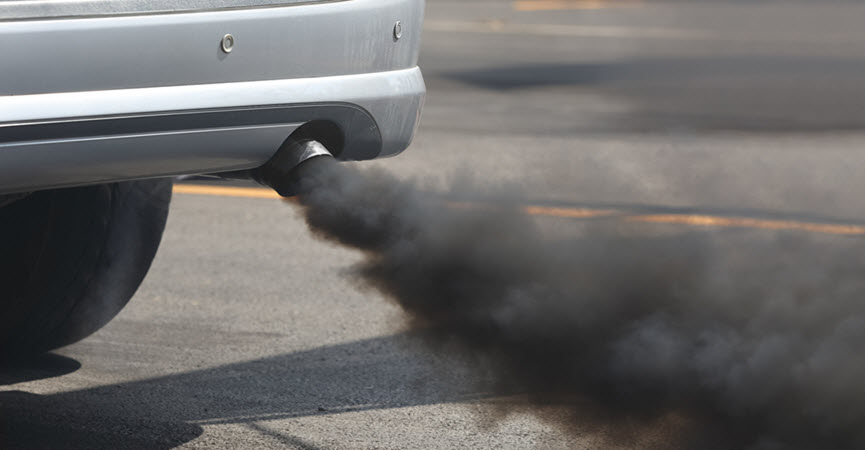
by Chris Limantour | May 1, 2023 | BMW Repair
The crankcase ventilation system plays a critical role in maintaining the health and performance of the engine in a BMW vehicle. A key component of this system is the crankcase ventilation valve, also known as the PCV (Positive Crankcase Ventilation) valve. It regulates the flow of gasses and vapors from the engine’s crankcase, preventing pressure build-up and ensuring proper combustion. However, over time, the PCV valve can malfunction, leading to potential issues.
Excessive Oil Consumption
One of the primary symptoms of a faulty PCV valve is excessive oil consumption. When the PCV valve malfunctions, it can lead to increased pressure inside the crankcase, causing oil to be drawn into the combustion chambers and burned along with the fuel. If you notice a sudden or significant decrease in your BMW’s oil levels between oil changes, it may indicate a problem with the crankcase ventilation valve.
Poor Engine Performance
A malfunctioning PCV valve can negatively impact the overall performance of your BMW’s engine. You may experience a decrease in power, reduced acceleration, or sluggish response. This can occur due to improper combustion caused by an imbalanced air-fuel mixture resulting from the faulty PCV valve. If you notice a significant drop in engine performance, it’s advisable to have the PCV valve inspected.
Increased Exhaust Smoke
When the PCV valve fails, it can cause an excessive amount of oil to be burned in the engine’s combustion chambers. This can result in a noticeable increase in exhaust smoke, particularly if the oil consumption is significant. The exhaust smoke may appear bluish or grayish and is most noticeable during acceleration or when the engine is under load. If you observe an unusual amount of smoke from your BMW’s exhaust, it’s crucial to have it checked by a qualified mechanic.
Rough Idle
A malfunctioning PCV valve can lead to a rough or unstable idle. You may notice the engine shaking or vibrating more than usual when the vehicle is stationary. The rough idle can be attributed to improper airflow and an irregular air-fuel mixture caused by the faulty PCV valve. If your BMW exhibits a rough idle, it’s recommended to have the PCV valve and associated components inspected and serviced.
Check Engine Light
In some cases, a malfunctioning PCV valve can trigger the check engine light (CEL) on your BMW’s dashboard. The engine control unit (ECU) detects irregularities in the engine’s performance and emissions, which can be caused by a faulty PCV valve. When the CEL illuminates, it’s important to have the vehicle scanned for trouble codes using a diagnostic tool. The codes will help pinpoint the specific issue, and a professional mechanic can then address the problem accordingly.
Increased Pressure in the Crankcase
The PCV valve regulates the pressure inside the engine’s crankcase. A malfunctioning PCV valve may result in increased pressure, causing oil leaks or seals to fail. You may notice oil leaks around the valve cover gasket or other engine seals. It’s important to address these leaks promptly to prevent further damage to engine components and to maintain proper lubrication.
Abnormal Noises
A faulty PCV valve can sometimes produce unusual noises from the engine compartment. You may hear a whistling or hissing sound, indicating a disruption in the airflow caused by the malfunctioning valve. Additionally, you might notice a slapping or ticking noise, which can be attributed to increased friction and improper lubrication due to excessive oil consumption. If you hear any unusual engine noises, it’s best to have them inspected by a professional.
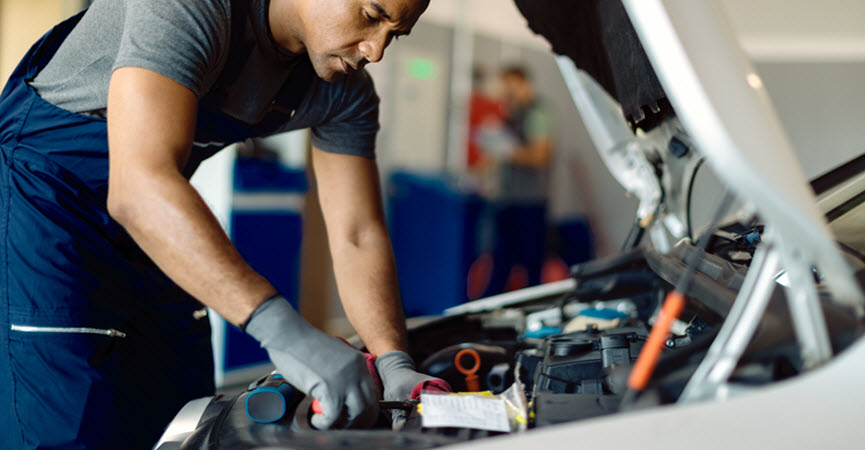
JCL Automotive: BMW Experts
As a BMW owner, you understand the importance of keeping your car in top condition. However, sometimes unforeseen issues may arise, such as a failing crankcase ventilation valve. If you suspect this may be the case for your beloved vehicle, don’t fret. At JCL Automotive, we specialize in BMW repairs and are here to help.
Our team of skilled technicians will diagnose and fix the issue promptly, leaving you with peace of mind knowing your car is in good hands. Serving clients from Hellertown, PA, we pride ourselves on our exceptional customer service and commitment to quality work. Don’t wait to bring your BMW in for maintenance – schedule an appointment with us today.

by Chris Limantour | Apr 14, 2023 | Mercedes Repair
Mercedes-Benz is a luxury car brand known for its high-performance vehicles, cutting-edge technology, and exceptional driving experience. However, like any machine, Mercedes-Benz cars are prone to mechanical problems, and one common issue that owners face is a differential failure.
The differential is a critical component in the drivetrain of any car, and it is responsible for distributing power evenly to the wheels. The differential also allows the wheels to rotate at different speeds when turning, which is necessary for smooth and stable handling. When the differential fails, it can cause a range of problems, from reduced performance to complete loss of power.
1. Whining or Grinding Noise
One of the most common signs of differential failure is a whining or grinding noise coming from the rear of the car. This noise can be caused by worn or damaged gears, bearings, or seals in the differential. If you hear this noise, it is important to have your car inspected by one of our qualified mechanics to determine the cause and prevent further damage.
2. Vibration or Shuddering
Another sign of differential failure is a vibration or shuddering sensation when driving at higher speeds. This can be caused by an unbalanced or damaged driveshaft or worn universal joints. If left unchecked, this can lead to further damage to the differential and other drivetrain components.
3. Reduced Performance
Differential failure can also cause a reduction in performance, including slower acceleration and decreased top speed. This is because the differential is responsible for transferring power from the engine to the wheels, and any damage to the differential can result in a loss of power.
4. Difficulty Turning
If you have difficulty turning your car, especially at low speeds, it may be a sign of differential failure. The differential allows the wheels to rotate at different speeds when turning, and any damage to the differential can cause the wheels to lock up, making it difficult to turn.
5. Fluid Leaks
Differential failure can also cause fluid leaks, which can lead to further damage to the differential and other drivetrain components. If you notice fluid leaking from the rear of your car, it is important to have it inspected by our qualified mechanics as soon as possible.
Preventing Differential Failure in Mercedes-Benz Cars
While differential failure is a common problem in Mercedes-Benz cars, there are several steps you can take to prevent it from happening.
1. Regular Maintenance
Regular maintenance is essential for preventing differential failure in Mercedes-Benz cars. This includes changing the differential fluid, inspecting and replacing worn components, and ensuring that the differential is properly lubricated.
2. Driving Habits
Your driving habits can also have a significant impact on the lifespan of your differential. Avoid aggressive driving, such as rapid acceleration or hard braking, as this can put undue stress on the differential and other drivetrain components.
3. Proper Towing
If you plan on towing a trailer or other heavy load with your Mercedes-Benz car, it is important to use the proper equipment and techniques. Overloading the car or towing in the wrong gear can cause significant damage to the differential and other drivetrain components.
4. Upgraded Components
If you frequently drive your Mercedes-Benz car in harsh conditions, such as off-road or in extreme temperatures, you may want to consider upgrading to stronger or more durable differential components. This can help prevent premature wear and damage to the differential.
Differential failure is a common problem in Mercedes-Benz cars, but it can be prevented with regular maintenance, proper driving habits, and upgraded components. If you notice any signs of differential failure, such as whining or grinding noise, vibration or shuddering, reduced performance, difficulty turning, or fluid leaks, it is important to have your car inspected by one of our qualified mechanics.
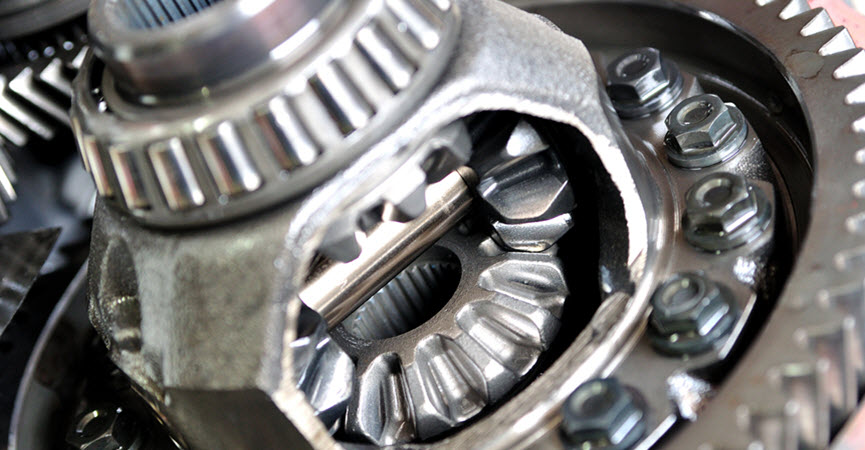
Book An Appointment With JCL Automotive Today
If you’re experiencing issues with the differential system in your Mercedes, it can be a cause for concern. But fear not, JCL Automotive in Hellertown, PA is here to help. With specialized expertise in Mercedes differential repair, our team of experienced technicians can diagnose and fix the problem with precision and care. From addressing noises and vibrations to more complex repairs, JCL Automotive has the know-how to get your Mercedes back on the road in no time.
With a commitment to quality and transparent communication, you can trust that you’re getting expert service every step of the way. So why wait? Book an appointment with JCL Automotive for Mercedes differential repair today and experience the peace of mind that comes with knowing your car is in good hands.
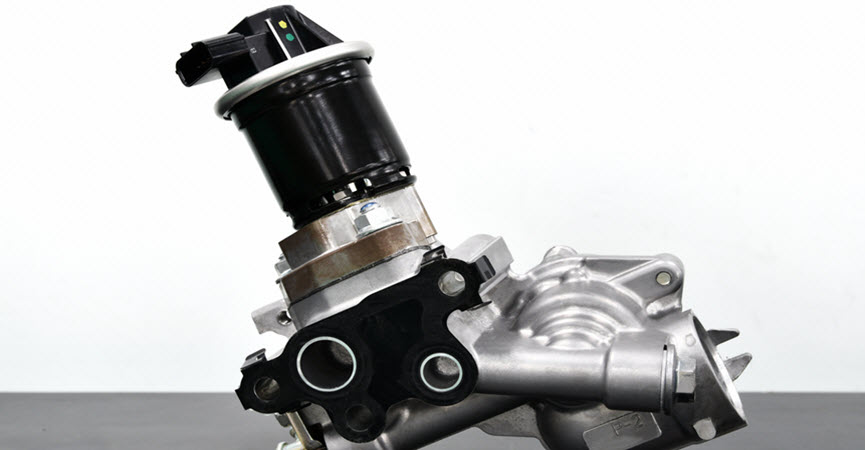
by Chris Limantour | Mar 28, 2023 | Audi Repair
Audi vehicles are known for their high-performance engines, and maintaining the EGR valve is crucial to ensuring the vehicle’s optimal performance and longevity. Regular maintenance and inspections can help prevent EGR valve failure and prolong the vehicle’s lifespan. However, when the valve fails, it’s essential to address the issue promptly to prevent further damage and ensure the vehicle meets emissions standards. Let us go into details on what the EGR valve does, signs of failure, how and where to replace it.
What Is EGR Valve?
The EGR (Exhaust Gas Recirculation) valve is integral to modern engines, including those used in Audi vehicles. The valve’s primary function is to reduce the amount of harmful emissions produced by the engine by recirculating some exhaust gases back to the combustion chamber. This process lowers the engine’s peak combustion temperature, reducing the amount of nitrogen oxides and other pollutants emitted into the atmosphere.
However, over time, the EGR valve can become clogged or damaged, leading to engine problems. When the valve malfunctions, it can disrupt the engine’s air/fuel mixture, reducing performance, increasing emissions, and causing a rough idle. If left unchecked, a faulty EGR valve can cause significant damage to the engine and other components, resulting in costly repairs.
Symptoms of a Faulty Audi EGR Valve
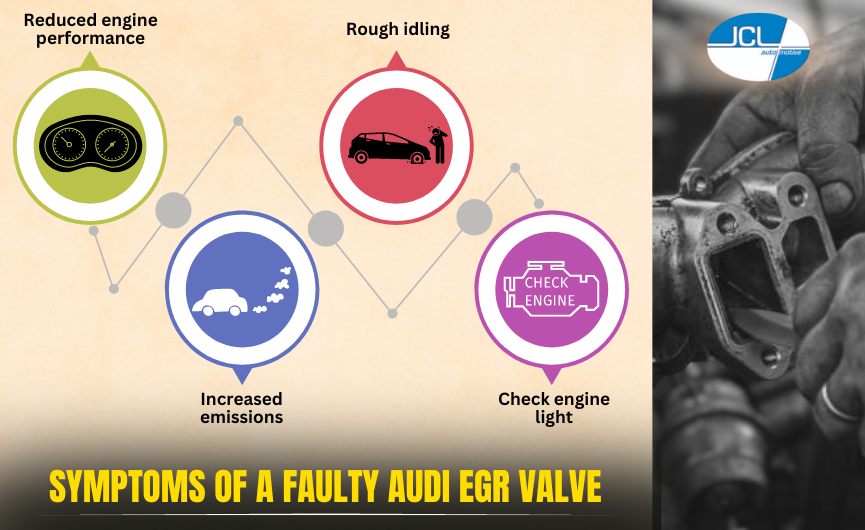
- Reduced engine performance: A faulty EGR valve can cause a reduction in engine performance, resulting in a decrease in power and acceleration. This is because the valve regulates the return of exhaust gases to the engine’s combustion chamber, which affects the engine’s power output. If the valve is clogged or not functioning correctly, it can reduce the amount of exhaust gas that is recirculated, leading to a decrease in engine performance.
- Increased emissions: The EGR valve plays a crucial role in reducing harmful emissions from the engine by recirculating exhaust gases back to the engine’s combustion chamber. If the valve is malfunctioning, it may not be able to regulate the flow of exhaust gases effectively, leading to an increase in emissions. This can cause the vehicle to fail emissions tests and contribute to air pollution.
- Rough idling: A faulty EGR valve can cause the engine to idle roughly or even stall. When the valve is clogged or not functioning correctly, it can disrupt the engine’s air/fuel mixture ratio, leading to uneven combustion and rough idling. In some cases, the engine may even stall when the vehicle is at a stop.
- Check engine light: If the EGR valve is malfunctioning, the Check Engine light may come on, indicating a problem with the engine’s emissions control system. The Check Engine light can be triggered by various issues, including a faulty EGR valve, and it’s essential to have the vehicle inspected by a qualified mechanic as soon as possible to diagnose the issue and prevent further damage to the engine.
Replacing an Audi EGR Valve
If the EGR valve is severely damaged or cannot be repaired, it may need to be replaced. Replacing an EGR valve in an Audi vehicle involves several steps, including:
- Removing the old valve: The old EGR valve is removed from the engine and inspected for any signs of damage or wear.
- Cleaning the valve ports: Before installing the new EGR valve, the valve ports and surrounding area are cleaned to remove any dirt or debris.
- Installing the new valve: The new EGR valve is installed and secured to the engine using the appropriate bolts and gaskets.
- Testing and recalibrating: Once the new valve is installed, it must be tested and recalibrated to ensure optimal engine performance.
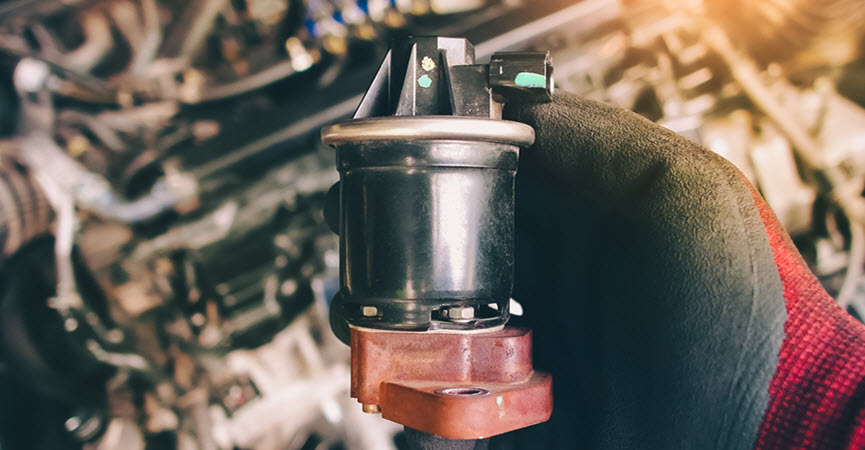
JCL Automotive has the Best Mechanics in Hellertown!
At JCL Automotive, we are known as the leading auto repair shop in Hellertown, PA, and we offer a range of services for different kinds of vehicles. We are staffed by certified mechanics trained to diagnose and repair various automotive issues.
If you need assistance with an Audi EGR valve repair or replacement, you may want to contact us to schedule an appointment. Our mechanics will provide you with a comprehensive inspection and diagnosis of your vehicle’s EGR valve to determine if repair or replacement is necessary. Additionally, we can offer you advice on how to maintain your EGR valve to prevent future issues. Visit our shop or call us now for your car repairs.

by Chris Limantour | Mar 11, 2023 | BMW Repair
One of the most common issues in a BMW is an electrical system failure. This can manifest in a number of ways, including dead batteries, malfunctioning power windows, and flickering headlights, and there are a number of reasons why this issue occurs.
In some cases, it’s simply a matter of an aging battery or a loose connection. In other instances, the issue may be related to a faulty alternator or starter. Additionally, electrical system failures can be caused by water damage or corrosion, which can damage electrical components. Let’s take a closer look at the top four culprits of electronic issues in your BMW.
Electrical System Failure
These types of problems have their root causes in the battery and alternator. These work together to both produce and distribute power to things like your starter, headlights, windows, dashboard, and car horn. These problems care pretty obvious and the most common complaint we see in our shop.
Engine Control Module Failure
The engine control module (ECM) is the computer that controls many of the functions of the engine, including fuel injection, ignition timing, and emissions control. When the ECM fails, it can cause a wide range of problems, including reduced engine performance, stalling, and difficulty starting. There are a number of reasons why the ECM may fail, including damage from voltage spikes, water damage, or simply wear and tear over time.
Transmission Issues
Another common electronic issue in BMWs is transmission problems. This can include issues with shifting gears, slipping gears, or a complete failure of the transmission. The causes of transmission issues in BMWs can vary, but they are often related to faulty sensors or problems with the transmission control module (TCM). In some cases, transmission issues can be caused by software glitches or coding errors in the TCM.
Infotainment System Malfunctions
Modern BMWs are equipped with advanced infotainment systems that include features like GPS navigation, Bluetooth connectivity, and streaming audio. Unfortunately, these systems can be prone to malfunctions, including freezing, crashing, and slow performance. The causes of these issues can vary, but they are often related to software bugs, outdated firmware, or hardware failures.
How to Address Electronic Issues
In addition to understanding the causes of these electronic issues, it’s also important to know how to address them when they do occur. In some cases, you may be able to troubleshoot and fix the issue yourself, while in other cases, you may need to take your BMW to our qualified technicians for repair. Here are some tips for addressing the top electronic issues in BMWs:
- Electrical System Failures – If you’re experiencing electrical system failures, start by checking the battery and connections to ensure they’re tight and free from corrosion. If the battery and connections are in good condition, you may need to have your alternator or starter checked by a technician.
- Engine Control Module Failure – If you suspect that your ECM has failed, take your BMW to a qualified technician for diagnosis and repair. In some cases, the ECM may need to be replaced, while in other cases, it may be possible to repair the existing unit.
- Transmission Issues – If you’re experiencing transmission issues, start by checking the transmission fluid level and condition. If the fluid is low or dirty, it may need to be changed. If the fluid level and condition are good, you may need to have your transmission checked by a technician.
- Infotainment System Malfunctions – If you’re experiencing infotainment system malfunctions, check for software updates and install them if necessary. If the issue persists, you may need to take your BMW to a qualified technician for diagnosis and repair.
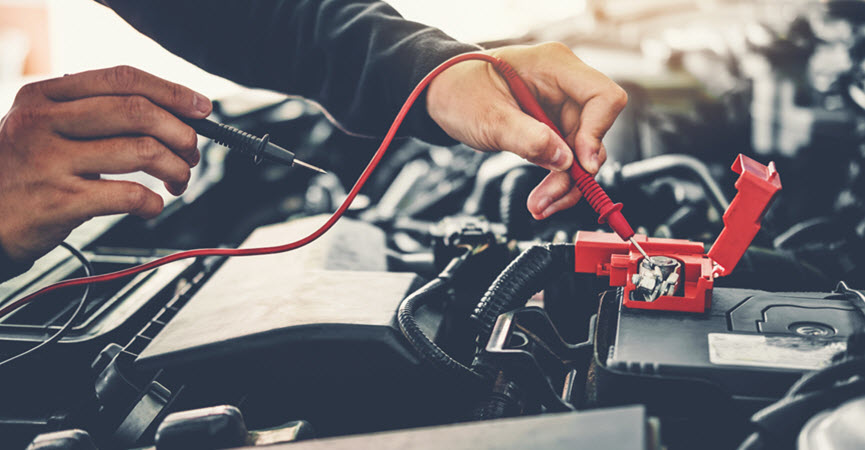
Fix All BMW Electronic Issues at JCL Automotive
Electronic issues are common in BMWs, but they can be addressed with the right knowledge and approach. By understanding the causes of these issues and knowing how to address them when they occur, you can keep your BMW running smoothly and enjoy its many features for years to come.
At JCL Automotive, we are proud to be the go-to repair shop for car owners in Hellertown, PA. Our technicians have the skills and technical know-how to diagnose and fix all kinds of electronic problems. You can schedule your car’s next service appointment now!
* Black BMW X5 Car image credit goes to: YuriyVlasenko.

by Chris Limantour | Feb 23, 2023 | Audi Repair
One of the most important components in your Audi that needs attention is the valve seal. If this valve or its seal is cracked or damaged, it will leak oil and negatively affect the performance of your Audi. The seal is a synthetic material that locks the entrance to the valve, thereby allowing or stopping oil from passing through. An engine’s valves and gaskets play a crucial role in ensuring its smooth running, and their importance cannot be overemphasized.
What are the signs of a Valve Seal Oil Leak?
A valve or gasket that leaks oil may have some of the following signs:
- Smell of burning oil: When the valve or gasket of an engine leaks oil, the oil will usually drip down the vehicle engine or spread across other surfaces, and when it finds its way to one of the metal components that are hot such as the exhaust pipe, cylinder head, or other metallic materials that are usually hot, these metals burn the oil and cause it to produce the smell of a burned oil. If you perceive burning oil in your vehicle, do well to contact a professional to ascertain the cause of the oil leak.
- Dirt appearing on the valve cover or visible oil: The accumulation of oil in the valve gasket makes it very easy to detect a leak. When a technician pours oil into the car, some may collect at the cylinder head, which is usually cleaned. If after the car has worked for some time and you still observe this, it means oil still finds its way out from somewhere. Your technician will inspect the valve and detect the exact source of the leak. It’s most likely a result of a bad valve.
- Engine oil gets low: Another way to detect valve seal oil leaks is the dashboard oil light coming on. As oil leaks from the vehicle frequently, it causes the amount of oil to drop drastically, which will cause the oil light on the dashboard to come on. If you observe a continuous drop in the oil level, this is an indication that the valve seal is bad or that oil has found its way out of your engine through a leak. Alert our professionals to inspect your Audi so that the necessary steps can be taken to solve the problem.
- Misfire or irregular running of engine: When the engine of your Audi does fire smoothly in sync with all of its components, oil may have leaked into a part and is ruining the combustion process. Oil may have found its way into a spark plug tube, affecting the performance of the spark plug itself, for example. This can cause an engine misfire and all sorts of problems for your engine.
How Our Mechanics Will Resolve your Valve Seal Oil Leak
Repairing a valve seal oil leak in an Audi can be a complex process that requires specialized knowledge and tools. Here are the steps our mechanics might take to repair a valve seal oil leak in an Audi:
- Diagnosis: The first step is to identify the source of the oil leak. This might involve using a dye or other diagnostic tools to pinpoint the location of the leak.
- Disassembly: To access the valve seals, we will need to remove the valve cover and other components that are in the way. This might include removing the intake manifold or other parts.
- Valve seal replacement: Once the valve seals are accessible, we will remove the old seals and replace them with new ones. The new seals must be properly seated to prevent further leaks.
- Reassembly: After the new seals are installed, our mechanic will reassemble the engine components in the reverse order of disassembly.
- Testing: Once the repair is complete, we will test the engine to ensure that the valve seals are no longer leaking oil. This might involve running the engine and checking for leaks or using diagnostic tools to confirm that the issue has been resolved.
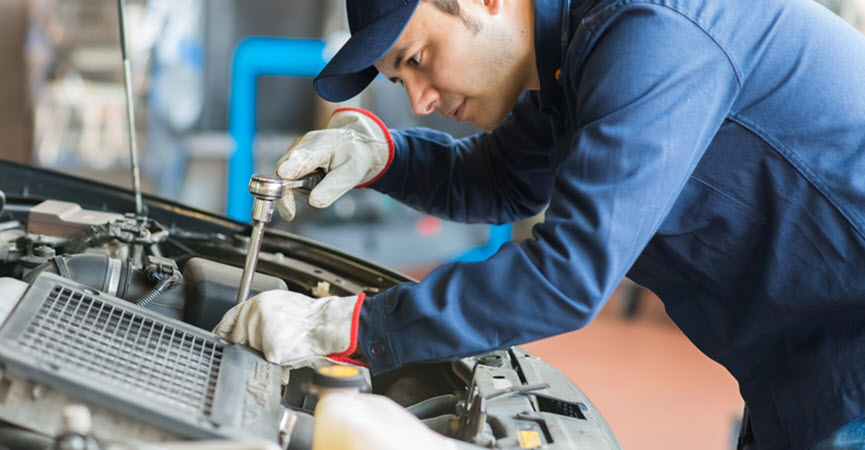
Schedule An Appointment With JCL Automotive Experts
Repairing a valve seal oil leak in an Audi can vary depending on the model and year of the vehicle, as well as other factors such as the severity of the leak and the condition of the engine. It’s always best to consult with a qualified mechanic or technician for guidance on the best course of action for your specific situation.
At JCL Automotive, we specialize in the maintenance and care of Audi and other vehicles. We are conveniently located in Hellertown, PA. Call us today for that unique car service that will give a long-lasting performance to your Audi car. We are always here to serve you!

by Chris Limantour | Feb 6, 2023 | Mercedes Repair
Mercedes vehicles are known for their exceptional quality and advanced technology. One of the critical components that ensure proper functioning of Mercedes vehicles is the 13-pin connector. In this article, we will discuss what the 13-pin connector does, symptoms of failure, causes of failure, and when it should be replaced.
What is the 13-pin connector?
The 13-pin connector is a vital component in Mercedes vehicles that connects the transmission control module (TCM) to the engine control module (ECM). It facilitates the exchange of data between the two modules, ensuring that the transmission operates smoothly and efficiently.
Symptoms Of 13-Pin Connector Failure
The following are some of the most common symptoms of a failing 13-pin connector in a Mercedes:
- Transmission slipping: A faulty 13-pin connector can cause the transmission to slip or shift improperly, resulting in jerking or jolting movements while driving.
- Delayed or Harsh Shifting: If the transmission is taking longer than usual to shift, or shifting is more abrupt than usual, this may be an indication of a failing 13-pin connector.
- Failure to shift: If the transmission fails to shift at all, it could be a sign of a complete failure of the 13-pin connector.
- Warning lights on the dashboard: If the check engine light or transmission warning light illuminates on the dashboard, it may be a sign of a problem with the 13-pin connector.
Causes Of 13-Pin Connector Failure
Several factors can cause a 13-pin connector to fail, including:
- Age: Over time, the 13-pin connector may wear out due to exposure to heat, moisture, and other environmental factors.
- Contamination: Contaminants, such as dirt or water, can enter the connector and cause damage to the pins or the internal components.
- Electrical Problems: Voltage spikes or other electrical problems can cause damage to the 13-pin connector.
- Poor Maintenance: Inadequate maintenance, such as infrequent transmission fluid changes, can cause damage to the 13-pin connector.
13-Pin Connector Maintenance
Proper maintenance of the 13-pin connector in a Mercedes is essential to ensure its optimal performance and prevent premature failure. Here are some recommended maintenance practices for the 13-pin connector:
- Regular Inspection: It is recommended to inspect the 13-pin connector during routine maintenance services, such as oil changes. A mechanic should inspect the connector for any signs of damage, such as corrosion, bent pins, or loose connections.
- Keep the Connector Clean: The 13-pin connector is vulnerable to dirt, moisture, and other contaminants that can cause damage. To prevent contamination, keep the connector clean and dry. Use a soft-bristled brush and compressed air to remove any dirt or debris from the connector.
- Use Quality Transmission Fluid: The use of quality transmission fluid can help prolong the life of the 13-pin connector. Mercedes recommends using its own branded transmission fluid, which is specifically designed for use in their vehicles.
- Change Transmission Fluid Regularly: Regular transmission fluid changes are essential for maintaining the health of the 13-pin connector. Mercedes recommends changing the transmission fluid every 40,000 miles or every four years, whichever comes first.
- Replace the Connector at Recommended Intervals: Mercedes recommends replacing the 13-pin connector every 100,000 miles or every ten years, whichever comes first. However, if you frequently drive in severe conditions, such as stop-and-go traffic or towing heavy loads, you may need to replace the connector more frequently.
When To Replace The 13-Pin Connector
It is crucial to replace the 13-pin connector as soon as you notice any symptoms of failure to prevent damage to the transmission. If your Mercedes is experiencing transmission slipping, delayed or harsh shifting, or failure to shift, it’s time to have the 13-pin connector checked and replaced if necessary.
Mercedes also recommends replacing the 13-pin connector every 100,000 miles or every ten years, whichever comes first. However, if you frequently drive in severe conditions, such as stop-and-go traffic or towing heavy loads, you may need to replace the 13-pin connector more frequently.
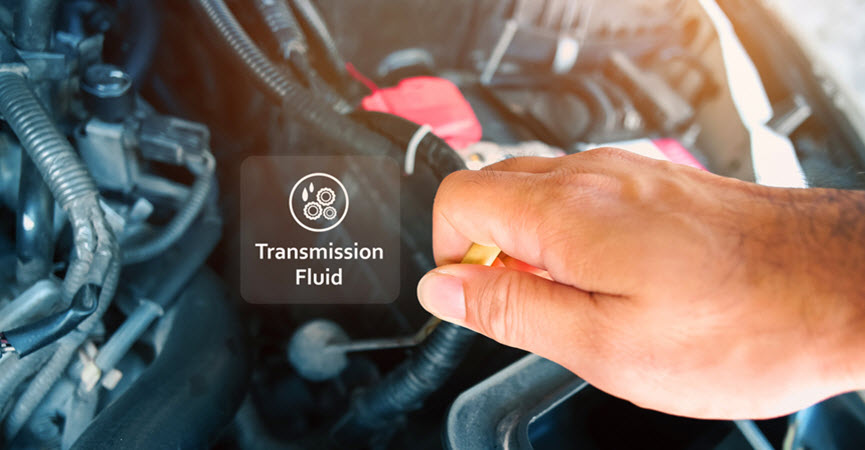
JCL Automotive Can Help
Experiencing problems with your Mercedes’ 13 pin connector? Then let the experts at JCL Automotive handle it. With our diagnostic and repair service, you can rest assured that your car is in good hands. Our highly skilled team of technicians are well-equipped to diagnose and repair any issue, saving you time and money. And if you’re lucky enough to live in or near Hellertown, PA, you’re only a few steps away from professional car care. Stop by or call us today for further information on our services – one visit could be all it takes to get your vehicle back in top condition!

by Chris Limantour | Jan 20, 2023 | Mercedes Repair
Maintaining regular oil levels in your car is integral for its optimal performance. Mercedes vehicles are no exception. If you notice the engine light turning on and off suddenly, it could be a sign of an oil pressure switch failure. This article will explain how to deal with an oil pressure switch failure in a Mercedes vehicle and what preventive steps can be taken to avoid such a failure in the future.
What Is The Oil Pressure Switch?
The oil pressure switch serves an important function in any engine. It helps monitor oil flow and alert the driver when the level of oil has fallen below acceptable levels. In a Mercedes vehicle, this switch is located near the base of the distributor on the left side of the engine block. When this switch fails, it will cause your car’s engine light to turn on and off intermittently, which can indicate a problem with the car’s oil flow or level.
Diagnosing The Issue
In order to diagnose and determine whether there is indeed an issue with your oil pressure switch, it is recommended that you get one of our certified mechanics to carry out a thorough examination of your car’s system.
We will first check for any leaks or signs of wear around the area where the oil pressure switch is located. If there are obvious signs of damage or deterioration, then further investigation may be necessary. Additionally, we will examine other components connected to the oil pressure switch, such as hoses and wiring connections that might have caused friction, leading to its malfunctioning.
Replacing If Necessary
If we determine that it is indeed an issue with the oil pressure switch itself, then replacing it should become your priority. You would want to do this as soon as possible, so as not to incur further damage to other parts of your car’s system. This damage could be due to insufficient lubrication levels caused by low oil flow or levels.
It is recommended that you take your car into one of our certified mechanics who can replace this part quickly and efficiently. We will ensure that all safety measures are taken into account during installation so as not to negatively affect other parts while replacing this component.
Preventative Measures
Now that we know how to deal with an issue concerning an oil pressure switch failure in a Mercedes vehicle, let us look at some preventive measures which can help avoid such failures from occurring in the first place:
- Ensure regularly scheduled maintenance: For starters, make sure you take your vehicle for regular servicing intervals as recommended by Mercedes so that any potential problems can be identified before they become critical failures down the line. During such services, also make sure that mechanics inspect all crucial components like hoses and wiring connections near where this particular switch is located so any early issues can be tackled immediately before they develop into larger problems like complete breakdowns or malfunctions.
- Keep track of warning messages: Additionally, keep watch for error codes or diagnostic messages coming from your car’s computer system regarding issues related to this component so these warnings don’t get ignored until eventually reaching an emergency situation due to neglecting preventative care over time.
Ultimately, following these preventive measures will help keep your Mercedes vehicle running smoothly, thereby saving you time, money, and hassle over long periods.
By understanding how to deal with an issue concerning an oil pressure switch failure in Mercedes vehicles and what preventive steps one can take, drivers can stay alert to any potential signs of deterioration before they reach critical points which require immediate attention by professional service technicians.

Book An Appointment With JCL Automotive Today
If your Mercedes has encountered an issue with its oil pressure switch, it may be time to consult a professional. JCL Automotive, located in Hellertown, PA, can help you tackle this problem quickly and easily. Don’t put off getting the solutions you need for any of your automotive needs — book an appointment today and get the reliable service and top-notch work that JCL Automotive is known for. Our experienced technicians will be ready to diagnose and repair your car so you can get back on the road without delay.
* Black Mercedes-Benz Car image credit goes to: franz12.

by Chris Limantour | Jan 3, 2023 | Mercedes Repair
Mercedes-Benz is among the world’s most popular automobile brands, recognized and respected for its excellent quality, durability, and dependability. One of the components in your Mercedes is the chassis flex disc. This component must be replaced if it starts to malfunction. Here, we will take a closer look at the functions and importance of the chassis flex disc, why it has the tendency to fail, and the signs to look out for in order to recognize the issue when it arises so that you will know exactly what to do when you find yourself in that situation.
The Importance of the Chassis Flex Disk
The chassis flex disc is the rubber coupling device that is connected to the input-output shaft flanges, which are then connected to vital parts like the transmission, differential, and driveshaft. Mercedes vehicles have flex discs in both the rear and the front. With a keen eye, you can locate the front disc, which connects the transmission or gearbox to the driveshaft. The differential is connected to the disc at the back, and it is very easy to locate.
The function of the flex disc is very straightforward. It helps absorb excessive torque that is supplied to the shaft at acceleration and deceleration. It also prevents transmission vibrations from reaching the driveshaft. Due to the reinforced rubber construction and simplicity of the flex discs, they have a longer life span of approximately 200,000 miles.
Typical Reasons for a Chassis Flex Disk Failure
Since rubber flex discs are being used on the chassis, the rubber is regularly exposed to extremely high temperatures, which causes it to expand. The contraction and expansion of the material cause a premature crack and wear on the disc.
Extreme use of the suspension parts on a rough and rocky road is also highly strenuous on the disc. There is a tendency to shorten the lifespan of your flex discs if you drive on very rough terrains.
Signs of Damaged of Failing Chassis Flex Discs
If the flex discs in your car are damaged, you will begin to experience certain symptoms, and driving your vehicle after an indication of a failing chassis flex disc can cause more damage to your Mercedes. We advise that you get your vehicles inspected by our professionals as soon as you recognize any of the symptoms below:
- Gear Shifting Issues: When the chassis flex disc in a Mercedes is faulty, changing gears may become very difficult. This is a common issue when trying to switch from park to reverse or park to drive. Shifting issues might also be caused by engine problems or transmission problems.
- Excessive and Intense Vibration: When there is a flex disc failure, the driveshaft will become loosen, resulting in intense vibrations because the driveshaft begins to move around. At this point, driving becomes very uncomfortable and unpleasant.
- Chassis Flex Disk Wear: A full examination of your chassis flex disks may occasionally reveal visible flaws. The disks may be deformed, damaged, or separated from their elements.
- Knocking Noises: If you happen to experience a knocking noise beneath your Mercedes whenever you accelerate, it could be as a result of a failing or damaged chassis flex disc.
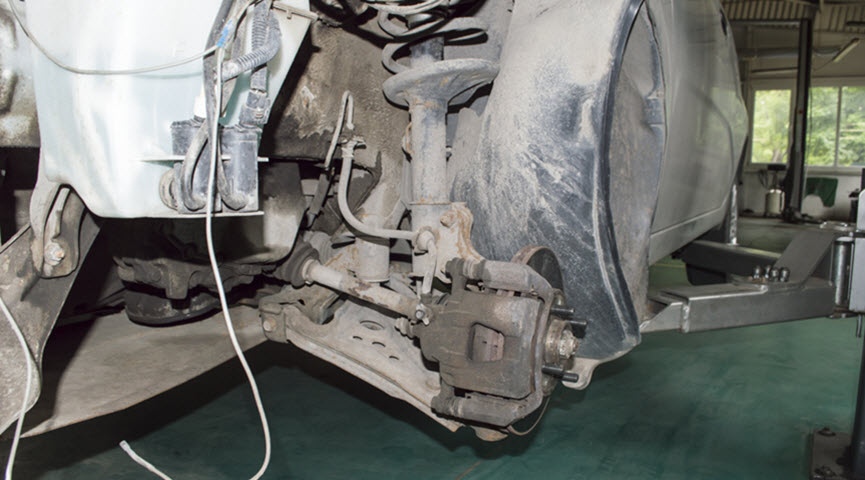
JCL Automotive Will Fix Any Flex Disc Issues in Your Mercedes
If you are experiencing any problems with your Mercedes, you need to have it checked out as quickly as possible. Driving your Mercedes with a flex disc problem cause significant damage as well as unnecessary expenses to fix any issues that could’ve been prevented with maintenance and inspections.
At JCL Automotive, we take pride in providing our clients with the most prompt and high-quality services in the Hellertown area. Our mechanics are ASE certified with years of experience in fixing Mercedes models. We are always excited to serve the residents in Hellertown, PA, and we have become very well known for always giving our best service. Check out our reviews and see what our happy customers are saying about our service. Call us today if you are experiencing any issues with your Mercedes, or you can visit our shop to talk with our friendly mechanics. We look forward to earning your business.

by Chris Limantour | Dec 17, 2022 | Audi Repair
Audi is a renowned European car brand that produces one of the most durable cars in the industry. The carmaker continues to push the boundaries of innovation, and they have integrated new technologies into their new models. The introduction of a digital dashboard in some of the most recent car models is one example of such innovations. Digital dashboards, which replace the traditional analog dashboard displays, offer the standard speed, temperature, and fuel gauges, but they also allow driver customization. With a digital dashboard, you can add other displays like maps, phone calls, music, and a range of other features.
Although this dashboard display allows a driver to have more customization and control, it is also prone to malfunctions due to its digital nature, so it’s critical to understand the most prevalent problems and what you need to do if the digital dashboard in your Audi fails.
In this article, we will focus on a few of the difficulties that might occur and help you understand how to diagnose the problem as soon as possible so that your Audi dashboard can be fixed and return to the high performance it once delivered.
Blown Fuse
If your Audi has a digital dashboard and you have display problems or glitches on the dashboard, it is most likely due to a blown fuse. A single fuse can be replaced, but you should not do it yourself. Electrical components are very delicate, so they must be left to a professional. If you notice any of these signs, then it means your Audi may have a blown fuse, and you need to take it to a skilled Audi service technician.
- Dashboard display panels that are dimmer
- Displays that flash/glitch
- Display screens that are completely or partially inoperable.
Instrument Cluster
This is a more critical issue that requires prompt attention. The instrument cluster in your Audi controls the bulk of the icons that can be displayed by the dashboard.
If there’s a problem in the instrument cluster, then it must be replaced. As soon as you notice this, take your Audi to a certified Audi mechanic so you can get your digital dashboard back on track. Driving with a faulty digital dashboard might be dangerous for both you and other drivers.
Stay Updated
Unlike analog dashboards, digital dashboards need routine updates and upgrades to keep them functional. As previously stated, Audi and other car manufacturers release innovative upgrades to each Audi model; yours will also need regular updates, which will Include system inspections and software upgrades. This can be checked in your maintenance visits to ensure that your vehicle is in good working order. One of the easiest ways to detect an outdated digital dashboard version is when the dashboard performs slower than it used to.
What Should You Do When Your Digital Dashboard Malfunctions
If you notice a malfunction in the operation of your Audi’s digital dashboard as a result of a blown fuse or lack of upgrade, take your car to a reliable Audi repair shop immediately. A professional will be able to diagnose and fix the problem to prevent future issues in your vehicle.
We highly encourage you to not put off this visit when you first notice a problem with your digital dashboard, as it is very easy for a small problem to turn into a larger one. Unfortunately, a common cause of electrical issues is rodents, like mice or squirrels, chewing on wires under your car. This is something we can help prevent if caught early, but if the damage is too far gone, it can quickly become a more expensive fix.
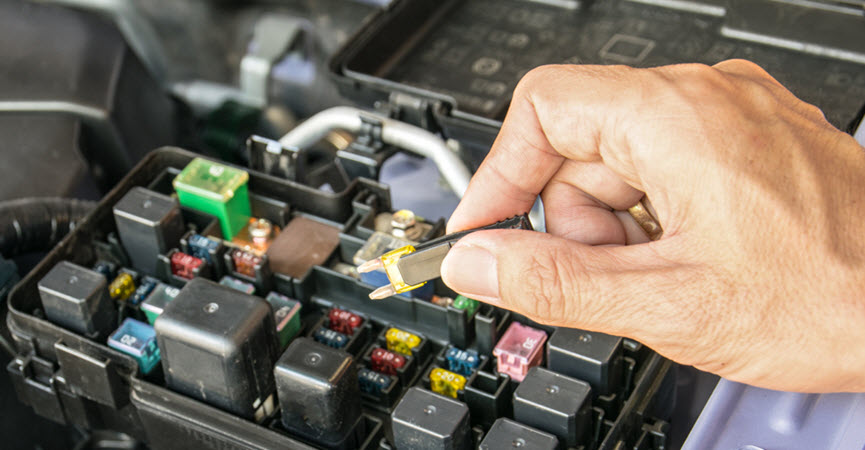
Bring Your Audi To The Experts At JCL Automotive
JCL Automotive is the go-to repair shop for Audi owners in Hellertown, PA, and its surrounding areas. We have been serving Audi owners in the area for years, and we can help you diagnose and fix any issue you have with your car. If you notice any malfunction in your vehicle’s digital dashboard, bring it to our certified Audi technicians. At JCL Automotive, our repairs and maintenance are fast and affordable. Book an appointment with one of our experts now to get the best service for your Audi.
* Audi Car image credit goes to: Evgenia Parajanian.
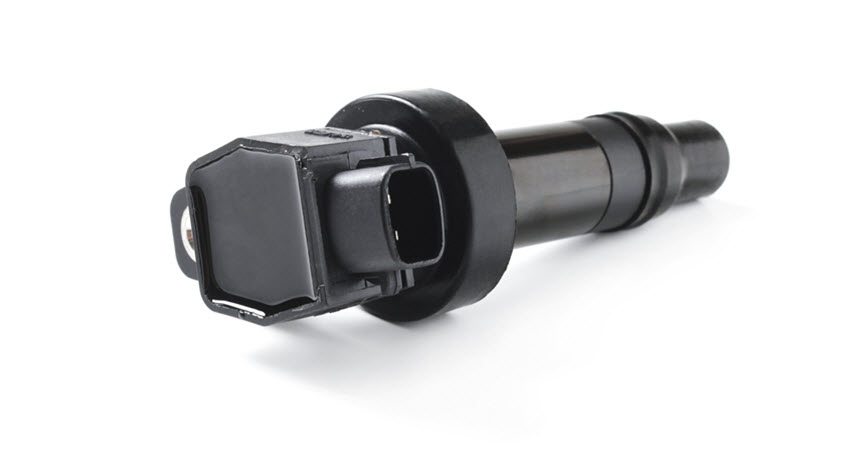
by Chris Limantour | Nov 30, 2022 | BMW Repair
Ignition coil failure is a common issue in BMWs, and it can cause a range of problems with your vehicle’s performance. An ignition coil in a BMW is an electromechanical device responsible for transforming the low-voltage energy from a vehicle’s battery into the thousands of volts of electricity. This is needed to power the spark plugs and ignite the air/fuel mixture in the combustion chamber.
This ignition coil is critical for efficient engine operation, as it creates sparks that drive ignition timing and facilitate proper combustion. Without a functioning ignition coil, your BMW may experience slower start-up times, decreased engine efficiency, and ignition system-related trouble codes. In short, it’s essential that you keep your ignition coil in good condition so that your BMW continues to run optimally.
It’s important to be aware of the signs of ignition coil failure so you can address the issue as soon as possible. In this article, we’ll go over some of the most common signs of ignition coil failure in BMWs, as well as what you can do to fix the problem.
How does an ignition coil problem show in my BMW?
One of the most common signs of ignition coil failure is engine misfiring. This can manifest in a variety of ways, including the engine feeling rough or shaking when it’s running, or the vehicle stalling or experiencing power loss. Misfiring can also cause a decrease in fuel efficiency and an increase in emissions. If you notice any of these issues with your BMW, it’s worth checking the ignition coils to see if they’re the cause.
Another sign of ignition coil failure is a decrease in power and acceleration. If your BMW feels sluggish or isn’t able to achieve its usual level of performance, this could be a sign that one or more of the ignition coils are failing. This can also manifest as a “bogging down” effect when you try to accelerate, or the engine feeling like it’s struggling to produce power.
A third sign to watch out for is a check engine light on your dashboard. This can indicate a variety of issues with your vehicle, but if you’ve noticed any of the other signs of ignition coil failure (such as misfiring or a decrease in power), it’s worth checking the ignition coils as a possible cause.
If you suspect that your BMW’s ignition coils are failing, the first thing you should do is have the vehicle inspected by a mechanic. They’ll be able to diagnose the issue and determine whether the ignition coils are indeed the problem. If they are, the mechanic will be able to replace them for you.
The Usual Reasons the Ignition Coil Fails
It’s worth noting that ignition coils can fail for a variety of reasons. One common cause is wear and tear over time, as the ignition coils are subjected to high voltage and heat on a regular basis. However, issues with the fuel system or other components of the vehicle can also cause ignition coils to fail.
Also, damaged ignition coils from physical contact with debris, leaks of coolant or oil onto the ignition coils, and bad wiring that prevents power from getting to the ignition coils.
Additionally, due to the complexity of parts used in a BMW, there may also be certain specific failures that are unique to BMW ignition systems. It is always important to have an understanding of what can cause ignition coil failure and take steps to avoid it occurring.
For these reasons, it’s important to be aware of the signs of ignition coil failure in your BMW so you can address the issue as soon as possible. This can help prevent further damage to your vehicle and keep it running smoothly. If you notice any of the symptoms we’ve described, be sure to have your BMW inspected by our certified BMW mechanics to determine the cause of the problem and get it fixed.
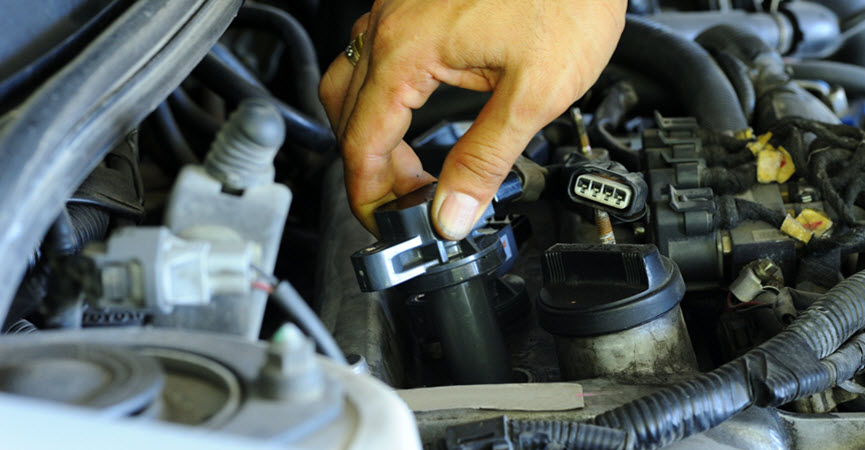
JCL Automotive
At JCL Automotive, our certified mechanics specialize in the most popular European vehicles on our roads. We offer complete maintenance programs that keep your car or SUV running in like-new condition so you can continue to drive a dependable and enjoyable vehicle. Visit us from the nearby communities and towns around Hellertown, PA to give your BMW the best care from our independent expert mechanics. Call or visit us today.
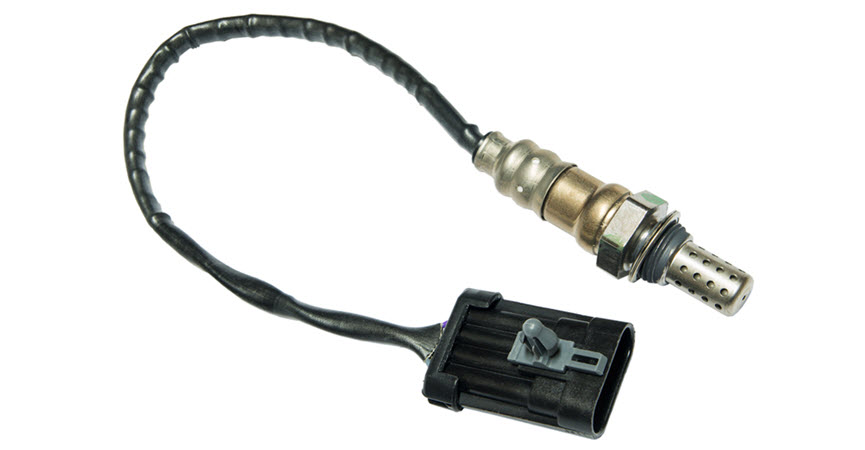
by Chris Limantour | Nov 13, 2022 | Audi Repair
In recent years, Audi has emerged as one of the most popular luxury car brands in the world. There are a number of reasons for Audi’s popularity, including its reputation for quality, its wide range of models, and its many innovative features. First and foremost, Audi is known for its attention to detail and high build quality. This is evident in everything from the fit and finish of the interior to the way the car drives. In addition, Audi offers a wide variety of models to suit every need and budget. From the compact A3 to the flagship A8, there is an Audi for everyone. Finally, Audi cars are packed with cutting-edge technology, from infotainment systems to driver assistance features. This makes them not only fun to drive but also safe and easy to live with. It’s no wonder that Audis have become such a popular choice for luxury car buyers around the globe.
Audi drivers are known for their attention to detail and their commitment to driving a high-quality vehicle. For these reasons, it is important to know the signs of a failing oxygen sensor. Not only will this help to keep your Audi running smoothly, but it will also help to protect the environment by preventing excess emissions from entering the atmosphere. With a little bit of knowledge and attention, you can keep your Audi running like new for years to come.
What is an oxygen sensor?
An oxygen sensor is a crucial component of a car’s emission control system. It monitors the level of oxygen in the exhaust gas and adjusts the air-fuel mixture accordingly. This helps to ensure that the engine is running as efficiently as possible and reduces emissions of harmful pollutants. Oxygen sensors are typically located in the exhaust pipe, downstream of the catalytic converter. They are made from durable materials that can withstand high temperatures, vibrations, and corrosive gasses. Over time, however, they can become coated with deposits or damaged, which can cause the engine to run less efficiently and produce more pollution. For this reason, it is important to have the oxygen sensor checked regularly and replaced as needed.
Signs of Oxygen Sensor Failure
One of the most common signs that your oxygen sensor may be failing is a decrease in fuel efficiency. If your vehicle seems to be using more gasoline than usual, it could be because the oxygen sensor is not accurately measuring the amount of oxygen in the exhaust, causing the engine to run less efficiently. Another telltale sign of a failing oxygen sensor is an illuminated check engine light. This typically indicates that there is a problem with the emission control system, and it should be diagnosed by a qualified technician as soon as possible. If you notice either of these symptoms, or any others that seem unusual, it’s important to have your vehicle checked out to ensure that the oxygen sensor is functioning properly.
Don’t Ignore the Signs of Oxygen Sensor Failure
Oxygen sensors are an important part of a car’s emission control system, and they play a key role in maintaining optimal engine performance. When they fail, it can have serious consequences for both the engine and the environment. One of the most immediate dangers of ignoring oxygen sensor failure is increased emissions. A faulty oxygen sensor can cause the engine to run too lean, leading to higher levels of dangerous pollutants like carbon monoxide. In addition, it can also lead to decreased fuel efficiency and increased wear on engine parts. Ignoring oxygen sensor failure can also eventually cause engine damage, as the lean air/fuel mixture can cause misfires and other problems. In extreme cases, it can even lead to engine failure. As you can see, it’s important to take care of oxygen sensor problems as soon as they arise. Neglecting them can have serious consequences for both your car and the environment.
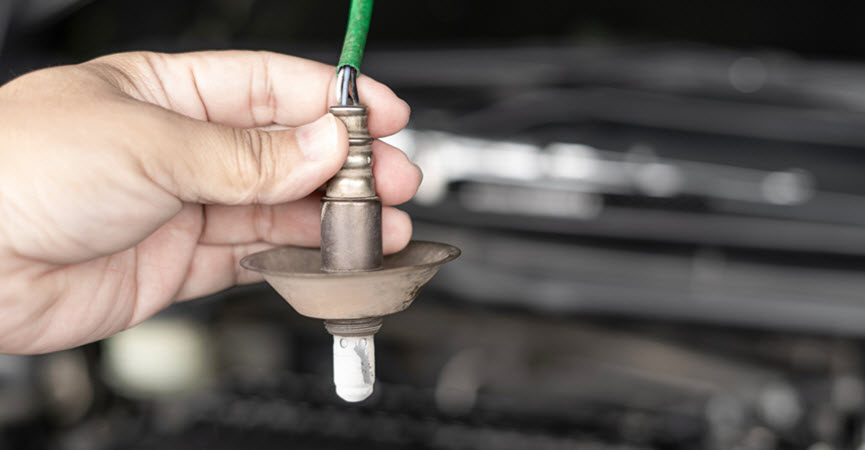
Bring Your Audi to JCL Automotive
If you suspect your Audi’s O2 sensor may be experiencing problems, bring it to the experts at JCL Automotive for a full diagnostic and repair service. Our skilled service technicians are ready and waiting to help. If you live in or around Hellertown, PA, call or stop by today!
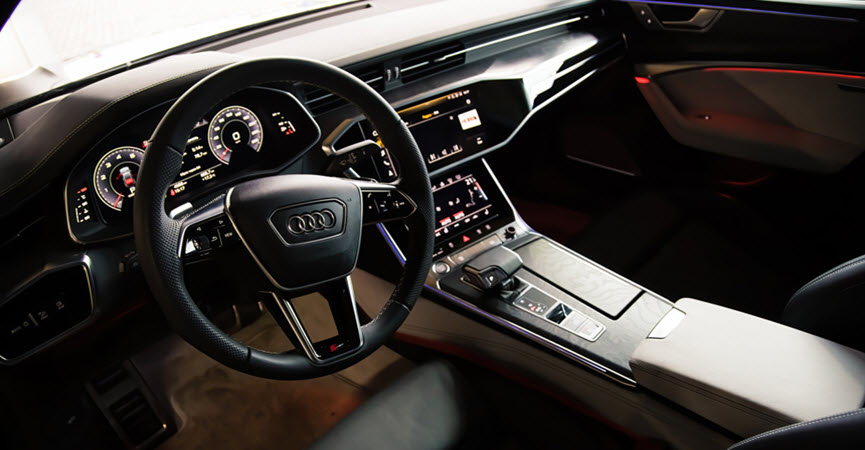
by Chris Limantour | Oct 27, 2022 | Audi Repair
S Tronic is Audi’s name for their dual clutch automatic transmission. S Tronic transmissions are designed to offer the best of both worlds: the fuel economy of a manual transmission with the convenience of an automatic.
S Tronic transmissions are available on a variety of Audi models, including the A4, A5, and A6. S Tronic transmissions use two clutches to engage the gears, one for odd-numbered gears and one for even-numbered gears. This allows for quick, precise shifts with no interruption in power delivery.
S Tronic transmissions also feature launch control, which allows the driver to make the most of the engine’s power when accelerating from a stop. For drivers who want the ultimate in performance and convenience, S Tronic is the way to go. Let’s dive into this amazing and fun transmission and what it can do to enhance your drive.
Inside the S Tronic System
The S Tronic transmission is a type of automatic gearbox that’s fitted to many Audi models. It’s made up of several parts, including:
The transmission control unit (TCU)
The transmission control unit, or TCU for short, is one of the most important parts in your car’s engine. It makes sure that you can change gears smoothly and efficiently. This enables faster driving conditions with less risk of accident, because it helps drivers maintain higher speeds without forcing them into sudden stops.
The clutch
The clutch in an S Tronic transmission is responsible for transferring power from the engine to the transmission. When the clutch is disengaged, it allows the engine to spin without turning the transmission. The clutch is controlled by a hydraulic system that is activated when you press the clutch pedal. The clutch pedal is connected to a master cylinder, which contains fluid that is used to pressurize the clutch system. The pressure from the fluid activates a series of pistons that push against the clutch plate, disengaging it from the flywheel. This allows the engine to spin without turning the transmission. When you release the clutch pedal, the pressure is released and the clutch plate is able to re-engage with the flywheel, transferring power to the transmission.
The gearbox
The gearbox in an Audi is a complex piece of machinery that is responsible for transferring power from the engine to the wheels. The gearbox consists of a number of gears that are meshed together, and each gear has a different ratio. When the engine is running, the gearbox is constantly spinning and shifting gears in order to provide the correct amount of power to the wheels. The gearbox is an essential component of any car, and it must be carefully maintained in order to avoid problems.
The differential
The differential helps to distribute power from one wheel to another for greater control in diverse situations like turning corners at high speeds.
Various sensors and Actuators
Transmission sensors, also called speed sensors, are used by the transmission control module to monitor the speed of the transmission gears. The transmission control module uses this information to determine when to shift gears. There are usually two transmission sensors; one for each gear.
In most cars, there is one actuator for each gear. However, Audi is an example of a car that has two actuators per gear. Each transmission sensor and actuator is specific to the transmission it is used in and is not interchangeable with other transmissions.
How to Enjoy the S Tronic Transmission
Audi’s with S Tronic transmissions have an extra shift paddle on the steering wheel, which is used to engage manual mode. To use S Tronic, simply put the car in drive and let the transmission do its work.
For regular driving, there is no need to use the paddle shifters. However, when more power is needed, engaging manual mode will allow the driver to select the desired gear. S Tronic provides quick and seamless shifts, making it a great choice for both performance and everyday driving! Audi’s S Tronic transmission is a great option for those who want the best of both worlds, and the fun that comes with driving a performance sports car.
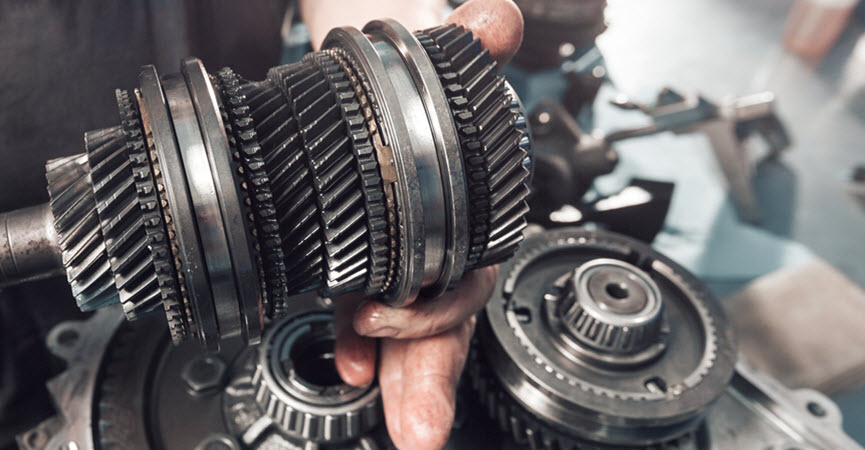
We are Your S Tronic Transmission Experts
JCL is your Audi specialist in the Hellertown area. We are conveniently located to serve our neighbors in surrounding communities, including:
- Allentown
- Bethlehem
- Easton
- Quakertown
Whether it’s annual maintenance or emergency repairs, our friendly staff is here to help so please, call or visit our shop today for an appointment or with any questions you may have about service.
* Audi A7 Car image credit goes to: Dmitrii Guldin.

by Chris Limantour | Oct 10, 2022 | Audi Repair
The Audi brand is continually looking for new and inventive methods to further enhance its designs, which are already loaded with cutting-edge technology. The company has become one of the most well-known automakers in the world because of its mechanical innovation and technical advancement. Still, Audi cars may be prone to exhaust component failure if the car is not maintained properly.
One of the most crucial systems in your car is the exhaust system. Its function is to regulate emissions that might be harmful to the environment. It also guards your engine against dangerous pollutants. Not only that, it prevents harmful exhaust gasses from entering the passenger compartment.
Your exhaust system as a whole must be functioning properly. If not, it will impact the performance of your car and perhaps your health. A faulty exhaust system can potentially cause serious engine damage that is very expensive to fix if it is not addressed.
Causes of Failure in the Exhaust of Your Audi
The exhaust system of your Audi may fail if there is a problem like a leak, a fault, or rust in any of the components of the exhaust. This includes the exhaust pipes, oxygen sensor, catalytic converter, muffler manifold gaskets, diesel particulate filter, silencer, or any other component in the system.
Tell-tale Signs of Exhaust Problems in Your Audi
- Excessive Engine Noise: An unusually-noisy engine is one of the obvious indications of exhaust issues in your Audi. A damaged exhaust manifold gasket will cause an exhaust leak that produces a tapping or hissing The noise will be very loud when you speed up the car or give it a start.
- Decrease in Speed and Power: Your engine’s performance will start to suffer if your exhaust system malfunctions. You will notice difficulty accelerating as quickly as you used to, and you won’t gain the same power when you do. If you don’t fix this issue, it will only get worse.
- Decrease in Efficiency of Fuel: If your vehicle’s acceleration and power drop so would its fuel economy. To perform normally, your Audi would work harder, using up more gasoline. You may think that replacing or repairing your exhaust would cost you a lot, but if you don’t have it fixed, you’ll start paying a lot more for petrol.
- Burning smell from the engine: The high temperature from the exhaust fumes may cause any plastic components under the hood to burn if your gasket breaks and starts to leak close to the engine wiring or any other components made of plastic. The burning components would emit an odor similar to that of a burning engine. It may also emit a little amount of smoke. However, you shouldn’t wait until you see smoke before having it examined. To prevent any possibility of harm to yourself or your passengers, get your car examined as soon as you notice any burning smells or smoke.
- Loose Exhaust Pipe: Repairing the exhaust pipe of your Audi is important if it is dangling on the ground. The pipe might start to dangle underneath the car if any portion of it becomes damaged, even if it doesn’t leak. Not only does the dragging endanger you, but it also endangers the drivers around you if it comes loose from the car.
- Fuel smell from inside the car: While you’re driving, if you perceive fuel inside your car, there may be an exhaust issue. Usually, it results from a damaged exhaust pipe or tube that starts to leak. When it occurs, gasoline fumes escape via every opening they may find. Your car’s cabin may serve as such a location occasionally.
These are only a few signs that your car’s exhaust system needs repair. You need to take your car to a professional technician if the following symptoms are noticed in your car.
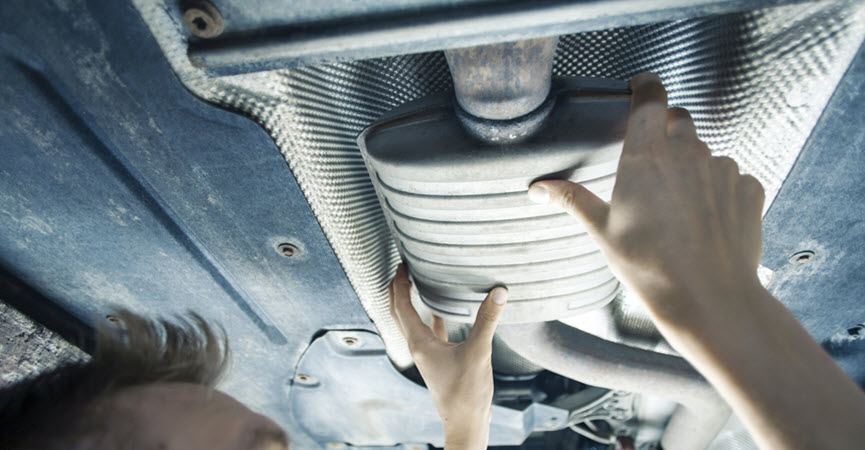
Bring your Car to JCL Automotive for Repair
If you need help with your Audi exhaust system, visit us at JCL Automotive for repair. Our professional technicians are certified and trained in the repair and maintenance of Audi vehicles. We are equipped with high-quality equipment and tools to provide the best service.
Our shop is in Hellertown, PA, and we provide services to car owners in the surrounding communities! Call or visit our shop to set up your next service appointment. We look forward to earning your trust for future Audi service appointments.
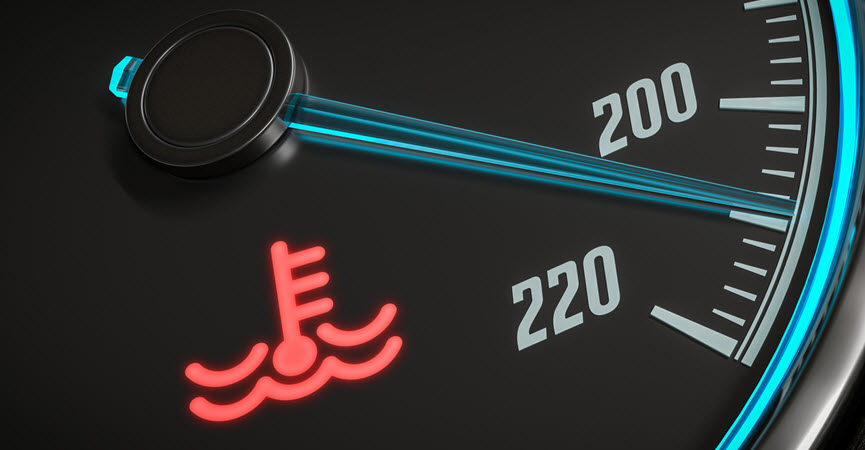
by Chris Limantour | Sep 23, 2022 | BMW Repair
BMWs are known for their luxurious feel and performance on the road, but what makes them run so smoothly? Part of it has to do with the BMW cooling system. The BMW cooling system has several components that work together to keep the engine at a regulated temperature, even when things start to heat up.
The main component of the BMW cooling system is the radiator. The radiator contains a liquid coolant that helps to dissipate heat from the engine. The coolant is circulated through the engine by a water pump, and then returns to the radiator where it can be cooled again. Finally, the fan helps to cool the radiator by blowing air through it. Together, these components work to keep the BMW engine running at a safe temperature.
In addition, BMWs have an oil cooler that helps to keep engine oil at a consistent temperature. By circulating oil through this cooler, BMWs are able to maintain optimal engine performance, even in hot weather. Together, these components make up the BMW cooling system, and help to ensure that BMWs can perform at their best no matter what the conditions are, unless something goes wrong and the coolant light illuminates on your dashboard.
Keep and Eye out for These Cooling System Problems
BMWs are known for their luxurious features and cutting-edge engineering, but even the best cars can have problems. When failure of the cooling system happens, it can lead to a number of problems, so it’s important to be aware of the warning signs.
One sign that the cooling system may be failing is an overheating engine. If the temperature gauge on the dash starts to climb into the red zone, or if the engine starts to smoke, this is a sign that something is wrong.
Another symptom of a cooling system problem is steam coming from under the hood. This is a sure sign that there’s too much pressure in the system and that coolant is escaping.
Other signs that the BMW’s cooling system may be failing include a drop in engine performance, strange noises coming from under the hood, and leaks in the cooling system itself. If any of these warning signs are present, it’s important to have the BMW checked out by our qualified mechanics as soon as possible to avoid more serious issues.
The Usual Culprits
There are several reasons why this might happen, including:
- A leak in the coolant reservoir: Over time, the seals around the coolant reservoir can break down, allowing coolant to leak out. This can cause the engine to overheat, leading to cooling system failure.
- A failed water pump: The water pump is responsible for circulating coolant throughout the engine. If it fails, coolant will not be properly circulated and the engine will overheat.
- A blocked radiator: If the radiator becomes blocked with debris or dirt, it will not be able to dissipate heat properly and the engine will overheat.
- A failed thermostat: The thermostat is responsible for regulating the temperature of the engine coolant. If it fails, the engine may overheat or run too cold, causing cooling system failure.
If you notice any of these issues with your BMW, it’s important to take it to a qualified mechanic as soon as possible to avoid further damage.
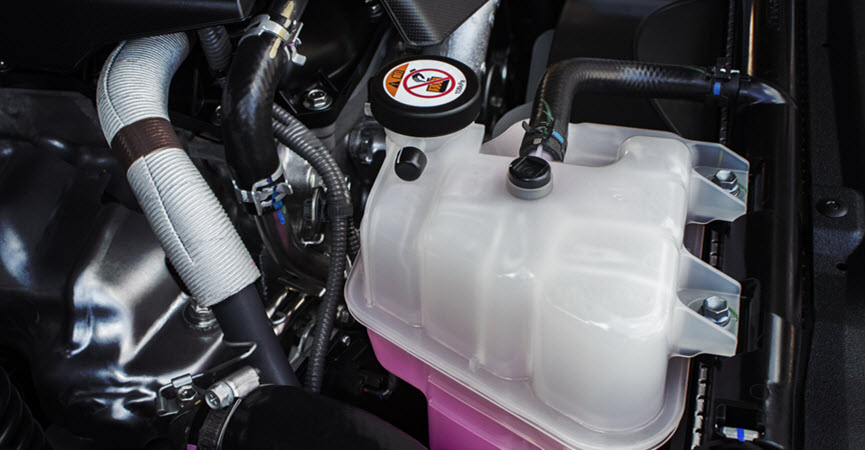
JCL Automotive
When it is time for service for your BMW, we want your experience at our shop to be a positive one. Since we first opened our doors in 2005 we’ve taken pride in providing our clients with a quality experience and building relationships that last through the years. We’re very proud to welcome back many repeat clients and referrals and we look forward to helping you take better care of your car as well. Our amenities are designed to with your convenience in mind and include:
- Complimentary Wi-Fi
- Ride to Work or Home
- After-Hours Drop-Off & Pick-Up
- Same Day Services
- And More!
Your BMW is an investment, and you want to ensure it stays in top condition on our Hellertown, PA roadways. Providing routine maintenance and servicing on demand is essential to keeping your BMW running smoothly for years to come. Call us today to schedule a convenient appointment!
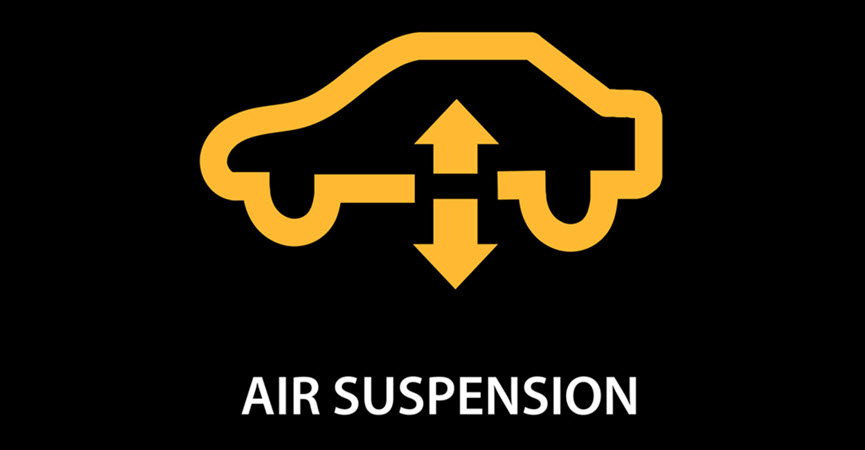
by Chris Limantour | Sep 6, 2022 | Mercedes Repair
The air suspension system in a Mercedes is responsible for providing a comfortable ride by cushioning the effects of bumps and potholes. However, the system can fail if there is a leak in the airbags or a problem with the compressor. When this happens, the air suspension system will need to be repaired or replaced. Depending on the severity of the problem, this can be a costly repair. This is why it is important to have the air suspension system inspected regularly to avoid any costly repairs. Let’s look closer at this issue.
Leaks, Broken Sensors and Failing Parts
There are four primary causes of air suspension failure: leaks, sensor problems, electrical issues, and compressors.
Leaks are perhaps the most common cause of air suspension failure. Over time, air compressor seals can degrade, causing air to leak from the system. This can lead to a loss of pressure, which in turn can cause the air springs to collapse.
Sensor problems can also cause air suspension failure. Air suspensions use sensors to monitor air pressure and adjust the system accordingly. If a sensor fails, it can cause air accumulations or air leakage, resulting in a loss of pressure and air spring collapse.
Electrical issues can also lead to air suspension problems in your Mercedes model. If there is an electrical problem with the air compressor or other components, it can prevent the air suspension from functioning properly.
Finally, compressors can also fail, causing the entire system to lose pressure and collapse.
While air suspension failure can be caused by a number of factors, if you suspect that your air suspension has failed, it is important to have it inspected by a qualified Mercedes mechanic as soon as possible.
Watch for These Warning Signs
There are several signs that air suspension failure may be imminent in a Mercedes. First, the ride may become noticeably rougher, as the air shocks can no longer cushion the bumps in the road.
Next, your car may begin to sag in one or more corners, as air leaks out of the suspension system. Your Mercedes car may also make strange noises when driving over bumps, as air escapes from the shocks.
Finally, the check engine light may come on because air pressure sensors detect a drop in air pressure.
If any of these signs are present, it is important to have the air suspension system checked by our qualified mechanics. Failure to do so could result in further damage to the suspension system, and potentially even to the frame of the car.
Expert Air Suspension Repair by JCL Automotive
Our qualified mechanics have the training and experience necessary to diagnose the problem with your Mercedes air suspension and make any necessary repairs. We will check for leaks in the air system first. If we find any, we will need to replace the affected parts. Then we will move on to check the suspension airbags for damage. If they are damaged, we will need to replace them. Last, we check the air compressor for proper operation. If it is not working properly, we may be able to repair it, but if not, we will need to replace it. Because it can be tricky to find the root cause, it’s important to bring your Mercedes to specialists who won’t misdiagnose your car’s problem.

Having your Mercedes serviced isn’t the most exciting activity you can do, but when you drive a European car, it’s important that you take the proper steps to maintain your vehicle to preserve its engine performance and keep its amenities functioning to keep you comfortable. Your safety and pleasure when driving your car is second on our goals to excellence in customer service. At JCL Automotive, we pride ourselves on making maintenance easier for drivers all throughout the Hellertown, PA area.
With a commitment to quality work and exceptional customer service, our technicians are proud to help you keep your car running at the level you depend on daily. Give us a call today or stop by our auto center to speak with one of our friendly staff about your Mercedes needs. We look forward to earning your patronage.
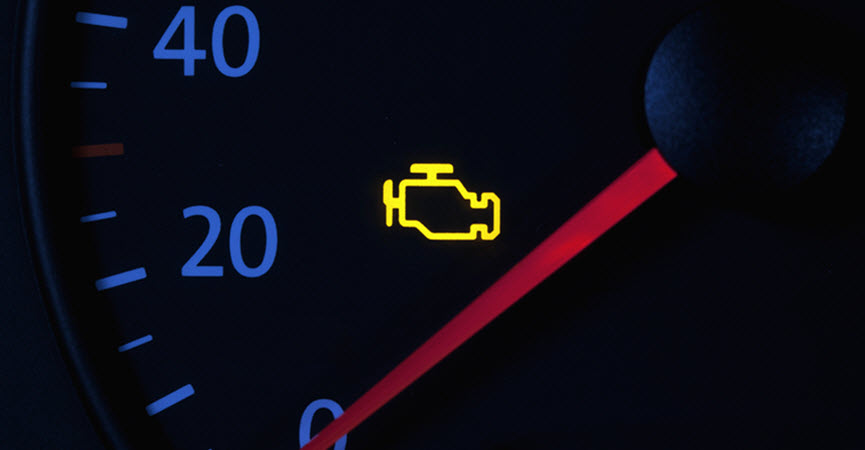
by Chris Limantour | Aug 20, 2022 | BMW Repair
BMW cars are incredibly intelligent and meticulously crafted machines. As a result, your BMW is equipped with various technologically-advanced systems to safeguard you and your vehicle against the adverse effects of severe components failure. The check engine light is one such system. Let’s discuss more about how the check engine light works and the types of component failures that can result in this warning light illuminating on your dashboard.
The Purpose of the Check Engine Light
The Check Engine Light (CEL), also known as Engine Management Light (EML), is a warning indicator found on the dashboard of your BMW. This light illuminates when more serious issues are detected within any of your vehicle’s systems or components that are connected to the engine and its exhaust system.
The CEL is connected directly to the Engine Control Unit (ECU) of your BMW, which is the vehicle’s main computer. As soon as the ECU detects an issue with one of the above systems, it sends out an error code and triggers the check engine light. The error code can then diagnose and repair the issue properly.
The severity of the problem determines a driver’s response to the CEL. Even if your vehicle appears to be operating correctly, you should reduce your speed and come to our certified repair center. You should pull over if the light illuminates red or if your vehicle does not appear to be safe. In that case, contact a tow service to bring your car to our repair facility.
Reasons Why the Check Engine Light (CEL) May Come On
Many factors can cause this essential warning light to illuminate. Here are a few of the most common reasons this may occur, how hazardous their impact might be to your car, and how you should handle it:
- Damaged Fuel Pumps: The fuel pump delivers pressurized fuel to the fuel injectors in the engine. If the fuel pump is damaged, it will not function appropriately, preventing the power from entering the machine correctly, resulting in rough running. As a result, the check engine light will be activated by the ECU, and your BMW engine is at a high risk of experiencing misfiring.
- Loose Fuel Caps: Drivers are most commonly guilty of this problem when distracted at the pump and do not correctly tighten their fuel cap. When the cap is loose, extra air can enter the tank and displace the pressure in the tank. Consequently, one of the many sensors in the car will detect a problem and alert the engine control unit. In general, this is the most common and easiest cause of the illumination of the check engine light and should be eliminated first.
- Worn Vacuum Hoses: The vacuum hoses are necessary to channel fresh air and exhaust around the engine to ensure optimum performance. The vacuum hose is made of rubber material, making them susceptible to breaking down due to the high temperatures inside a machine. This can eventually lead to cracks or deterioration. As a result, the engine’s sensors may report problems to the ECU because the precise balance of gases has been tipped, causing the check engine light to appear on the dashboard.
- Clogged Particulate Filters: The particulate filter is most commonly found on diesel-powered vehicles, although it is now introduced to gasoline-powered cars. As a result of combustion processes, particles such as soot are produced. The particulate filter is responsible for collecting these particles. Once the filter becomes clogged, soot will begin to settle within the engine and start to contaminate the delicate components. There is a pressing need to resolve this issue as soon as possible, as if the filter becomes damaged beyond repair, you are likely to face extensive costs.
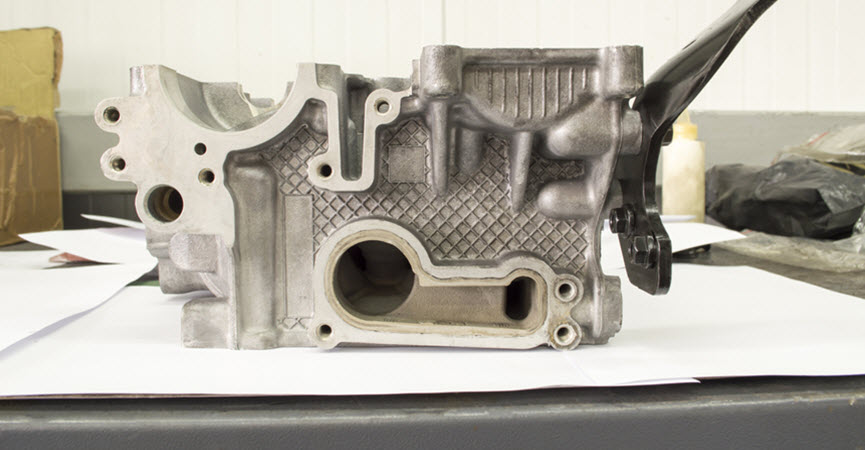
Come to JCL Automotive in Hellertown for Expert Service
JCL Automotive has dominated the automotive repair market in the region for over ten years, as the largest independent provider of automotive services. Our service department is the best choice for maintaining the performance of your BMW.
We are pleased to offer Hellertown and nearby residents the services that you have come to expect along with many more! JCL Automotive also offers customers inspections and emissions certifications in Pennsylvania. Thanks to our certified mechanics and our staff’s capabilities, we expertly handle all of your BMW service needs. Call us today to schedule an appointment!
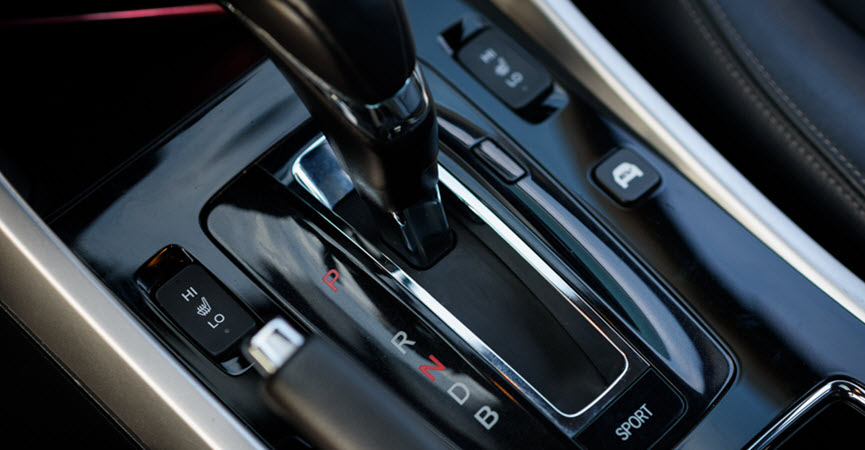
by Chris Limantour | Aug 4, 2022 | Mercedes Repair
Mercedes is well-known throughout the world for its high-performance and reliable engines, which makes it more of a burden when you encounter car troubles like a gear selection failure. Transmission problems are usually a reason for concern, but gear selector failure is frequently more bothersome and costly to fix. It is critical to notice its warning signs as early as possible in order to avoid long-term complications.
In this article, you’ll find out why gear selection is important to a car’s transmission, the reasons for its failure, the warning signs, and what you should do if you’re experiencing gear selector trouble or a total failure of the gear selector.
The Role of the Gear Selector in Your Mercedes
One of the most important parts of your vehicle is the gear selector, even though it is often overlooked. It is through the gear selector that your car communicates with the transmission system. A gear selector in an automatic transmission lets the car change between different gears like drive, neutral, and reverse. (To change gears in a manual transmission, you use a gear shifter, which is different from the gear selector.)
It is critical that this transmission component functions properly, otherwise you will find yourself traveling backward when you ought to be moving forward. That might certainly pose a risk to individuals on the road, not to mention that it might have a significant influence on your transmission’s condition. This can be costly to repair.
A gear selector is a crucial component of your car, so if it has a problem, it is important to bring it to our Mercedes experts as soon as possible.
Common Reasons for Gear Selection Failures
- Normal Wear and Tear: Either an automatic or manual transmission installed in your Mercedes will begin to exhibit symptoms of wear and tear over time. With extensive usage, the gears and cables will begin to wear down. It’s critical to hold a routine maintenance schedule and to have your transmission fluid checked and refilled as needed. These maintenance procedures will assist in avoiding increased wear and tear while also allowing your Mercedes specialist to look for additional damage or possible concerns.
- Failure of the Valve Body: The valve body in your Mercedes transmission aids the flow of the transmission fluid throughout the car’s transmission system, allowing for smooth shifting between gears. The valve body can wear and tear over time, and if it gets damaged, you will sense the impact when shifting between gears in your Mercedes. If the problem is with the valve body, the component must be entirely replaced.
Warning Signs Of A Failed Gear Selector
Here are some of the most prevalent symptoms of gear selector failure:
- Gear slipping: This is a common sign of a faulty gear selector. In this case, you are not changing your speed but the transmission suddenly slips into a higher (or lower) gear despite the car being in the same gear as you were driving. Additionally, the car may suddenly shift to a lower gear while accelerating, when it should be shifting to higher gears.
- Shifting Gears Issues: When you instruct it to, your car should shift between gears promptly. On the other hand, if you observe it hesitating or if you continue to travel ahead after shifting into reverse, this is an indication that the transmission is experiencing difficulties.
How To Deal With Gear Selection Issues
Whenever a transmission issue arises, such as gear selection failure, it is crucial to resolve it as soon as possible. If you ignore the problem, you may face more costly transmission difficulties in the future or you may be stuck in Park when you need to go to work. Instead of relying on luck, allow our professionals to handle your automobile’s needs.
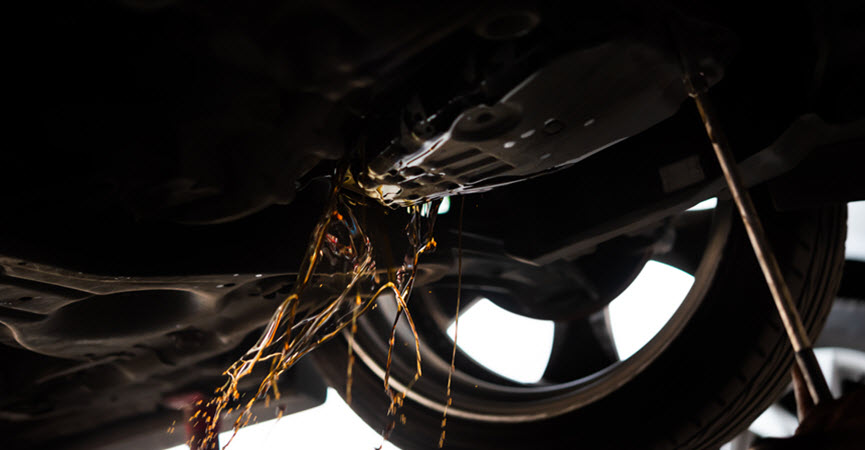
JCL Automotive: Your Mercedes Professionals in Hellertown, PA
As the leading independent automotive service provider in the region for more than 10 years, JCL Automotive has dominated the automotive market. For the best performance of your Mercedes, you can always rely on us for service. We are pleased to announce that since our recent move into the heart of Hellertown, PA, we can now provide many of the same services you have come to expect, as well as many others.
As of now, JCL Automotive offers PA state inspections and emissions certifications to our customers. We are confident that we can meet all of your Mercedes service needs with our expanded staff and capabilities. Call us today!

by Chris Limantour | Jul 19, 2022 | Auto Maintenance
Mercedes is a luxury car brand that’s known for its quality craftsmanship and attention to detail. If you own a Mercedes, you want to do everything you can to keep it running like new. That’s why it’s important to stay on top of Mercedes maintenance.
Routine service is the key to keeping your Mercedes running smoothly and efficiently. By following the recommended Mercedes maintenance schedule that is in your owner’s manual, you can avoid potential problems down the road and keep your car looking its best and running in top condition. So what does the Mercedes maintenance schedule entail? Depending on the model of Mercedes, there are different service intervals for different services. Let’s take a closer look.
How to Keep Your Mercedes Running Like New
The Mercedes maintenance schedule should be followed in order to ensure that your car receives the proper care. Oil changes should be done every 5,000 miles or 6 months, whichever comes first. Other services recommended by Mercedes include:
- Tire rotations: Many car owners are unaware of the importance of tire rotations. By rotating your tires on a regular basis, you can help to ensure that they wear evenly. This can not only improve your gas mileage, but also help to extend the life of your tires. Tire rotations also help to ensure that your Mercedes handles properly.
- Brake inspections: The brake system is one of the most important safety features on a Mercedes. To ensure that your brakes are in good working order, it is important to have them inspected on a regular basis. During a brake inspection, a technician will check for wear and tear on the brake pads, discs, and calipers. They will also inspect the brake fluid level and condition, and look for any leaks in the system. If any problems are found, they can be repaired before they cause more serious damage or lead to an accident.
- Engine tune-ups are important for a number of reasons. First, they help to ensure that your engine is running at peak performance. This can improve fuel economy and reduce emissions. Additionally, engine tune ups can help to extend the life of your engine by keeping it clean and free of build-up. Over time, dirt and debris can accumulate on engine parts, causing wear and tear. A tune up can help to remove this build-up and keep your engine running smoothly. Finally, engine tune ups can help you avoid costly repairs down the road.
- Fluid changes: Mercedes recommends fluid changes at specific intervals in order to keep the car running smoothly. However, fluid changes can be expensive, so it is important to weigh the cost against the benefits before deciding whether or not to have one done. Ultimately, the decision of whether or not to have a fluid change should be made by a qualified professional after a thorough inspection has been performed.
- Other maintenance includes transmission inspections, suspension checks, and coolant system flushes.
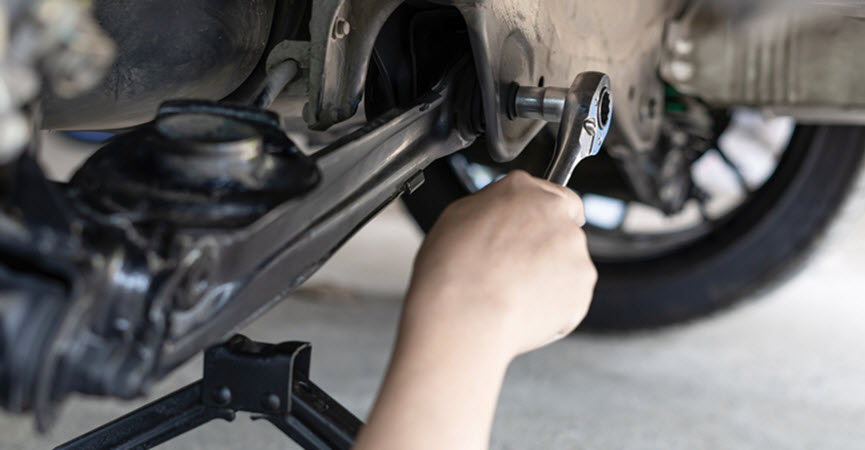
JCL Automotive: Mercedes Specialists
By following the Mercedes maintenance schedule and having routine service performed, you can keep your car running smoothly for years to come. If you decide to take your Mercedes to a service center for maintenance, there are a few things you can expect. First, you’ll need to schedule an appointment in advance. When you arrive for your appointment, the technicians will inspect your Mercedes and let you know what needs to be done.
At JCL Automotive in Hellertown, our versatility is important to us. We happily welcome domestic and foreign vehicles specialize in servicing all models of:
With decades of experience, our certified technicians know how important it is that your vehicle gets the services it needs. We know that each make and model has unique service requirements and our team will always work with you to make sure your car stays on its service schedule.
Make an Appointment Today
Scheduling an appointment at a Mercedes service center is the best way to ensure that your car gets the care it needs. Our technicians are highly trained and will identify any potential problems with your car right away. We will let you know what needs to be done in order to keep your Mercedes running like new, so give us a call and schedule your next appointment!
* Mercedes-Benz Car image credit goes to: Viktor4ik.

by Chris Limantour | Jul 3, 2022 | Auto Maintenance, BMW Repair
The BMW is a luxury car built with high performance, and every BMW driver wants to enjoy every comfort it has to offer and trust in the safety features built into their model. When we think of safety in a car, the first thing that comes to mind is the brakes. If your brakes are not in good order, then you are putting yourself and other road users at risk of an accident.
It is important to note, however, that driving behavior affects the life of a brake considerably. Drivers who often come to a sudden halt will need to change their brake pads more frequently than those who cruise to a stop.
The brakes of cars moving slowly through cities are more easily worn than those of cars traveling on wide rural roads, and the brakes of cars traveling downhill are worn down faster than those traveling on flat suburban roads. For your car’s brakes to perform properly when you need them, regular maintenance is required.
The Benefits of Regular Brake Maintenance
Here are some benefits you can expect as a driver when you have your vehicle’s brakes serviced on a regular basis.
- Quiet Ride: Having your brakes serviced can reduce the amount of stress and hassles you encounter on a daily basis by providing a calmer, more peaceful environment in your car. The smoother ride that your properly maintained brakes provide will lessen noise from outside your cabin, allowing you to enjoy conversation or music instead of background noise on your journey. If you wish to enjoy this tranquility, have your BMW brakes serviced.
- Improved Fuel Efficiency: You might also save money on gas if you have well-maintained brakes. If your brakes work properly, less energy is wasted, which means less gasoline is required to keep your car on the road.
- More Accurate Driving: You will enjoy driving more when your brakes function properly, as they will enhance your vehicle’s ability to manage tight corners and other maneuvers. Having more control over your car will make your journey to your next destination more enjoyable.
- Better Driving Experience: One of the most important parts of vehicle safety is the ability to stop immediately after you apply the brake. If you maintain your brake pads and other components of your braking system, it will improve their reactivity, allowing you to respond to changing road conditions more efficiently. It will prevent you from having a potential mishap and keep you and others safe.
- Save money: It is in everyone’s interest to have cheaper car maintenance. Getting preventative brake service will save you money in the long run compared to waiting for emergencies. A good brake system can prevent damage to other parts of your car, which can save you money in the long run.
- Extend the Life of Your Brakes: If you don’t maintain your vehicle’s brakes properly, you’ll have to replace them very often. You can reduce the amount of money you spend on parts replacement by maintaining your brakes with routine maintenance visits.
- Maintain the Legality of Your Vehicle: A car must satisfy specific requirements in order to be legally certified to drive on the road. You need to carry out regular inspections to ensure that all of its systems are functioning well. Checking the condition of your brakes is part of that inspection. Maintaining your vehicle’s brakes will ensure that it passes its inspection.
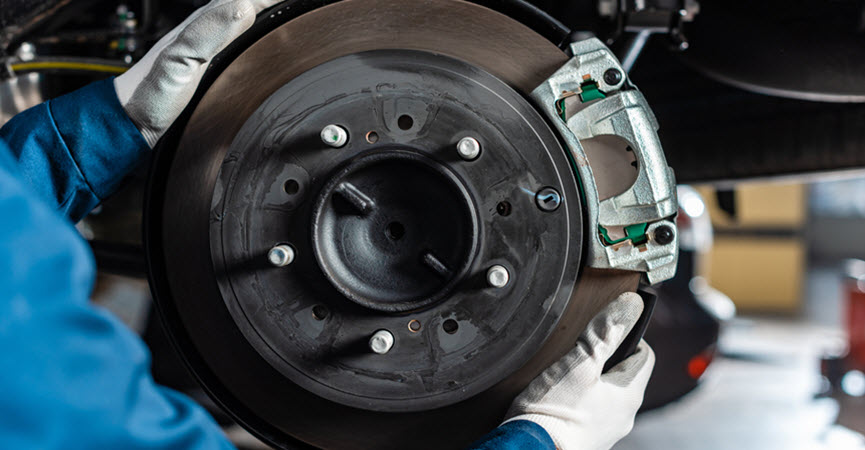
Get the Best Brake Repairs in Hellertown at JCL Automotive
Whether your BMW needs routine maintenance, a new brake pad, or other brake repairs, you can rely on the professionals at JCL Automotive! We are conveniently located in Hellertown, PA and we serve drivers from the neighboring areas. We specialize in BMWs and only utilize BMW OEM parts.
Just like you go to the doctor for a routine check up, your BMW needs it as well. Routine maintenance is the key to longevity for anything that has a lifespan. When you go in for a tire rotation, you should have your brakes tested, too.
Come to our facility and let our service specialists inspect your car to maintain it in the finest possible condition. Our experience and skill will enable them to detect and handle any issues before you have a problem on the road. Call us now to schedule an appointment!
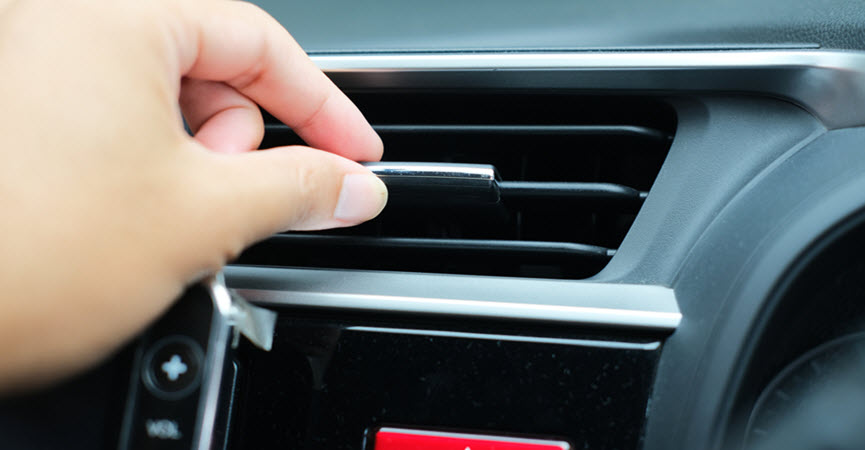
by Chris Limantour | Jun 17, 2022 | BMW Repair
HVAC is an acronym for Heating, Ventilation, and Air Conditioning, and it is responsible for regulating the temperature in the cabin of your BMW. Apart from providing air conditioning or heating, it also helps defrost the windshield for clearer vision.
If the system is not adequately maintained and serviced, it can develop problems. Depending on the time of the year it fails, your driving experience can become unpleasant and frustrating. Knowing the symptoms to look for will help save you from the brutal summer heat or freezing winter cold. Let’s dive deeper into how to recognize a failing HVAC system, its causes, and how to solve the problem.
Symptoms of HVAC Failure in your BMW
One or more of the following signs may indicate that your vehicle’s HVAC system is failing.
- Little or No Airflow: One of the first indicators is that the airflow becomes significantly lower than expected. You may notice that you need to increase the speed of your blower to achieve the same comfort level previously. This is one of the first indicators of the problem, and you may also discover that your defrosters are not operating properly.
- Unusual noises when the fan is on: When the fan is turned on, you may hear strange noise coming from inside the vent. You may notice popping or slapping This is usually the result of an object being sucked in the vent. You may also hear a spinning noise that gets louder as the heating and cooling settings are increased. You may be able to dislodge a foreign object that you see, but if the vent is blocked further down the system, it will require a professional to inspect it.
- Runs at a single speed: If the problem persists for a long time, you may lose the ability to change the settings. It may be difficult to switch it up to the highest setting. Sometimes, the blower will not work at all, even when you turn up the setting to try to get more cool/warm air to blow out.
- Inefficient air temperature exiting vents: It’s common for your air conditioner to take a few moments to cool down when you turn it on, although this usually requires less time in a BMW car due to its strong efficiency. If you observe that the air never cools enough, it’s possible that you have a Freon leak. This can be replaced at a shop for you.
Common Causes of HVAC Blower Failure
Your BMW’s HVAC blower can fail for a variety of reasons.
- Blower Motor Relay Failure: The heating, ventilation, and air conditioning system, as well as the blower, are made up of many components that all work together collectively to keep you comfortable. When one of these components fails, the blower and system can degrade or stop working entirely. To enable the system to function, the blower system relies on many electrical components and connections. When one of these relays breaks down, the blower motor loses its ability to push cool or warm air through the vents. This usually needs replacement of the motor.
- Wear and tear: The blower in your HVAC system is subject to typical wear and tear. A vehicle’s natural breakdown of parts occurs over its lifetime. Although it is irritating to have to replace parts on your BMW, it is unavoidable. Components deteriorate and break as a result of regular usage, the passage of time, and exposure to the elements.
- Manufacturer’s defect: Occasionally, a problem arises during the production process. Even though BMW has high standards for all of its automobiles, errors do occur. Unknown to BMW, a defective component may have slipped through the inspection process.
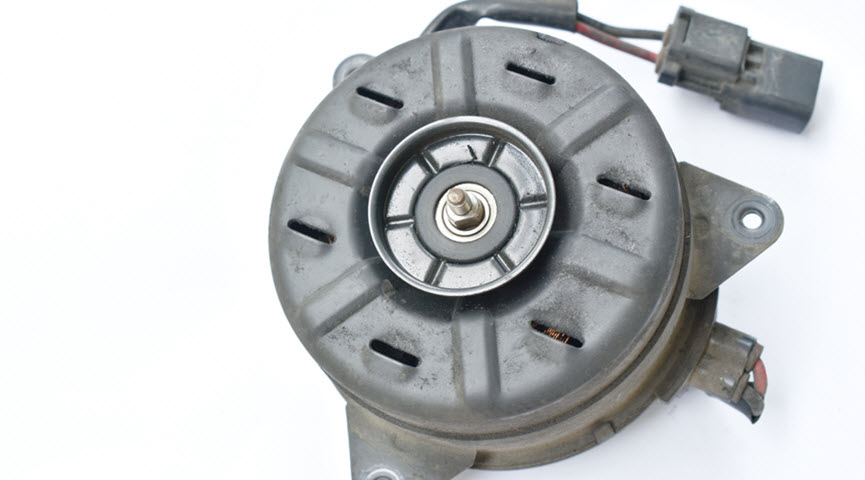
JCL Automotive for All Your BMW Service and Repairs Needs
While your HVAC system is expected to last your vehicle lifetime, extreme temperatures could cause the failure of the system. When it comes to maintenance and part replacement, BMWs require precision and accuracy. At JCL Automotive, our expert mechanics utilize factory-grade tools and equipment to deliver quality service and repairs.
If you drive a BMW and live in Hellertown, PA or the surrounding areas, schedule an appointment with our trained professionals! Whatever the problem, we will work directly with you to get you back on the road as quickly as possible while maintaining the greatest level of care.

by Chris Limantour | Jun 2, 2022 | Tesla Repair
In recent times, advanced technology in the automotive space has ushered in the use of the touch screen as the main means to control our cars. There is no luxury car brand that is more focused on the use of touch screens for its controls than Tesla.
The most recent model produced by the brand is the Tesla Model 3, which is a battery-powered, compact executive fastback saloon designed by Tesla. This particular model has been the best-selling PEV (plug-in electric vehicle) in the United States since 2018. However, as elegant and exotic as this car may be, it is not far from having faults. One such fault or failure is the touch screen failure.
In a situation where traction settings, suspension setups, and defogging of windscreens are controlled by touch, what happens if the screen breaks? Sadly, the Tesla Model 3 touch screen has been a source of concern for some Tesla owners.
Different issues are reported by drivers, some of which seem to fix themselves, while others seem to get worse over time. Tesla may or may not be able to fix these issues depending on the car’s age and the issue, and sometimes it is up to the individual service center. Let’s find out how and if you can fix your issue, and how to assess it.
The Role of The Tesla Model 3 Touch Screen
The touchscreen of the Tesla Model 3 is used to operate various aspects that are normally handled by physical buttons in typical automobiles. For example, the car’s climate control, navigation, and headlights are all controlled via the touchscreen. It is also used to manage media, navigate, access entertainment features, and personalize the Model 3 to suit your needs. The navigation section is the centerpiece of the touchscreen.
Some Common Problems Associated With Tesla’s Screen
The majority of reported Tesla screen problems we’ve seen, fall under the following categories:
- Slow Response to Input: You can detect that there’s a problem with your tesla’s touch screen when you notice a slow response to your commands.
- Frozen Screen: When this occurs, you will observe that the touch screen’s display is perfectly normal, but the system seems to ignore any touch input. You would not be able to do anything as the screen’s display seems to be stuck, and as such, the car can’t acknowledge any command it was given.
- Yellow bands appearing at the edge of the display: This usually happens over time, particularly in hotter climates and when the Tesla is parked in areas that are exposed to direct sunlight.
- Blank screens: This is a case in which you will discover that your touch screen is blank or entirely black, with nothing shown on it. As a result, there would be no input shown. This normally happens when the car first starts up.
- Unresponsive to touch: In this situation, input does not register on the screen, but the screen displays normally. This usually happens while the vehicle is moving.
Causes of Tesla Model 3’s Touch Screen Failure
One of the reasons why the touch screen of the Tesla Model 3 might experience total failure is the failure of the phantom touch software in the Tesla model 3. This software controls the smooth operation of the touch screen. However, its failure can be corrected by a software update designed by Tesla.
Another cause of the touch screen failure is the fast charging of your Tesla Model 3. During this process, the central processing computers may not have enough time to cool down before they are forced back onto the road. This can cause the car’s computer system to restart or lag, thereby causing the touch screen to operate slowly or go blank.
This problem can cause total damage to the touch screen over time. It is very important to take care of your Tesla computer system because any damage to your touch screen is highly detrimental to your car’s operation.
JCL Automotive: The PEV Expert You Can Trust In Hellertown
For more than 10 years, JCL Automotive has been the leading independent automotive service provider in your region! You can always count on us to help you service your Tesla so it runs at maximum efficiency.
Since our recent move into the heart of Hellertown, PA, we offer the same state-of-the-art diagnostic, repair, and maintenance services you’ve come to expect, as well as many more! We are confident that with our expanded staff and capabilities, we can meet all of your Tesla’s service needs. Call or visit our shop today to receive the best service on your Tesla, Audi, BMW, and Mercedes models!
* Tesla Model 3 image credit goes to: RoschetzkyIstockPhoto.

by Chris Limantour | May 17, 2022 | Audi Repair
Audis are packed with cutting-edge technology, and their engineers are constantly searching for innovative ways to further improve their designs. The brand’s innovative performance and ongoing technological progress have made it one of the world’s most popular automobile brands. Despite their impressive designs, Audi engines like most engines are susceptible to misfiring problems.
Engine misfire occurs when one or more of your engine cylinders doesn’t produce power, causing reduced engine performance. The cause of an engine misfiring could be attributed to several factors and usually show some symptoms. The misfire could be a persistent or an occasional one. Since there are various probable explanations for the problem, the best thing to do if you discover your engine is misfiring is to take it to an Audi specialist for assistance in determining the core causes and consequently repair it.
Causes of Audi Engine Misfire
There are several reasons why your Audi may be misfiring. They include:
- Ignition System Failure: The ignition and combustion processes are controlled by the ignition system, which assists the engine in starting. The system comprises various components that work together to turn on your engine. When there is an issue with the system, it typically results in an unequal fuel/air ratio, which your engine needs to fire properly. When the ignition system causes an engine to misfire, it could have resulted from a defective ignition coil, failed spark plug, failed ignition cable, or faulty distributor caps.
- Faulty Spark Plug: The spark plugs are responsible for igniting the fuel-air mixture. Hence their performance is crucial to the engine’s performance. As a result of wear and tear, the spark plug may become defective over time. When your spark plugs are worn out, they can cause your engine to run rough and should be changed. It can also be damaged if you don’t follow your manufacturer’s maintenance recommendation.
- Faulty Ignition Wires: The ignition system wires deliver spark to the spark plug, allowing combustion to take place. The wiring in the ignition system may wear out over time, leading the ignition system to fail. When your ignition system wiring is not in good shape, it won’t work properly, causing the engine to misfire. The spark plug wiring follows the same rule. If the spark plug wiring is not in good shape, the engine will misfire, resulting in reduced efficiency.
- Fuel Injection System: The fuel injectors job is to spray atomized fuel into an internal combustion engine’s combustion chamber. Your engine may misfire if the fuel injector isn’t working properly. The free flow of gasoline to the engine for combustion is restricted when the fuel injector is clogged by debris, rust, and dirt. A disproportionate mixture of air and gasoline during the combustion process can cause your engine to misfire.
- Improper Fuel/Air Mixture: Your engine combustion process requires the perfect gasoline and air mixture. When the ratio of mixture is off, or there’s not enough fuel or air, engine misfiring is common. It’s vital to keep the fuel system in top shape all year by ensuring the gasoline pumps, fuel filters, fuel injectors, and oxygen sensors are all in good operating order.
How to Detect Engine Misfire
The good thing about an engine misfiring is that it has easy telltale signs indicating the problem. Some things to look for to quickly figure out that your engine is misfiring include:
- Reduced engine performance: When your engine starts to misfire, your vehicle performance reduces. You may notice delayed acceleration, rough idle, or power loss.
- Illuminated check engine light: Engine misfire is usually a result of one or more of the engine cylinders not producing power, which causes reduced engine performance. The engine notifies the driver of the change by activating the ‘check engine warning.
- Increased fuel consumption: If the misfire results from the fuel/air ratio running rich, you would notice reduced fuel economy.

We Will Fix Your Engine Misfires!
Regardless of the size of the job, JCL Automotive has the experience and equipment to provide accurate and high-quality services. Our professional mechanics are familiar with the engineering designs of Audi vehicles. You can rely on us to properly care for your Audi and maintain its performance, both in terms of maintenance and repair.
We are based in Hellertown, PA, and also welcome drivers from surrounding communities! Please call or visit our shop to fix your next service appointment. We look forward to earning your repeat business.
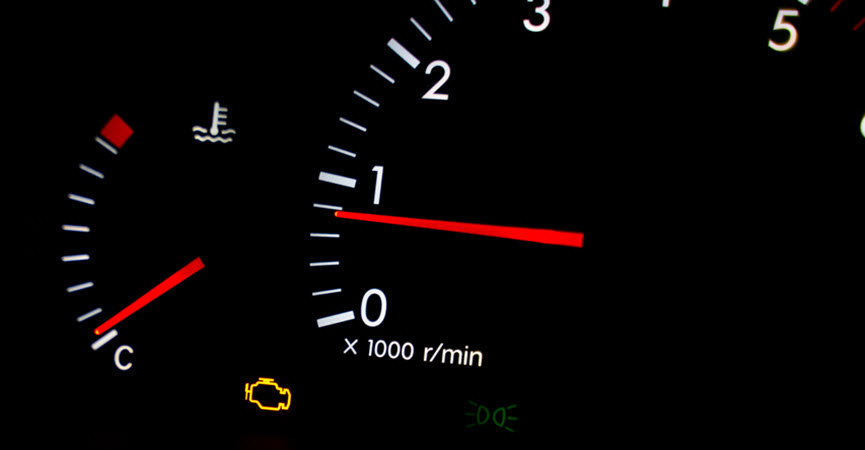
by Chris Limantour | May 1, 2022 | Audi Repair
Often, Audi vehicles have a camshaft tensioner that uses pressurized hydraulic oil to keep the timing belt running. The camshaft tensioner ensures that the belts maintain proper tension and remain tight during operation. The tensioner operates by receiving oil from the engine, allowing this mechanism to maintain tension and keep the belts running at peak performance.
As long as the tensioner does its job, the timing chain securely stays in place. However, this oil can seep or leak out of the tensioner, leading to serious problems. This is known as a camshaft tensioner leak. A camshaft tensioner leak typically indicates incorrect pressure levels in the breather and can lead to catastrophic engine damage, malfunctions, and complete breakdown of your Audi.
Causes Of Camshaft Tensioner Leak
The various common causes of a camshaft tensioner leak include:
- Natural wear and tear: The camshaft may begin to leak after prolonged usage. Having poor lubrication and continuous use can damage the rollers disrupting the timing of the camshaft and crankshaft.
- Overstretching: The tensioner can become overstretched, which will lead to improper movement of the belt. Overstretching could cause the engine to run rough; in turn, the piston can strike and damage the valves.
- Irregular oil change: It is essential to maintain regular maintenance, including changing the oil. Old oil can have a lot of debris build-up. These unwanted particles can stick between the rollers causing damage and disrupting the movement of the camshaft and crankshaft.
Symptoms Of a Camshaft Tensioner Leak
There are various ways to tell if your camshaft tensioner is damaged and leaking. The following includes the common warning signs:
- Unusual sounds: A tensioner leak can lead to a loose timing belt which can cause grinding, clicking, and ticking noises.
- Slow acceleration: A tensioner leak can cause the belt to slip due to improper tension, thereby affecting the engine response time.
- Heavy Exhaust Fumes: Smoke or abnormal-colored fumes coming from your exhaust can indicate that your timing belt is worn and needs to be replaced.
- Check Engine Light is on: Though the check engine light may come on for various reasons, there are many components connected to the engine for its proper function. A camshaft tensioner leak may also be a reason for it to come on as it could cause the engine to malfunction.
- Early/Premature Belt Wear: The camshaft tensioner is responsible for various things, including the timing belt that can wear out due to old and prolonged usage. However, the leak from the tensioner can cause the acceleration of belt damage and wear if the wear occurs earlier than usual.
- No start: Since it is the camshaft tensioner that keeps the proper tension on the timing belts and other components to keep your Audi engine running, a camshaft tensioner leak could lead to a loosened, snapped, or stretched timing belt. This directly affects its ability to manage the engine’s valves and pistons, resulting in timing issues that cause the engine to misfire. Pieces from the loosened or snapped timing belt can get lodged into other engine areas, thereby causing severe damage.
- Belt-driven components malfunction: Various accessories of your vehicle are linked to the engine by a belt system. If there is a break in this belt system, the associated accessories like the A/C system, alternator, and radiator will all malfunction.
The camshaft tensioner is a crucial component of the working mechanisms which keep your vehicle performing optimally. If you suspect that your Audi already has a camshaft tensioner leak, the only way to safely proceed is to take your vehicle to a certified Audi technician.
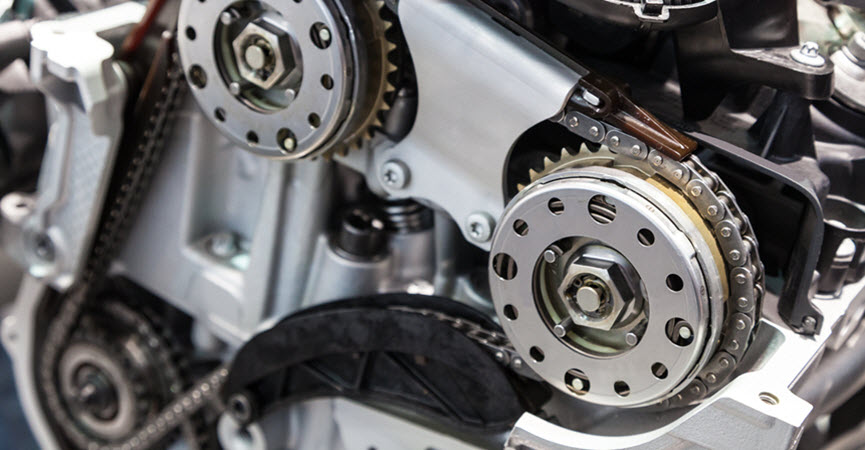
JCL Automotive for Quality Auto Maintenance and Repairs
At JCL Automotive, we have been a reputable European auto service center since 2005. We pride ourselves on performing high-quality maintenance and repair for all our clients. Our professionals are certified Audi experts with rich knowledge and years of experience, including fixing camshaft tensioner leaks in your Audi.
We are located in Hellertown, PA, and we also service the surrounding area of Allentown, Bethlehem, Easton, and Quakertown. Please call or visit our shop today to book your next service appointment.
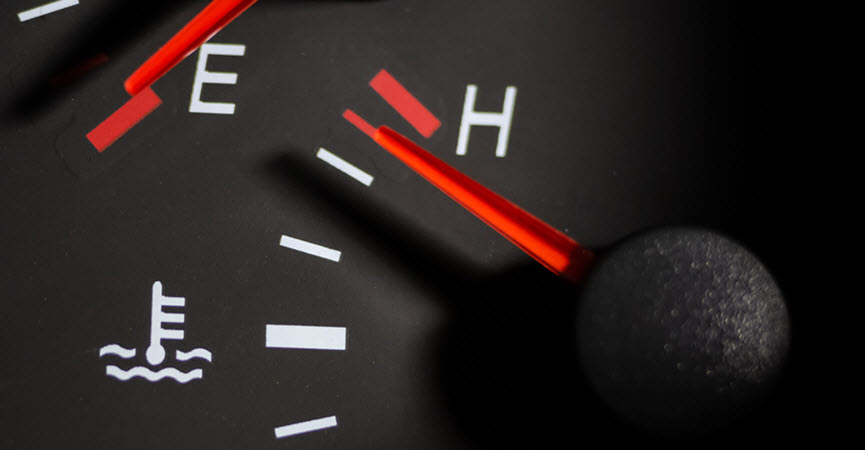
by Chris Limantour | Apr 15, 2022 | BMW Repair
The water pump is the heart of a BMW’s cooling system. It circulates the coolant through the engine block, cylinder heads, and radiator. If it fails, your BMW will overheat and cause major (and expensive) damage to the engine. Let’s discuss the functions of the water pump in your BMW, why it may fail and what to do when it fails.
What is the function of the water pump in a BMW?
The water pump is responsible for circulating coolant to keep your engine cool. (Coolant is usually made of antifreeze and water combined.) The pulley on the front of the water pump spins the impeller inside. The impeller is designed to push coolant liquid through the cooling system. As it passes through the system, it absorbs heat from the engine and then returns to the radiator to dissipate that heat.
Like many parts of a BMW, there are two types of water pumps: mechanical and electric. Mechanical pumps have been used for years, but electric pumps are quickly replacing them.
- Mechanical Water Pump: A mechanical water pump has a simple design with an impeller driven by a belt and pulley, usually attached to either the crankshaft or camshaft. As long as the engine is running there will be coolant being pumped throughout the cooling system.
- Electric Water Pump: An electric water pump runs only when needed by using an electric motor instead of a belt. When you start your car and begin driving, an electric signal tells the motor to turn on, which begins pumping coolant throughout the cooling system.
The Most Common Causes of a Water Pump Failure
- Wear and Tear: The most common reason for a water pump failure is due to age/wear. The bearings in the water pump eventually wear out, which causes the shaft and impellers to become loose. The loose pieces then rattle around the inside of the pump and cause damage to the internal components. If you are hearing a rattling or knocking noise coming from your engine bay, it’s a good idea to check your water pump for any signs of damage.
- Poor cooling system maintenance: The cooling system is responsible for circulating coolant through your engine to keep it at the right temperature. It also lubricates the bearings of the timing belt (or chain). It is important to check that this system is working properly without faults, so timely maintenance is necessary.
- Coolant leaks: Coolant is what keeps everything cool in your car’s engine. If you have a leak, this means that there won’t be enough coolant circulating through the system to properly and your engine can overheat. This can cause major damage.
- Worn Seals: Like most pumps, the water pump in your BMW has seals that prevent coolant from leaking out when it is being pumped through the engine block and cylinder heads. As those seals begin to wear out, you may begin to see puddles of coolant underneath your car after it has been parked for any length of time. Eventually, those worn seals will cause your water pump to fail altogether if they are not repaired or replaced on time.
- Coolant contamination: There could be debris floating around in your coolant reservoir and hoses. Dirt can build up on the impeller blades over time and cause clogs, leaks, and thick coolant.
Signs Your BMW Water Pump has Failed
If you notice your engine temperature gauge rising or steam coming out of your hood, pull over immediately and shut off your car. You should then call for a tow as soon as possible. You do not want to drive with an overheating engine, since it can lead to serious damage and expensive repairs.
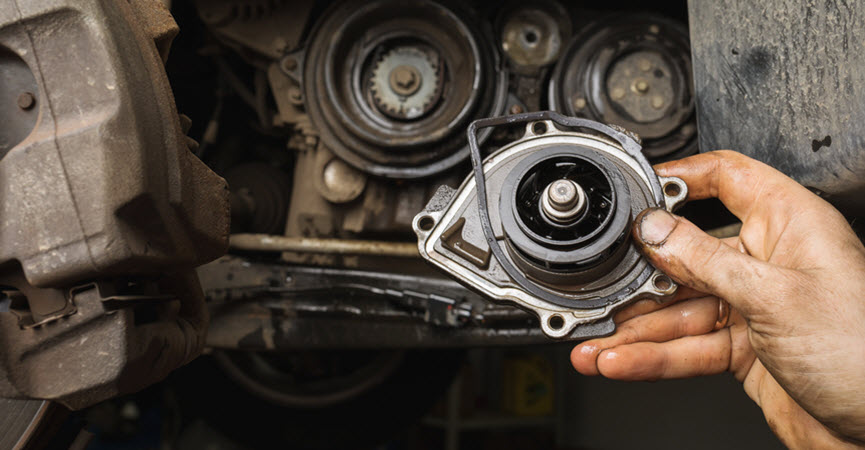
JCL Automotive can Help
As a leading service center for European auto owners, JCL Automotive prides itself on product knowledge, staff experience, and customer service. Located in Hellertown, PA, our technicians have the skills and product knowledge to work on a variety of European and import vehicle models including your BMW.
Our shop is outfitted for quick, convenient, and affordable maintenance on European brand vehicles. Call us on 484-851-3390 or stop by our shop today, let’s help get your BMW back on the road as soon as possible.





























































































